I Ching Dead Moon Cards by Luis Royo The long awaited new deck by Luis Royo, famous fantasy illustrator and author of the Black Tarot and the Labyrinth Tarot, this deck follows the format of the I Ching. The boxed deck includes 64 cards in full color and an instruction booklet.Journal of Chinese Philosophy, Vol 35, Nbr 2, June/2008 Xul Solar: Visions and Revelations In 1949, Jorge Luis Borges characterized the art of Alejandro Xul Solar (1887—1963) as both monumental and delicate at the same time, like a blend of invention and rigor, of ambition and modesty.” This beautiful book brings together approximately 150 works of art, books, documents, and manuscripts from Xul Solar’s personal archive as well as from public and private collections, providing the first in-depth study of this fascinating artist, one of the most influential in Latin American avant-garde art.
Essays by a distinguished team of scholars explore the following ideas about Xul Solar’s work: the artificial languages conceived by the artist; the occult visions relating to his art; the artist’s connection with music; and the relationship between the artist and Jorge Luis Borges. The book also includes an artistic and biographical chronology.
Bilingual (Spanish/English)Yijing, Shamanic Oracle of China: A New Book of Change 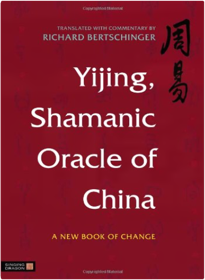 Lao Tzu: My Words Are Very Easy to Understand: Lectures on the Tao Teh Ching Cheng Man-ch'ing Lao-tzu: My Words Are Very Easy to Understand interprets the sayings of Lao-tzu, one of the earliest writers in Chinese history. His work describes the merest traces and marvels of the Tao, and promotes Non-action, concepts that are central to these unique teachings of thousands of years ago.Master of Five Excellences Cheng Man-ch'ing Professor Cheng Man-Ch’ing regarded a set of five disciplines—the "five excellences"—to be the mark of a well-rounded person: calligraphy, painting, poetry, t’ai chi, and medicine. Although he is best known for his teachings on the martial arts (in particular, his highly influential adaptation of t’ai chi), versatility was central to Cheng’s philosophy of life, and he encourage his students to combine artistry with scholarship. This inspiring book is a commentary on and working compendium of Cheng’s literary and pictorial interpretations of these subjects. Of interest to aficionados of Chinese art, culture, and history, Master of Five Excellences also offers internal techniques for practitioners of the martial arts, as Hennessy provides an insight into the rarely-glimpsed creative side of Cheng Man-Ch’ing.Master of Five Excellences Cheng Man-ch'ing Professor Cheng Man-Ch’ing regarded a set of five disciplines—the "five excellences"—to be the mark of a well-rounded person: calligraphy, painting, poetry, t’ai chi, and medicine. Although he is best known for his teachings on the martial arts (in particular, his highly influential adaptation of t’ai chi), versatility was central to Cheng’s philosophy of life, and he encourage his students to combine artistry with scholarship. This inspiring book is a commentary on and working compendium of Cheng’s literary and pictorial interpretations of these subjects. Of interest to aficionados of Chinese art, culture, and history, Master of Five Excellences also offers internal techniques for practitioners of the martial arts, as Hennessy provides an insight into the rarely-glimpsed creative side of Cheng Man-Ch’ing.New Archaeological Finds in China - Foreign Press -How to Read the Tarot: The Keyword System Sylvia AbrahamIn as little as one week's time, you could be amazing your friends with the accuracy of your insights, when you study the easy-to-learn Key Word system of Tarot reading! Here is a simple and practical guide to interpreting the symbolic language of the Tarot that anyone can quickly learn to use with any Tarot deck.Ritual Bronzes of Ancient China Phyllis AckermanThe Complete I Ching for the Millions Edward AlbertsonI Ching Prescriptions Adele AldridgeI Ching Prescriptions are a different way of consulting the I Ching. The traditional method for using the counsel of I Ching is by throwing three coins six times or by dividing and counting yarrow stalks to arrive at a hexagram for an answer to a question. This method of allowing chance to provide an appropriate response to what is on your mind at the time relies on a phenomenon that Carl Jung called synchronicity. Many people wonder how could anyone take seriously an answer to a question arrived at by tossing coins and decide that the I Ching is not for them. It doesn’t matter whether you believe in synchronicity or not. It doesn’t matter if you want to take the time to figure out the obscurity or understand the poetic symbolic language of the I Ching. When people dismiss the I Ching because of the method of relying on random chance they miss out on the philosophy that is imbedded within the I Ching that originated over five thousands years of Chinese culture. A philosophy that has survived for thousands of years has a message worth pondering. Since the philosophy of I Ching is based on nature and has lasted so many thousands of years and transferred over many cultures, why not benefit from its wisdom whether you believe in synchronicity or not? Find an I Ching Prescription for your need of the moment.The Shape of the Turtle: Myth, Art, and Cosmos in Early China Sarah AllanMany Chinese philosophic concepts derive from an ancient cosmology. This work is the first reconstructions of the mythic thought of the Shang Dynasty (ca. 1700- 1100 B.C.) which laid the foundation for later Chinese patterns of thought. Allan regards the myth, cosmology, divination, sacrificial ritual, and art of the Shang as different manifestations of a common religious system and each is examined in turn, building up a coherent and consistent picture. Although primarily concerned with the Shang, this work also describes the manner in which Shang thought was transformed in the later textual tradition.Dao De Jing: A Philosophical Translation Roger Ames, David Hall, Lao ZiIn 1993, archaeologists unearthed a set of ancient bamboo scrolls that contained the earliest known version of the Dao de jing. Composed more than two thousand years ago, this life-changing document offers a regimen of self-cultivation to attain personal excellence and revitalize moral behavior. Now in this luminous new translation, renowned China scholars Roger T. Ames and David L. Hall bring the timeless wisdom of the Dao de jing into our contemporary world.
In this elegant volume, Ames and Hall feature the original Chinese texts of the Dao de jing and translate them into crisp, chiseled English that reads like poetry. Each of the eighty-one brief chapters is followed by clear, thought-provoking commentary exploring the layers of meaning in the text. This new version of one of the world’s most influential documents will stand as both a compelling introduction to Daoist thought and as the classic modern English translation.Yuan Dao: Tracing Dao to Its Source Roger T. Ames, D.C. LauPhilosophical and compelling, Yuan Dao is a stunning accomplishment of Daoist literature— now available for the first time in English
Written around 140 b.c., and presented to a young Chinese Emperor by a beloved uncle—a philosopher, scholar, and patron of the arts—Yuan Dao distills and explains in one remarkable work the first several hundred years of Daoist thought. Drawing from and expanding upon the popular Tao-Te Ching and Chuang-tzu texts, this singular work was written to show the inclusionary aspects of Daoism, that one should appreciate the contribution all things make to the well-being of the whole; Yuan Dao was also created as advice to a ruler, on the beauty of uniting a disparate people under one government without destroying their individuality.
Presented here by two of the world's foremost translators of Chinese classics, this unique edition is the only English-language translation in print and features the Chinese text on facing pages. Insightful and fascinating, here is a glimpse into the early Han Dynasty, and into a way of thinking that has been, and continues to be, characteristically Chinese.Reflections on the I Ching Allan W. AndersonGeorge Santayana once commented that, "The concept of Spirit does not interest me, except as a technicality; it is the life of Spirit that I'm talking about. . ." And so too with Professor Allan W. Anderson whose Reflections on the I Ching is written precisely for the one engaging the life of Spirit. Throughout his career, Professor Anderson tirelessly explored and shared his understanding of the Perennial or Wisdom Tradition whose essential features remain the same in every classical religion regardless of culture. This collection of Professor Anderson's work on the I Ching, the earliest of the Chinese classics, serves as a companion volume to his Self-Transformation and the Oracular. The transcription of a short lecture series will assist the student who is meeting the I Ching for the first time. The articles delve deeply into the original text and so provide the philosophical underpinnings for the practice outlined in the extended essay. Every scripture has its particular genius. Arguably the genius of the I Ching is its focus on making adequate passage from birth to and through death through embodying timely action and awakening to the interplay of fate and destiny. The serious student of the Wisdom Tradition will richly benefit from the sagely interpretation Professor Anderson provides with Reflections on the I Ching.SELF-TRANSFORMATION AND THE ORACULAR Allan W. Anderson"Self-Transformation and the Oracular
A Practical Handbook for Consulting the I Ching and Tarot presents
a genuinely dramatic challenge to the reader: to examine and to
test oneself through consulting the preeminent oracles of the East
and the West — the I Ching and the Tarot. It offers a model for
authentic self-change based upon wisdom traditions which are at
root consistent in their vision of ideal possibility for human nature:
human nature understood as essentially good, with collapse into
anxiety unnecessary. It teaches spiritual self-inquiry, providing a
practical way of discovering how one may come to live in accord
with Ultimacy and fulfi ll one’s own destiny. It demonstrates that
destiny and freedom can become playmates in this venture that is
a human life. In this work, erudition and scholarship return to their
proper role of supporting meaningful self-inquiry and practice."111 Escalones Hacia el Cielo Ricardo AndreéAra, 64 Reflexiones ante el altar de Cristo Ricardo AndreéEl Andariego, 7+1 Ricardo AndreéEl Testimonio de Judas Ricardo AndreéTao Crístico, 64 de los 81 Aforismos del Tao Te King escritos por el Maestro Lao Tse Ricardo AndreéTratado I Ching, El Canon de las Mutaciones "El Séptimo Tiempo" Ricardo AndreéI CHING TAL COMO ES, EL ROCCO GUSTAVO ANDRESUna nueva traduccion del I Ching arcaicoYijing / El libro de los cambios AnonimoEl Yijing (I Ching) o Libro de los cambios fue en su origen un manual de adivinacion que gradualmente, con el tiempo se convirtio en el depositario de toda una filosofia practica para afrontar las vicisitudes de la vida. Al largo periodo durante el cual tiene lugar su elaboracion, iniciada aproximadamente en el siglo IX a.C, hay que anadir toda una ingente tradicion de glosas y comentarios que se han ido agregando a lo largo de los siglos, por los mas diversos autores, hasta llegar a nuestros dias; lo que hace que sea el texto que mayor influencia ha tenido en China durante los ultimos tres mil anos, sin olvidarnos del gran eco que ha ejercido sobre la cultura occidental. Esta edicion es la primera traduccion directa y completa que se hace del chino a nuestra lengua. Para llevarla a cabo, los traductores, profundamente familiarizados con la lengua y cultura chinas, han tenido en cuenta los ultimos hallazgos lingüisticos y arqueologicos recogidos por los expertos en los ultimos cincuenta anos, ademas de un detallado estudio comparativo del texto con otras obras de la misma epoca. Pero tambien, por primera vez, se agregan a los aforismos de las sesenta y cuatro figuras y a las Diez Alas los celebres comentarios de Wang Bi (226-249), uno de los pensadores chinos mas importantes de todos los tiempos. Wang Bi fue un filosofo taoista, legalista y confuciano que, a pesar de morir prematuramente a los veintitres anos, ejercio con sus glosas una enorme influencia durante mas de siete siglos. Despues, estas serian reemplazadas por las versiones oficiales confucianas, para permanecer mas tarde olvidadas durante diez siglos. El rescate de su gran vision eclectica del Yijing, devuelve este gran clasico de China a sus fuentes mas autenticas y originales.The Epic of Gilgamesh AnonymousOriginally the work of an anonymous Babylonian poet who lived more than 3,700 years ago, The Epic of Gilgamesh tells of the heroic exploits of the ruler of the walled city of Uruk. Not content with the immortality conveyed by the renown of his great deeds, Gilgamesh journeys to the ends of the earth and beyond in his search for eternal life, encountering the wise man Uta-napishti, who relates the story of a great flood that swept the earth. This episode and several others in the epic anticipate stories in the Bible and in Homer, to the great interest of biblical and classical scholars. Told with intense feeling and imagination, this masterful tale of love and friendship, duty and death, is more than an object of scholarly concern; it is a vital rendering of universal themes that resonate across the ages and is considered the world's first truly great work of literature.
@UrukRockCity All the ladies want to get it on now that I’ve slain the demon. But I must decline. I’m a clean man these days.
I just can’t win with women. Before, nailing all the ladies was bad. Now I refuse to seduce, and the Gods send a giant bull to kill me?
From Twitterature: The World's Greatest Books in Twenty Tweets or LessMeditations on the Tarot AnonymousPublished for the first time with an index and Cardinal Hans Urs von Balthasar's afterword, this new English publication of Meditations on the Tarot is the landmark edition of one of the most important works of esoteric Christ-ianity. Written anonymously and published posthumously, as was the author's wish, the intention of this work is for the reader to find a relationship with the author in the spiritual dimensions of existence. The author wanted not to be thought of as a personality who lived from 1900 to 1973, but as a friend who is communicating with us from beyond the boundaries of ordinary life.Philosophy of the I Ching Carol K AnthonyChapter 1. This book presents the cosmological background of the I Ching and its many concepts. It describes the Tao, the binary system of numbers that forms the 64 hexagrams of the I Ching, the Sage who speaks through it, the I Ching view of existence, and the hidden Cosmic order that underlies all apparent chaos. Thus rather than: 'In the beginning there was chaos,' one sees that 'In the beginning there was order.' Chapter 2 describes what in the I Ching is called the 'superior man' or 'noble Self' as the unconditioned true self; the 'inferior man' is seen as the socially constructed self-image, or ego. The 'superiors' or 'helpers' described by the I Ching are revealed as inherent character-traits, such as natural modesty, natural kindness, and the capacity for patience and perseverance. The 'inferiors' are discussed as aspects of the bodily self that speak, as when they say, 'I am hungry, I am tired.' Also discussed are the many references in the I Ching text to cultivating the true self and that imply self-development to be necessary if we are to learn how to harmonize ourselves with the way the Cosmos works.// Chapters 3 and 4 discuss the anonymous wise Sage who speaks through the I Ching, and the attitudes that are important on the part of the I Ching student if he is to gain the Sage's help.// Chapters 5, 6, and 7 describe the process of self-cultivation undertaken when we accept the Sage as our teacher. It describes how the Sage teaches us mostly in real-life learning situations, so that what is perceived in the head is transmitted to the heart as wisdom. It also describes many important I Ching principles, such as coming-to-meet-halfway, and working through the power of Inner Truth.// Chapters 8 and 9 describe the more technical aspects of the I Ching within the context of its historical development: the development of the lines, trigrams, and hexagrams. It also describes its traditional methods of use, but gives an entirely new method discovered by the author that enables the student to understand its messages very precisely.Guide to the I Ching Carol K. AnthonyUsed by its readers as an oracle, this book, based on the terminology used in the classic Wilhelm/Baynes translation, puts the I Ching into modern language. This allows its wisdom to be applied to the situations of everyday life. Decoded are words such as the superior and inferior man, and the inferiors, which refer respectively to the true self, the ego, and the bodily self. Expressions such as crossing the great water and seeing the great man are seen to mean getting past the danger of giving up on oneself, and remembering the potential for good in every person. Understanding such words and phrases occurs in the context of the reader's following his/her innermost feelings, since it is these that bring one into harmony with the ever-loving Cosmos and its protective powers.A Guide to the I Ching Carol K. AnthonyUsed by its readers as an oracle, this book, based on the terminology used in the classic Wilhelm/Baynes translation, puts the I Ching into modern language. This allows its wisdom to be applied to the situations of everyday life. Decoded are words such as the superior and inferior man, and the inferiors, which refer respectively to the true self, the ego, and the bodily self. Expressions such as crossing the great water and seeing the great man are seen to mean getting past the danger of giving up on oneself, and remembering the potential for good in every person. Understanding such words and phrases occurs in the context of the reader's following his/her innermost feelings, since it is these that bring one into harmony with the ever-loving Cosmos and its protective powers.I Ching, The Oracle of the Cosmic Way Carol K. Anthony, Hanna MoogThis I Ching was written under the guidance of the Sage that speaks through the I Ching oracle. It shows the Cosmos as a system of harmony, the principles of which are clearly described in its 64 hexagrams.// The purpose of consulting the oracle is to inquire, before an undertaking, whether you are in harmony with the Cosmic Way. When this is confirmed by the words 'success,' or 'good fortune,' whatever you do will be supported by the invisible helping forces of the Cosmos. When your attitude is discordant, the oracle predicts 'misfortune,' meaning that these helping forces will not support what you do. The answers of the oracle are not to be taken as fortune-telling, but as reflecting the cosmic consequences of your attitude toward your goal. All counsel given by the I Ching is directed toward helping you return to harmony with the Cosmos. To do this you are being given a deeper understanding of the principles of Cosmic Harmony that are involved in the issue at hand. In the light of these principles you will be able to recognize particular mistaken ideas that are the cause of your discord, or misfortune. This book is the first I Ching oracle that shows you how to deprogram the obstructing ideas, and thus reunite with the Cosmic Harmony. / Also presented in this book is an innovative method of communicating directly with the Sage that speaks through the I Ching. This method allows you to clarify its message until it assures you that you have reached an adequate understanding. Regularly consulting the I Ching in this way leads to clarifying insights into your life's purpose, and to a pronounced increase in your own creativity. It was through this method, in combination with meditations and dreams, that the Sage gave the authors the completely new perspective on the nature of the Cosmos, human nature, and the place of humans within the Cosmic Whole described here. Rather than presenting you with fixed answers to every problem, this book allows the Cosmic Teacher called 'the Sage,' to show you your own path to insight and inner guidance.The Other Way: Meditation Experiences Based on the I Ching Carol K. AnthonyThis book is a description of the method of meditation that the author learned through consulting the I Ching. It is also a collection of 250 experiences in meditation that were included because of their insightful and universal nature. They revealed the gradual lifting away of the author's hidden fears and doubts, one by one, that inhibited her from following her own inner sense of truth. This book shows the role of fear and doubt in the formation of the ego, and how they project themselves into reality. Freeing oneself from them makes the body healthy, the mind free, and the heart open to receive and to express love.The Spirit of the Chinese Character: Gifts from the Heart Barbara Aria, Russell Eng GonFrom the fluid strokes in the characters denoting "grace," "enlightenment," and "tranquility" to the complex meanings inherent in the words for "honor," "love," and "wisdom," the richness and depth of the Chinese language come alive in this compact, elegant volume of 40 beautifully rendered ideograms. Every character is accompanied by a simple chart showing its physical composition, stroke by stroke, as well as an informative text describing the myriad linguistic components from which its meaning is derived.
As a result, the reader can grasp each character's significance and connection to centuries of Chinese philosophy and, ultimately, gain an understanding of the language beyond a mere familiarity with linguistic symbols. Complete with two-color printed end-papers and a charming full-color bookmark, The Spirit of the Chinese Character makes a lovely gift or keepsake volume, sure to inspire a fascination with the complexity of an incomparably beautiful and evocative language.Otras mutaciones del I Ching González Cosío ArturoLa compleja sencillez de los versos que encierran estas páginas es el resultado de un conocimiento íntimo del pensamiento oriental que Arturo González Cosío ha asimilado en la teoría y en la práctica. Con la ambigua sonrisa de los budas, González Cosío contempla las mutaciones del tiempo y el espacio y desgrana sin prisa los poemas que llegan hasta nosotros como testimonio de su experiencia.The Oracle, The Journal of Yijing Studies, Vol. 2. No. 7 several authorsThe Oracle, The Journal of Yijing Studies, Vol. 2. No. 8 several authorsThe Oracle, The Journal of Yijing Studies, Vol. 2. No. 9 several authorsAncient Sichuan: Treasures from a Lost Civilization Robert BagleyThis extraordinary catalogue accompanies a major traveling exhibition of 128 works of bronze, jade, and clay dating from the thirteenth century B.C. to the second century A.D. The majority of these stunningly sophisticated works of art—among the most unusual and spectacular produced anywhere in the ancient world—all come from a startling archaeological discovery made just fourteen years ago at the previously unknown site of Sanxingdui in Sichuan province. The discovery of this Bronze Age civilization fundamentally changes our understanding of Chinese history.
Representing fifteen hundred years of cultural production, these striking objects are extraordinarily varied, ranging from a monumental standing figure and an almost life-size bronze horse to ritual vessels, masks, and bronze heads of fantastic-looking supernatural beings, finely honed jade knives and ritual blades, and marvelous clay statuettes. Most have never before been seen in the United States. The exhibition and catalogue represent a unique international effort to continue the study of ancient Sichuan.
Under the leadership of Robert Bagley, an international team of scholars contributes eight essays on the archaeological discoveries at Sanxingdui, the art historical importance of these objects, and the new history of ancient China they tell. Contributors are Michèle Pirazzoli-t'Serstevens, Jessica Rawson, Lothar von Falkenhausen, Alain Thote, Jenny F. So, Michael Nylan, and the Seattle Art Museum's Curator of Chinese Art, Jay Xu. In addition to the essays, there are individual entries for each object, nearly all of which have been newly photographed for this publication.
Ancient Sichuan contributes to a revolutionary change in perceptions of ancient Chinese civilization, providing an unprecedented opportunity to explore the art, material culture, and spiritual life of ancient China.
EXHIBITION SCHEDULE:
Seattle Art Museum, Seattle
May-August 2001
Kimbell Museum of Art, Fort Worth
September 2001-January 2002
Metropolitan Museum of Art, New York
March-June 2002
Royal Ontario Museum, Toronto
August-November 2002The Laws of Change: I Ching and the Philosophy of Life Jack M. BalkinAs important to Chinese civilization as the Bible is to Western culture, the I Ching is one of the oldest treasures of world literature. Yet despite many commentaries written over the years, it is still not well understood in the English-speaking world. In this masterful new interpretation, Jack Balkin returns the I Ching to its rightful place as a book of wisdom that teaches how to live one’s life in a changing and confusing world.
The I Ching is nothing less than an explanation of the laws of change in the universe and of how human beings can learn to live in harmony with them. Balkin presents it as a work of practical philosophy and ethics, concerned with helping people to cultivate their characters, achieve emotional balance, and maintain personal integrity in the face of adversity and ever-changing circumstances. He shows how the I Ching’s divinatory system helps the reader discover the book’s underlying philosophy through applying its insights to everyday problems.
Balkin’s comprehensive and perceptive commentaries highlight a clear, understandable version of the core text of the I Ching that preserves its striking imagery while remaining faithful to the long tradition of ethical interpretations of the work. The Laws of Change: I Ching and the Philosophy of Life affords us the opportunity to experience a world masterpiece anew with unprecedented depth and understanding.The Literature of Possibility, A Study In Humanistic Existentialism Hazel E. BarnesThree Thousand Years of Chinese Painting Richard Barnhart, Yang Xin, Nie Chongzheng, Professor James Cahill, Lang Shaojun, Hung Wu, Richard M. Barnhart, James Cahill, Wu HungAn illustrated and comprehensive account of the history of Chinese painting from prehistoric times to the 21st century. It should be of interest to students and general readers who wish to gain an in-depth knowledge of Chinese painting.I Ching: Walking your path, creating your future Hilary BarrettI-Ching has been in continuous use for around 3,000 years. The Chinese Zhou people developed this Book of Changes. The I-Ching is an ancient Chinese oracle, a proven tool of divination that can help readers foresee the future. It is a complete guide to change: understanding it, moving with it, creating it. It describes change that is transformative and seasonal, global and personal, incremental and revolutionary. It tells stories of great historical change, and it sketches tiny vignettes of everyday life—marrying, surviving an illness, repairing a well.
The beautifully designed pages of this book, along with its striking flexibound cover will appeal to the reference and gift markets. This manual includes all 64 hexagrams with key questions delineating the main themes, and step-by-step instructions on how to cast a hexagram, with three coins or with yarrow stalks or beads. The book also offers simple techniques for discovering the personal meaning of the answers you receive and suggests ways to carry your readings into daily life.
This attractive, practical I Ching for divination pays homage to the original text while supporting the modern user with lucid explanations and guidelines for interpreting the oracle.The I Ching or Book of Changes Richard Wilhelm / Cary F BaynesThe I Ching, or, Book of Changes Translated by Richard Wilhem and Cary F. BaynesThe I Ching, or Book of Changes, a common source for both Confucianist and Taoist philosophy, is one of the first efforts of the human mind to place itself within the universe. It has exerted a living influence in China for 3,000 years, and interest in it has been rapidly spreading in the West."Symbolic Reference" and Prognostication in the Yijing James Behuniak, Jr.Strategy and Change: An Examination of Military Strategy, the I-Ching and Ba Gua Zhang Tom BisioLife is Strategy!
STRATEGY & CHANGE, by Tom Bisio, is an engaging meditation on the application of strategy to all facets of human interaction. Of equal interest to the business person, military theorist, martial artist, or anyone negotiating the uncertainties of the changing world.
How do you achieve success and prevail in a chaotic world? Chinese strategists have grappled with this fundamental question for centuries. Chinese thought advocates understanding the natural order of the world in order to harmonize and flow with it. One of the key ideas that permeates both The Art of War and the I Ching is that success is achieved by blending with and adapting to the constant change manifesting around us. By aligning oneself with the changing circumstances, opportunity and success unfold naturally.
STRATEGY & CHANGE examines military strategy in connection with the I Ching (the Classic of Change) and the internal martial art Ba Gua Zhang (Eight Diagram Palm).
By understanding patterns of change, one can understand how to function in crises situations or in times of upheaval and uncertainty. The hexagrams of the I Ching can be understood, not as symbols for divination, but instead as coded representations of specific but fluid situations in which unwise actions can undermine favorable circumstances, while wise actions can salvage seemingly hopeless ones. Looked at in this way, the hexagrams not only signify discrete states of change occurring in moments in time, but also larger, more global patterns of change, while simultaneously indicating flexible decision-making strategies that can help one prevail in the midst of these changing circumstances.
Ba Gua Zhang is a self-defense art and health preservation system whose physical movements and combat strategies stem from the I Ching and the ancient book of strategy: The Art of War. Hand%u2013to-hand combat and warfare can be viewed broadly as crises situations in which failure to adapt can be fatal. Hence they have much to teach us about recognizing opportunity and taking advantage of favorable conditions.
Explored in detail:
%u2022 The Eight Intentions/Dispositions - a unique, flexible and organic system of strategic thinking used for centuries. These eight paradigms can be applied to any field of endeavor: social, political, business, self-defense or military. Examples from the martial arts and military history clarify this flexible system and make it immediately accessible and practical to the reader.
%u2022 I Ching theory and its relevance to Ba Gua Zhang as a martial art.
%u2022 An analysis of The 36 Stratagems, a Chinese primer of strategy.
%u2022 Examples of successful strategies from history%u2019s great commanders including Alexander, Napoleon, Shaka Zulu, Hannibal, Belisarius, Sun Tzu and Mao Tze Tung.
%u2022 Advice from the renowned Chinese strategist Zhuge Liang, whose insights into strategy and leadership are widely studied by Asian businessmen today.
World-renowned martial artist, acupuncturist and teacher Tom Bisio is the author of A Tooth From the Tiger%u2019s Mouth (Simon & Schuster), The Essentials of Ba Gua Zhang and Zheng Gu Tui Na: A Chinese Medical Massage Textbook. Tom is the founder of New York Internal Arts (www.newyorkinternalarts.com).Learn to Write Chinese Characters Johan BjorkstenAn introductory manual for writing Chinese characters specifically designed for English-speaking readers. The author guides the reader through the fundamentals of writing, introduces the various scripts used in China and demonstrates how to write with a fountain pen rather than a brush.I Ching, the Book of Changes John BlofeldTaoísmo, La búsqueda de la inmortalidad John BlofeldI Ching Frits BlokThis version of the "I Ching" includes oracle sticks—a simple, easy-to-read method of getting the hexagram combinations necessary to interpret the question. Frits Blok's translation stays as close as possible to the original ancient Chinese. The sturdy, elegant box has a magnetic closure to keep the oracle sticks and book in one easy-to-store place.The I Ching, Landscapes of the Soul: Revisiting an Ancient Chinese Oracle with Cards Frits BlokThe Book of Chinese Beliefs Frena BloomfieldEnter the world of Chinese Ancient Beliefs and Modern Realities
Earth magic, ghost weddings, passports to the after-life — the spirit of ancient Chinese beliefs still exists side-by-side with everyday modern reality, and it affects every aspect of Chinese life, from diet and decor, to getting married and opening a business.
The Book Of Chinese Beliefs shows how the Chinese people have managed to preserve their beliefs for thousands of years, while at the same time successfully adapting to the contemporary high-tech era. Here are fascinating explanations of customs that take you far beyond the superficial cliches about Chinese culture:
— Tong Sing — The "Know Everything Book," a bible of the practical and the spiritual in everyday life
— Hsien — Powerful guardians, gifted in the arts of healing, wise in mystical studies
— Fung Shui — Chinese Earth Magic, appropriate placement of objects to create the best energy flow for an environment
— I Ching — One of many methods of reading fate and telling fortunes
— Chi — The mysterious healing energy that animates all of life
— Tongs — Ancient secret mystical societies that have dangerous modern counterparts
This wonderful compendium of spiritual practices, healing arts and day-to-day attitudes is the perfect introduction to the mysteries of Chinese life.Sung Dynasty Uses of the I Ching Peter Bol, Joseph A. Adler, Don J. Wyatt, Kidder SmithThe I Ching, or Book of Change, has been one of the two or three most influential books in the Chinese canon. It has been used by people on all levels of society, both as a method of divination and as a source of essential ideas about the nature of heaven, earth, and humankind. During the eleventh and twelfth centuries, Sung dynasty literati turned to it for guidance in their fundamental reworking of the classical traditions. This book explores how four leading thinkers—Su Shih, Shao Yung, Ch'eng I, and Chu Hsi—applied the I Ching to these projects. These four men used the Book of Change in strikingly different ways. Yet each claimed to find in it a sure foundation for human values. Their work established not only new meanings for the text but also new models for governance and moral philosophy that would be debated throughout the next thousand years of Chinese intellectual history. By focusing on their uses of the I Ching, this study casts a unique light on the complex continuity-within-change and rich diversity of Sung culture.The Fundamental Principles of Yi-King, Tao: The Cabbalas of Egypt and the Hebrews Veolita Parke BoyleThe Divine Matrix: Bridging Time, Space, Miracles, and Belief Gregg BradenBetween 1993 and 2000, a series of groundbreaking experiments revealed dramatic evidence of a web of energy that connects everything in our lives and our world—the Divine Matrix. From the healing of our bodies, to the success of our careers, relationships, and the peace between nations, this new evidence demonstrates that we each hold the power to speak directly to the force that links all of creation. What would it mean to discover that the power to create joy, to heal suffering, and bring peace to nations lives inside of you? How differently would you live if you knew how to use this power each day of your life? Join Gregg Braden on this extraordinary journey bridging science, spirituality and miracles through the language of The Divine Matrix.The Magical I Ching J. H. BrennanIt's one of the oldest books on Earth, and it has a message for you. The "I Ching" is a mystical collection of ancient wisdom, generally explained as a simple look-up-the-answer method of fortune telling. Now, J.H. Brennan reveals to Western practitioners the magical spiritual techniques behind this most ancient oracle, in "The Magical I Ching."
This is a unique, exciting, and easy-to-use version of the ancient oracle. Using the information in "The Magical I Ching," you will be able to contact the spirit sage waiting to tell you the inner meaning of any of the six-line symbols you bring forth (the hexagrams) and how that meaning can change your life.
"The Magical I Ching" explains the history of the "I Ching" and how to develop the symbols by using several different methods, including using six sticks or wands, sixty-four wands, eight coins, or the popular three-coin technique. The book analyzes each of the possible sixty-four hexagrams that form the basis of the oracle, in clear, modern language anyone can understand.
That is just the beginning. The "I Ching" has survived for so long because of its spirituality. You'll learn how to use the book to enter astral doorways to mystic realms of reality. It will allow you to create a new framework for operations of real magic. You'll probe the deepest mysteries of Eastern esoteric thought. It even shows you ways to put your life on a new and better course.
After 5,000 years, the "I Ching" remains one of the most popular sources of spiritual wisdom in the world. If it puzzled you in the past, you'll be able to understand it at the deepest level possible when you read "The Magical I Ching.The Whole Heart of I Ching John Bright-FeyThe I Ching is one of mankinds first attempts at placing itself amid the chaos of the ever-changing Universe. It is a powerful tool for personal transformation and empowered action. Its inner secrets, closely guarded for more than 3,000 years, have only been available to a select fewuntil now. The Whole Heart of I Ching is a unique presentation of the hidden mysteries of the Classic of Change. The powerful methods of I Ching meditation presented here stimulate creativity and boost intuition. Readers will learn how to decipher the complex imagery of the cantos, convert daily thoughts and actions into the mystic language of the I Ching, and experience profound levels of insight in any situation.Fengshui in China: Geomantic Divination Between State Orthodoxy and Popular Religion Ole BruunAmulets and Talismans E.A. Wallis BudgeEmpowered Writing: Exorcistic and Apotropaic Rituals in Medieval China Stephan Peter BumbacherEmpowered Writing explores the inherent powers of Chinese talismans, petitions, registers, and holy scriptures, presenting a systematic study of their exorcistic and apotropaic properties. The book divides into three parts: tallies, petitions, and scriptures all inherently empowered since they originate from the very same primordial energy as Dao, the heavens, and highest gods. Tallies emerge as certificates of legitimation, used both in the imperial government and in religion. Petitions and registers, on the other hand, are writings addressed to higher ranking spirits to control demons, disease, and misfortunes. Scriptures, third, contain power even in their physical presence: entrained with superior spiritual beings, they can exorcize evil spirits and negative energies. This feature holds also true in Buddhism, where the readers of sutras can count on the support of unseen guardian buddhas and bodhisattvas. Using a vast arsenal of original sources, the book traces the unfolding and transformation of empowered writing from the Warring States period through the Six Dynasties, closely examining the different kinds of writing, their uses, and interpretation as well as relating uniquely Daoist features to imperial and Buddhist usages. The book is pathbreaking in its endeavor and stunning in its depth of analyis. It is a must for all China historians and scholars of religion.Chinese art Stephen W BushellThis is a reproduction of a book published before 1923. This book may have occasional imperfections such as missing or blurred pages, poor pictures, errant marks, etc. that were either part of the original artifact, or were introduced by the scanning process. We believe this work is culturally important, and despite the imperfections, have elected to bring it back into print as part of our continuing commitment to the preservation of printed works worldwide. We appreciate your understanding of the imperfections in the preservation process, and hope you enjoy this valuable book.China's Dragon Robes Schuyler CammanThis is a long-awaited reprint of the major work first published in 1952. China's Dragon Robes is a scholarly survey of the dragon-patterned robes worn by nobles and officials in China during the later dynasties. Intended as a source book on a major phase of Chinese costume, it is based on translations from many Chinese sources and on the author's personal studies of existing examples of dragon robes in the USA and in China.
Although many dragon robes have found their way into Western museums, the little information concerning them which has appeared in exhibition catalogs and monographs has been largely devoted to describing the robes as examples of fine textile works. Dr. Cammann here considers the evolution of the robes, their further development in the Qing dynasty, their function in their own times, their symbolism, the techniques employed in making them, including weaving and dyeing, and their place in Far Eastern culture in general.
The thoroughly documented and annotated text, supplemented by carefully chosen illustrations, offers museum curators, historians, and students of Oriental Art a basic discussion of an important, but hitherto neglected chapter in China's cultural history.Chinese Hexagrams, Trigrams and the Binary System Schuyler CammannThe Magic Square of Three in Old Chinese Philosophy and Religion Schuyler CammannThe Origin of the Trigram Circles in Ancient China Schuyler CammannChi Gung: Chinese Healing, Energy and Natural Magick L.V. CarnieYou possess the ability to tap a bottomless well of physical and psychic energy (called "chi" in Chinese). With it you can harness the magickal power of the universe. How do you do it? By learning the ancient Chinese art of breath, posture, and sensory awareness as explained in Chi Gung by L. V. Carnie.
As you learn this system to direct your flow of chi, you will be able to achieve ultimate health and things you have only dreamed of:
—Look and feel younger
—Add healthy years to your life
—Progress faster in martial arts training
—Develop different types of psychic ability: heal at a distance, talk with spirits,
move objects with your mind
—Increase your fitness level
—Help damaged tissue heal more quickly
—Improve sexual performance
—Learn to control your body temperature
—Bond with your pets or with animals in the wild
Chi Gung is filled with simple but effective exercises for mind, body, and spirit that will open your flow of chi as they open you to a whole new world of possibilities. No other chi gung self help book covers such a broad range of material or presents the actual training techniques for mastering the more advanced skills.
The exercises include simple stretches and slow movements with creative visualization and breathwork. One technique that is fully explained is called the small circulation, or the microcosmic cycle. It will teach you to circulate your chi around your body and head without having it enter your arms or legs. Another technique, the grand circulation or heavenly cycle, teaches you to move chi throughout your entire body. It's not difficult, and you can do it no matter your current level of health or fitness.
The powerful techniques here can be used alone or within any spiritual or magical system. Add them to what you are doing today!El Tao Te King de Lao Tse Translated by Adolfo P. CarpioT'ai Shang Kan-Ying P'ien Teitaro Suzuki and Dr. Paul CarusOráculo y Sabiduria; Guía para el estudio del I Ching Olivia CattedraEarly Chinese Writing Frank H. ChalfantSeven Collections of Inscribed Oracle Bone Frank H. ChalfantShang Civilization K. C. ChangThe Shang Dynasty 1523-1027 BC The Shang is the earliest Chinese dynasty for which we have written evidence.Studies of Shang Archaeology: Selected Papers from the International Conference on Shang Civilization K. C. ChangUnderstanding Reality Po-Tuan ChangBamboo Oracle Chao-Hsiu ChenUsing the 64 hexagrams of the I-Ching as its basis, this kit is intended to provide spiritual guidance for daily life. The system is simple; choose six card images to create a hexagram, then consult the book for guidance on the question at hand. For deeper insight, use the bamboo divining sticks.How to Form a Hexagram and Consult the I Ching Shih-chuan ChenInquiring into the Primary Model: Yijing and the Onto-Hermeneutical tradition Chung-Ying ChengOn the Mathematical Significance of the Chinese Ho T'u and Lo Shu David Chin-Te ChengThe Beginnings of Chinese Civilization Li ChiAwaken Healing Energy Through The Tao: The Taoist Secret of Circulating Internal Power Mantak ChiaThis unique and comprehensive book reveals the Taoist secret of circulating Chi, the generative life force, through the acupuncture meridians of the body. Illustrated with detailed diagrams that aid the development of a powerful energetic flow, for psychological and spiritual health and balance.Chinese Leadership Wisdom From The Book of Change Mun Kin ChokStill used today, the Yijing has been used as a book of divination for more than three thousand years in China. This book draws on the wisdom of leadership within the framework of the Yijing to indicate how a leader should act in different situations. Critical analysis of the 64 hexagrams, the first of its kind, offers lucid explanations of the hexagram statements. Reinterpreted in a logical and scientific manner, this Chinese classic provides modern leaders with food for thought.Oracle Bone Collections in the United States Hung-hsiang ChouUnderstanding Chinese: A Guide to the Usage of Chinese Characters Rita M. ChoyThis straightforward guide explains how Chinese characters are used and expressed in combinations; how sentences are formed; and how to say the same phrase in Mandarin or Cantonese.Read and Write Chinese: A Simplified Guide to the Chinese Characters Rita Mei-Wah ChoyAn Anthology of I Ching W. A. Sherril and W. K. ChuAstrology of I Ching W. K. (W. A. Sherrill, Trans.) ChuDay of Empire: How Hyperpowers Rise to Global Dominance—and Why They Fall Amy ChuaIn a little over two centuries, America has grown from a regional power to a superpower, and to what is today called a hyperpower. But can America retain its position as the world’s dominant power, or has it already begun to decline?
Historians have debated the rise and fall of empires for centuries. To date, however, no one has studied the far rarer phenomenon of hyperpowers—those few societies that amassed such extraordinary military and economic might that they essentially dominated the world.
Now, in this sweeping history of globally dominant empires, bestselling author Amy Chua explains how hyperpowers rise and why they fall. In a series of brilliantly focused chapters, Chua examines history’s hyperpowers—Persia, Rome, Tang China, the Mongols, the Dutch, the British, and the United States—and reveals the reasons behind their success, as well as the roots of their ultimate demise.
Chua’s unprecedented study reveals a fascinating historical pattern. For all their differences, she argues, every one of these world-dominant powers was, at least by the standards of its time, extraordinarily pluralistic and tolerant. Each one succeeded by harnessing the skills and energies of individuals from very different backgrounds, and by attracting and exploiting highly talented groups that were excluded in other societies. Thus Rome allowed Africans, Spaniards, and Gauls alike to rise to the highest echelons of power, while the “barbarian” Mongols conquered their vast domains only because they practiced an ethnic and religious tolerance unheard of in their time. In contrast,
Nazi Germany and imperial Japan, while wielding great power, failed to attain global dominance as a direct result of their racial and religious intolerance.
But Chua also uncovers a great historical irony: in virtually every instance, multicultural tolerance eventually sowed the seeds of decline, and diversity became a liability, triggering conflict, hatred, and violence.
The United States is the quintessential example of a power that rose to global dominance through tolerance and diversity. The secret to America’s success has always been its unsurpassed ability to attract enterprising immigrants. Today, however, concerns about outsourcing and uncontrolled illegal immigration are producing a backlash against our tradition of cultural openness. Has America finally reached a “tipping point”? Have we gone too far in the direction of diversity and tolerance to maintain cohesion and unity? Will we be overtaken by rising powers like China, the EU or even India?
Chua shows why American power may have already exceeded its limits and why it may be in our interest to retreat from our go-it-alone approach and promote a new multilateralism in both domestic and foreign affairs.The I Ching on Man and Society: An Exploration into its Theoretical Implications in Social Sciences Chang-Soo ChungAlthough the I Ching is an ancient Eastern Classic, it contains perspectives and ideas about the social and human situation that western sociologists may use to better understand their world. The I Ching, which is composed of a series of graphic symbols, lends itself to a variety of interpretations. The author argues that viewing the text from a sociological perspective and interpreting the 64 hexagrams as sociopolitical situations of the ancient Chinese Empire are the keys to understanding this complex text. Western sociologists will not only find the striking differences interesting, but also helpful and refreshing.Tao of Organization: The I Ching for Group Dynamics Thomas ClearyOf particular interest for its application to business strategizing, this edition of the well-known ancient Chinese classic I Ching (The Book of Changes) guides readers through the intricacies of group dynamics and relationships within organizations of all kinds. The root text is supported by a commentary from the eleventh-century scholar Cheng-Yi, founder of the movement known as Lixue, the "study of inner design." Cheng contended that by understanding the pattern of events—the inner design of nature—one can bring about mutual understanding and cooperation among people in groups, thus facilitating the accomplishment of any tasks they might undertake.
The translator's extensive introduction gives specific, systematic guidelines for consulting the I Ching for greatest understanding and best results. Included in the afterward is a profile of the modern and Japanese organizational genius Matsushita Konosuke, founder of Panasonic and other multinational corporations, whose success has been built on the principles of the I Ching.The Taoist Classics, Volume 4: The Collected Translations of Thomas Cleary (Taoist Classics (Shambhala)) Thomas ClearyThis collection of Taoist texts includes:
• The Taoist I Ching: The classic "Book of Change" illuminated by the commentary of the eighteenth- and nineteenth-century Taoist adept Liu I-ming. The first part of the book is the text of I Ching proper with Liu's commentary. The second part is Liu's commentary on two additional sections—known as the Overall Image and the Mixed Hexagrams—added to the I Ching by earlier commentators, believed to be members of the original Confucian school. In total, the book illuminates the Taoist inner teachings as practiced in the School of Complete Reality.
• I Ching Mandalas: A traditional program of study that enables students of the I Ching to achieve a deeper understanding of the meaning of this great classic. I Ching Mandalas presents diagrams as tools for whole-brain learning that help the student to visualize patterns and interrelationships among the trigrams and hexagrams of the I Ching.The Essential Confucius: The Heart of Confucius' Teachings in Authentic I Ching Order Tranlated by Thomas ClearyConfucius is one of the great figures in the history of human thought, a pioneering educator, social critic, and political scientist. As a philosopher and teacher, he addressed core human issues with such precision and clarity that his sayings have been preserved and studied over thousands of years. The Analects of Confucius are a basic source for a wide range of advice on human affairs from governing nations and managing enterprises to dealing with society and getting along with others. This new presentation of the ever-popular sayings of Confucius is designed to bring the wisdom of a great teacher to another generation of readers. In his brilliant text, Thomas Cleary has arranged the sayings of Confucius in the order of the sixty-four classic I Ching hexagrams, which Confucius not only made available in their present form but also supplemented with his own written commentaries. Widely recognized for his linguistic and technical mastery in the translation of ancient Chinese texts, Thomas Cleary now makes the great Confucian ideas on morality, behavior, business, diplomacy, and spirituality easily accessible to the western reader.I Ching The Book of Change Tranlated by Thomas ClearyThe Little Book of Chinese Proverbs Jonathan ClementsA thick book of Quotes by Very Intelligent People. Like breaking open a huge fortune cookie every time.Art in China Craig ClunasAbout the Oxford History of Art Series:
"An impressively challenging and ambitious series intended to rewrite no less than the whole history of art in terms of new ideas and new scholarship."—Christopher White, Director of the Ashmolean Museum, Oxford
"A welcome introduction to art history for the twenty-first century....The best of the past and future."—Robert Rosenblum, New York University
The last twenty years have witnessed profound changes in art history, the greatest of which stem from the social and cultural perspectives now attached to art scholarship. Written by scholars at the forefront of new thinking, many of whom are rising stars in their fields, the Oxford History of Art series offers substantial and innovative texts that clarify, illuminate, and debate the critical issues at the heart of art history today. Providing a fresh new look at art that moves away from traditional elitist approaches, the series makes use of new research and methodologies, as well as newly accessible and non-canonical works to offer comprehensive coverage of the art world from archaic and classical Greek art to twentieth-century design and photography, from the artistry of African-American and Native North Americans to the masterpieces of Europe, Polynesia, and Micronesia. Lavishly illustrated and superbly designed, the Oxford History of Art brings new substance and verve to the exciting and ubiquitous world of art.
China boasts a history of art spanning 5,000 years and embracing a wide diversity of images and objects—from jade tablets, painted silk handscrolls and fans to ink and lacquer painting, porcelain-ware, sculpture, and calligraphy. But this rich tradition has not, until now, been fully appreciated in the West where scholars have focused their attention on sculpture, while largely ignoring those art forms most highly prized by the Chinese themselves, such as calligraphy. Now, in Art in China, Craig Clunas marks a breakthrough in the study of the subject. Taking into account all the arts practiced in China, and drawing on recent innovative scholarship, this rich text examines the production and consumption of art in its appropriate contexts. From art found in tombs to the state-controlled art of the Mao Zedong era, Art in China offers a novel look and comprehensive examination of all aspects of Chinese art.Fire over Heaven Roy CollinsThe Fu Hsi I Ching: The Early Heaven Sequence Roy CollinsThis English language edition of the "I Ching" approaches the mystical work solely from the perspective of the ancient order known as the "Early Heaven Sequence" (Fu Hsi Order). The author includes reconstructed poems from extant fragments which pre-date the Shang Dynasty, as well as the decoding of the "Magic Square". Collins points out the essential balance of Ying and Yang in an age of apparent isolation and dereliction.Executive I Ching: The Business Oracle Michael ColmerClassical Chinese Combinatorics — Derivation of the Book of Changes Hexagram Sequence Richard S. CookI Ching: El Libro Del Oraculo Chino Judica CordigliaThe Incredible I Ching Louis T. CullingL.R.I. I Ching, The Prophetic Book of Changes Louis T. CullingThe Pristine Yi King: The Pure Wisdom of Ancient China Louis T. CullingThis is the first publication of the pure Yi King (I Ching), and it is a clear manual to its use in both divination and as a daily magickal/spiritual guide in personal development. For many years scholars have referred to the Legge and Wilhelm translations of the I Ching as "standard", but with this work you have the "logical order" to guide you through this intricate and extensive system of philosophy and divination.Empowerment: Vitalizing Personal Energy William G. CunninghamFocus your innate potential and abilities on attaining the highest level of spiritual, physical, and emotional growth. Understand and overcome your everyday stress through practical, successfully tested methods which enable you to transform your energy into a positive, self-empowering force. Only by exploring the inner reaches of your mind and vitalizing your personal energy can you find peace and happiness in the external aspects of your life.I Ching / I Ching Valler CurziSecrets Of The I - Ching Joseph Murphy Ph.D. D.D., Kenneth Irving, Joseph MurphyThe classic guide to tapping the practical benefits of an age-old book of wisdom—revised to captivate today's spiritual seekers
Based on the revered Chinese philosophy with a 5,000-year-old tradition, the I Ching, or Book of Changes, is rich in revelations. An eminent expert on the powers of the subconscious, Dr. Joseph Murphy opens the guiding force of this ancient text to anyone with an appreciation of the possibilities. With the help of three coins—ordinary pennies will do— readers will learn to apply their intuitive abilities to receive the I Ching's answers.
With a practical outlook, this hands-on guide presents simple techniques for enlisting the I Ching's aid in everyday problem-solving and decision-making. Murphy explains the I Ching hexagram system, revealing its roots in human psychology and the principle of constant change. Demystifying obscure terms and symbols, the author leads the way to consulting the I Ching for clarity and guidance in times of confusion and crisis. By combining basic mathematical formulas with spiritual awareness, readers will realize the miracle-working potential of their own mind and connect with the I Ching's truths. As a result, they'll gain vital insights into questions about career, family, romance, financial security, and life goals. And they'll discover the wonder of genuine peace of mind.
SECRETS OF THE I CHING, does not claim to predict the future. But it does provide the tools to mark any future with the promise of greater personal and spiritual fulfillment.I Ching: Text and Annotated Translation Liu Dajun, Lin Zhongjun, Frank LauranThe I Ching on Business and Decision Making: Successful Management Strategy Based on the Ancient Oracle of China Guy Damian-KnightThe I Ching on Business and Decision Making: Successful Management Strategy Based on the Ancient Oracle of China [Paperback]The I Ching on Love: A Reinterpretation of the I Ching for Personal Relationships in Love and Marriage Guy Damian-KnightBack to Beginnings Huanchu DaorenHuanchu Daoren's supremely practical teachings reveal the secrets of serenity and wisdom in a changing world. His Taoist epithet, Huanchu Daoren, means "Wayfarer Back to Beginnings." Though written during the Ming dynasty (circa 1600), his meditations hark back to a much earlier time, when the sociological insights of earlier Confucianism merged with the advanced psychological methodologies of Buddhism and Taoism.Magic and Mystery in Tibet Alexandra David-NeelSeeker, adventurer, pilgrim, and scholar, David-Neel (1868–1969) was the first European woman to explore the once-forbidden city of Lhasa. This memoir offers an objective account of the supernatural events she witnessed during the 1920s among the mystics and hermits of Tibet — including levitation, telepathy, and the ability to walk on water. Includes 32 photographs.The Living I Ching: Using Ancient Chinese Wisdom to Shape Your Life Ming-Dao DengFrom the author of 365 Tao and a leading authority on Taoist practice and philosophy comes a completely innovative translation of the classic text of Eastern wisdom, the I Ching.
The I Ching, or Book of Changes, is an ancient manual for divining the future. Its basic text is traditionally attributed to the Chinese King Wen, the Duke of Zhou, and the philosopher Confucius. By tossing coins, rolling dice, using a computer, or, more traditionally, counting yarrow stalks, one can create a seemingly random combination of heads or tails, odd or even, yin or yang, to construct six lines (for example, solid for odd numbers or broken for even numbers). These six lines make up a hexagram that provides advice, predictions, and answers to questions on topics from love and career to family and finance.
While known mostly as a tool of divination, the I Ching is also a repository of centuries of wisdom. Most of the existing translations offer either dense, scholarly commentary or little more than fortune-cookie platitudes, but in The Living I Ching Deng Ming-Dao takes a more holistic approach. His new translation recovers the true wisdom and philosophy of this ancient classic, so that the I Ching becomes more than just a book of fortune-telling — it becomes a manual for living.The Everyday I Ching Sarah DeningConsulted by millions, the I Ching is one of the oldest and most widely used divination systems ever devised. Since ancient times it has provided its readers with insight into their own lives and guidance for the future. All too often, however, the available translations have blurred the basic message of the I Ching's hexagrams and obscured their relevance.
Utilizing the knowledge gained from many years of using the I Ching in her practice, psychotherapist Sarah Dening provides, with this translation, a valuable resource not only for help with life's extraordinary passages but something that should be consulted daily as one would a trusted friend. Dening details how to use and read the I Ching's hexagrams and gives insight on how to relate the ancient wisdom of the I Ching's hexagrams to the trials and tribulations of everyday modern life. The Everyday I Ching fills the long-standing need for a clear, focused rendering of the I Ching-one which makes its timeless wisdom accessible to everyone.The Golden Oracle Khigh DhieghThe Eleventh Wing, An Exposition of the Dynamics of the I Ching for Now Khigh Alx DhieghChina's Super Psychics Paul Dong, Thomas E. RaffillAccording to Paul Dong, the Chinese health discipline "chi gong" generates psychic abilities—which may explain China's numerous psychics and why, since 1982, the Chinese government has been studying and supporting the work of psychics for medical and military purposes. Dong is the author of "Chi Gong: The Ancient Chinese Way to Health". 25 photos.Yijing Wondering and Wandering Jane Schorre Carrin DunneThe New Book of Chinese Lattice Designs Daniel S. DyeClassic work, both in West and in China, on the intricate geometric window grids is a rich source of patterns and ideas for wallpaper, stained glass, fabric work, embroidery, more. 372 lattice designs never before published, expand Dye's earlier classic work. Frames, borders, octagons, swastikas, intricate patterns. Introduction.Chinese Lattice Designs Daniel Sheets DyeThe definitive work on an area of Chinese design, long recognized as an important folk art. 1,239 designs are shown, with titles, commentaries, and other information: 265 groups of design based on parallelogram, octagon, hexagon, single focus frames, wedge-lock, parallel waves, swastikas, U-scroll, and more.The Cambridge Illustrated History of China Patricia Buckley EbreyMore populous than any other country on earth, China also occupies a unique place in our modern world for the continuity of its history and culture. In this sumptuously illustrated single-volume history, noted historian Patricia Ebrey traces the origins of Chinese culture from prehistoric times to the present. She follows its development from the rise of Confucianism, Buddhism, and the great imperial dynasties to the Mongol, Manchu, and Western intrusions and the modern communist state. Her scope is phenomenal—embracing Chinese arts, culture, economics, society and its treatment of women, foreign policy, emigration, and politics, including the key uprisings of 1919 and 1989 in Tiananmen Square. Both a comprehensive introduction to an extraordinary civilization, and an expert exploration of the continuities and disjunctures of Chinese history, Professor Ebrey's book has become an indispensable guide to China past and present. Patricia Ebrey is Professor of East Asian Studies and History and the author of Chinese Civilization: A Sourcebook (1993).Chinese Civilization: A Sourcebook, 2nd Ed Patricia Buckley EbreyThe standard for supplementary texts in Chinese history courses. Now newly expanded with more material. Presents personal documents, social records, laws and documents that historians often ignore. Even more useful than its now classic predecessor.The Search for the Perfect Language Umberto EcoThe idea that there once existed a language which perfectly and unambiguously expressed the essence of all possible things and concepts has occupied the minds of philosophers, theologians, mystics and others for at least two millennia. This is an investigation into the history of that idea and of its profound influence on European thought, culture and history. From the early Dark Ages to the Renaissance it was widely believed that the language spoken in the Garden of Eden was just such a language, and that all current languages were its decadent descendants from the catastrophe of the Fall and at Babel. The recovery of that language would, for theologians, express the nature of divinity, for cabbalists allow access to hidden knowledge and power, and for philosophers reveal the nature of truth. Versions of these ideas remained current in the Enlightenment, and have recently received fresh impetus in attempts to create a natural language for artificial intelligence. The story that Umberto Eco tells ranges widely from the writings of Augustine, Dante, Descartes and Rousseau, arcane treatises on cabbalism and magic, to the history of the study of language and its origins. He demonstrates the initimate relation between language and identity and describes, for example, how and why the Irish, English, Germans and Swedes — one of whom presented God talking in Swedish to Adam, who replied in Danish, while the serpent tempted Eve in French — have variously claimed their language as closest to the original. He also shows how the late eighteenth—century discovery of a proto—language (Indo—European) for the Aryan peoples was perverted to support notions of racial superiority. To this subtle exposition of a history of extraordinary complexity, Umberto Eco links the associated history of the manner in which the sounds of language and concepts have been written and symbolized. Lucidly and wittily written, the book is, in sum, a tour de force of scholarly detection and cultural interpretation, providing a series of original perspectives on two thousand years of European History. The paperback edition of this book is not available through Blackwell outside of North America.Taoist Resources, A Memorial to Chen Tuan. V2.1 Livia Kohn, EditorThe Horizon Book of History of China Horizon Magazine EditorsThe Horizon Book of the Arts of China Horizon Magazine EditorsThe Forge and the Crucible: The Origins and Structure of Alchemy Mircea EliadePrimitive man's discovery of the ability to change matter from one state to another brought about a profound change in spiritual behavior. In The Forge and the Crucible, Mircea Eliade follows the ritualistic adventures of these ancient societies, adventures rooted in the people's awareness of an awesome new power.
The new edition of The Forge and the Crucible contains an updated appendix, in which Eliade lists works on Chinese alchemy published in the past few years. He also discusses the importance of alchemy in Newton's scientific evolution.El Libro de Los Cambios Carmelo ElorduyChinese Society in the Age of Confucius Lothar von FalkenhausenWinner of the 2009 Society for American Archaeology Book Award
Chinese Society in the Age of Confucius is based on the most up-to-date archaeological discoveries. It introduces new data, as well as new ways to think about them - modes of analysis that, while familiar to archaeological practitioners in the West and in Japan, are herein applied to evidence from the Chinese Bronze Age for the first time. The treatment of social stratification, clan and lineage organisation, as well as gender and ethnic differences will be of interest to those involved in the general or comparative analysis of grand themes in the Social Sciences.Warp & Weft: In Search of the I Ching Willam De Fancourt, WILLAM DE FANCOUTThe majority of books available offer a translation of the I-Ching, often supplemented with a discussion on interpreting the answers received in divination. The level of accuracy varies, at best the historical background is partial, at worst, misleading. The Chinese have a saying 'if you want to understand a man, first understand his past'. 'Warp and Weft' traces the origins of the I-Ching and the ways in which the past has shaped our understanding of it, making the subject more accessible and understandable widening the readers' perception of this powerful and ancient divination tool.Secrets of Chinese Divination: The Ancient Systems Revealed Sasha FentonI Ching, Estructura y Fórmula de los Trigramas J. C. FernándezAncient Chinese Divination Stephen L. FieldIn China, the art of divination (the act of seeking prophetic information to avoid misfortune) had a profound influence on the rise of medicine, science, government, and, most importantly, philosophy and religion. This compact volume begins by explaining how divination evolved in Chinese society from the New Stone Age until the classical period and goes on to discuss how new forms of divination developed directly and indirectly out of the ancient traditions.
Comprehensive and up-to-date, Ancient Chinese Divination will acquaint readers with not only the origin and evolution of a significant and fascinating traditional Chinese art, but also a sampling of its most important practical applications, some of which, such as feng shui, have achieved a near-universal level of appreciation and relevance.Who Told the Fortunes? The Speaker in Early Chinese Divination Records Stephen L. FieldComparative Philosophy: Its aims and methods Jesse FlemingAN ILLUMINATED I CHING Judy & Hughes, Karen & Tampion, John FoxOn Divination and Synchronicity: The Psychology of Meaningful Chance. Originally Presented As Lectures at the C.G. Jung Institute, Zurich Marie-Louise von FranzPoems by Hua Lo Lowell C. FrostThe Tao of Medicine: Oriental Remedies and the Pharmacology of Harmony Stephen FulderTrigger Warning: Short Fictions and Disturbances Neil GaimanMultiple award winning, #1 New York Times bestselling author Neil Gaiman returns to dazzle, captivate, haunt, and entertain with this third collection of short fiction following Smoke and Mirrors and Fragile Things—which includes a never-before published American Gods story, “Black Dog,” written exclusively for this volume.
In this new anthology, Neil Gaiman pierces the veil of reality to reveal the enigmatic, shadowy world that lies beneath. Trigger Warning includes previously published pieces of short fiction—stories, verse, and a very special Doctor Who story that was written for the fiftieth anniversary of the beloved series in 2013—as well “Black Dog,” a new tale that revisits the world of American Gods, exclusive to this collection.
Trigger Warning explores the masks we all wear and the people we are beneath them to reveal our vulnerabilities and our truest selves. Here is a rich cornucopia of horror and ghosts stories, science fiction and fairy tales, fabulism and poetry that explore the realm of experience and emotion. In Adventure Story—a thematic companion to The Ocean at the End of the Lane—Gaiman ponders death and the way people take their stories with them when they die. His social media experience A Calendar of Tales are short takes inspired by replies to fan tweets about the months of the year—stories of pirates and the March winds, an igloo made of books, and a Mother’s Day card that portends disturbances in the universe. Gaiman offers his own ingenious spin on Sherlock Holmes in his award-nominated mystery tale The Case of Death and Honey. And Click-Clack the Rattlebag explains the creaks and clatter we hear when we’re all alone in the darkness.
A sophisticated writer whose creative genius is unparalleled, Gaiman entrances with his literary alchemy, transporting us deep into the realm of imagination, where the fantastical becomes real and the everyday incandescent. Full of wonder and terror, surprises and amusements, Trigger Warning is a treasury of delights that engage the mind, stir the heart, and shake the soul from one of the most unique and popular literary artists of our day.I Ching, A Philosophical Prophecy No author or translator / Presented in a box gameThe Language of the Goddess: Unearthing the Hidden Symbols of Western Civilization Marija Alseikaite Gimbutas"The first authoritative work on the ancient goddess culture."—Boston Globe
The Goddess is the most potent and persistent feature in the archaeological records of the ancient world, a symbol of the unity of life in nature and the personification of all that was sacred and mysterious on earth.
In this pioneering and provocative volume, Marija Gimbutas resurrects the world of the Goddess-worshipping, earth-centered cultures, bringing ancient matriarchal society vividly to life. She interweaves comparative mythology, early historical sources, linguistics, ethnography, and folklore to demonstrate conclusively that Goddess-worship is at the root of Western civilization. Illustrated with nearly 2,000 symbolic artifacts, Gimbutas' magnum opus is at once a "pictorial script" of the prehistoric Goddess religion and an authoritative work that takes these ancient cultures from the realm of speculation into that of documented fact. Over 500 illustrations.What Character Is That?: An Easy-access Dictionary of 5,000 Chinese Characters Ping-gam GoPing-gam Go creates a dictionary ideal for the western student. This dictionary has been referred to as the Chinese Rosetta Stone . A must for every Chinese language student, it is the only dictionary where characters are looked up using the English word of the root (named the radical ), of a character instead of the number of strokes or the pronunciation of the character. Learning a mere 43 of the most common radicals will unlock 4,000 of the 5,000 characters in this dictionary. This dictionary teaches how to identify the radical and also provides the etymology to help with memorization. Practice exercises teach how to locate and identify the most common radicals appearing in characters found on a walk through Chinatown or on a Chinese menu.When Asia Was the World Stewart GordonWhile European intellectual, cultural, and commercial life stagnated during the early medieval period, Asia flourished as the wellspring of science, philosophy, and religion. Linked together by a web of religious, commercial, and intellectual connections, the different regions of Asia’s vast civilization, from Arabia to China, hummed with commerce, international diplomacy, and the brisk exchange of ideas. Stewart Gordon has fashioned a fascinating and unique look at Asia from A.D. 700 to 1500, a time when Asia was the world, by describing the personal journeys of Asia’s many travelers-the merchants who traded spices along the Silk Road, the apothecaries who exchanged medicine and knowledge from China to the Middle East, and the philosophers and holy men who crossed continents to explore and exchange ideas, books, science, and culture.Divination, Order, and the Zhouyi Richard GotshalkDivination, Order, and the Zhouyi offers an interpretation of the Zhouyi, the 9th century BC divination core of the Book of Change. After presenting the historical background and setting for the creation of the Zhouyi, Richard Gotshalk portrays the type of divination the method was constructed originally to affect, the orderliness of the means it uses, and the order of the world that is presupposed in such a divination. Gotshalk also offers a translation of the Zhouyi, and provides an accompanying commentary to guide understanding. Finally, in an appendix, he discusses the earliest record of the use of the Zhouyi, which reflects some of the early reinterpretations of the work, including the beginning of its construal as a wisdom book.Inner Structure of the I Ching Lama GovindaThe I Ching: Images of Typology and Development Richard GrantElucidation of Images in the Book of Changes: Ancient insights into modern language philosophy and hermeneutics Ming Dong GuThe Taiji Diagram: A Meta-sign in Chinese Thought Ming Dong GuI Ching: An Annotated Bibliography Edward Hacker, Steve Moore, Lorraine PatscoWith over one thousand entries covering a diverse range of sources including books, articles, unpublished dissertations, taped lectures, devices and software, this is the most comprehensive annotated bibliography of English works on the " I Ching." This book will be indispensable for all scholars of the " I Ching," and an invaluable resource for those interested in this classic Chinese book.
Follow this link www.zhouyi.com to editor Lorraine Patsco's massive I Ching web bibliography featuring over 2500 I Ching-related websitesThe I Ching Handbook: A Practical Guide to Personal and Logical Perspectives from the Ancient Chinese Book of Changes Edward A. HackerThis is the best compendium of study aids and state-of-the-art information now available on the ancient Book of Changes. It contains knowledge that allows the reader to achieve a deeper level of understanding of the I Ching and provides the reader with a formal presentation of the subject that is not found elsewhere.
Students and scholars of the I Ching will welcome the numerous references given in the footnotes and appendices. The book is well researched and there are two annotated bibliographies: one of books on the I Ching (including unpublished Ph.D. dissertations), the other of journal articles. There is also a glossary of technical terms and a very useful concordex to the Wilhelm/Baynes translation of the I Ching.
The subjects covered include the traditional and scholarly theories regarding the origin of the I Ching, the trigrams and their attributes, the translations of the names of the hexagrams, nuclear hexagrams and their classification, the problem of the textual sequence of the hexagrams, various ways of using the I Ching as an oracle, probability and the hexagrams, hexagram stories, hexagram cycles, and hexagram flowers.
The appendices give an annotated list of the I Ching devices including the I Ching computer, I Ching cards, and also contain the source code for an I Ching line analyzer and a number of tables. One table gives the yarrow stalk probability of obtaining any hexagram from any other hexagram, another lists pairs of hexagram opposites, hexagram stories, cycles, and flowers.The I Ching Manual Bruce F. HamersloughI Ching Fortunes Designed by Chris HansenChinese Characters: A Genealogy and Dictionary Rick HarbaughThis dictionary is designed to help students understand, appreciate and remember Chinese characters. It has the following features: -Every character entry includes a brief traditional Chinese etymology. -Genealogical charts highlight the connections between characters, showing the creation of more than 4000 characters from less than 200 simple pictographs and ideographs. -Mandarin standards in China and Taiwan are distinguished. -Simplified forms for each character are given. -Character entries list all words which use the character in any position, allowing a word to be found even if the first character is unknown. -English definitions are referenced in an English-Chinese index. -A word pronunciation index allows students to directly search for an overheard word without having to guess the initial character. -A stroke count index lists every character by number of strokes.The Book of Changes, Part Six and Bibliography Bradford HatcherThe Book of Changes, Parts Two and Three and Appendix One, Appendix Two, Bibliography and Acknowledgements, Index and Keys Bradford HatcherThe Book of Changes, Volume One Bradford HatcherThe Book of Changes, Volume Two, Parts Four and Five Bradford HatcherThe Book of Changes, Yijing, Word by Word, Vol. 1 Bradford HatcherLaozi - Daodejing Bradford HatcherThe Chinese Pakua: An Expose Ong Hean-TattKwaidan: Japanese Ghost Stories Lafcadio HearnStories and Studies of Strange Things
A man terrified of the ghost who haunts his nights seeks help from a priest, who inscribes his body with protective holy texts . . . but misses a spot.
A woman on her deathbed coerces her betrothed's promise to wait for her reincarnated return, no matter how many years it will take. A samurai turned priest does battle with the floating severed heads of ravenous goblins.
These are just some of the haunting tales culled by distinguished American scholar, translator, and journalist Lafcadio Hearn (1850-1904) during years of travel and study in his adopted land of Japan. The twenty \"ghostly sketches\" Hearn gathered for his classic collection Kwaidan (or \"strange stories\") span the supernatural spectrum from grisly accounts of revenge from beyond the grave to haunting visions of beautiful snow spirits who bring quiet death in the night. Strange and wondrous creatures abound in these tales, including human-faced Heiké crabs who embody the spirits of dead warriors, and the jikininki, or man-eating goblins that feed nocturnally on funeral offerings.
In Hearn's vivid retellings of classic Japanese folk tales - further enhanced in this gorgeous, heavily illustration gift edition — the spirit world swirls frighteningly close to human reality, the border between the two often being no more than a thin fog of dreams.The Tao of Leadership: Lao Tzu's Tao Te Ching Adapted for a New Age John HeiderThe Tao of Leadership is an invaluable tool for anyone in a position of leadership. It provides the simplest and clearest advice on how to be the very best kind of leader: be faithful, trust the process, pay attention, and inspire others to become their own leaders. Heider's book is a blend of practical insight and profound wisdom, offering inspiration and advice. This book is used as a Management/Leadership training text by many Fortune 500 corporations, including IBM, Mitsubishi, and Prudential.Magick, Shamanism and Taoism: The I Ching in Ritual & Meditation Richard HerneThe I Ching is more than just a fortunetelling oracle. It is also an incredibly powerful system for theoretical and practical magick and meditation. Magick, Shamanism & Taoism shows how to view the I Ching on a more expansive and experiential level, allowing magicians to use the energies of the universe as revealed in the I Ching hexagrams. This book is likely to engage pagans and occultists who are looking for an innovative approach to this material.I Ching: New Systems, Methods & Revelations Angelika HoefflerNew insights into the use of this traditional forecasting tool, making it accessible to the modern reader. Beautifully designed, including a meditation drawing for each hexagram created by the British artist Terry Miller.The Yijing and Chinese Politics: Classical Commentary and Literati Activism in the Northern Song Period, 960-1127 Tze-Ki HonThis book is the first comprehensive study of Yijing (Book of Changes) commentary during the Northern Song period, showing how it reflects a coming to terms with major political and social changes. Seen as a transitional period in China's history, the Northern Song (960–1127) is often described as the midpoint in the Tang-Song transition or as the beginning of Song-Ming Neo-Confucianism. Challenging this traditional view, Tze-ki Hon demonstrates the complexity of the Northern Song by breaking it into three periods characterized by, alternately, the reestablishment of civil governance, large-scale reforms, and a descent into factional rivalry. To illustrate the distinct characteristics of these three periods, Hon compares commentaries by Hu Yuan, Zhang Zai, and Cheng Yi with five other Yijing commentaries, highlighting the broad parameters, as well as the specific content, of an extremely important world of discourse—the debate on literati activism. These differing views on the literati's role in civil governance prove how lively, diverse, and intense Northern Song intellectual life was, while also reminding us how important it is to understand the history of the period on its own terms.Origins Chinese Characters Wang HongyuanI Ching and Its Associations Diana ffarington HookThe author ponders the brain's involvement in the working of the "I Ching", the system's value to cancer research, dowsing and the finding of lost objects, and its links with measurements of the Great Pyramid hinting at the design at the heart of all Creation.I Ching and Mankind Diana ffarington HookI Ching and You Diana ffarington HookI Ching and You [Paperback] Diana ffarington Hook (Author)The Forest of Fire Pearls Oracle: The Medicine Warrior I Ching William Douglas HordenThis third volume of Researches On The Toltec I Ching is atavistic in that it reverts to the more primitive form of the original divinatory text, which consisted of mantic, or oracular, formulas with little or no commentary attached. In that vein, the oldest layers of the Book Of Changes furthered the oral tradition, making use of mnemonic aphorisms whose poetic-symbolic nature invoked the Oracle’s message within the mind of the diviner. The title of this volume, The Forest Of Fire Pearls Oracle, comes from the ancient Chinese name for the traditional coin oracle method of consulting the I Ching. The present volume can be consulted as a standalone divinatory text. It is, however, designed to be used in conjunction with The Toltec I Ching—as an adjunct to the material in that book, the present mantic formulas expand the range of interpretations open to the diviner. There are, beyond that, other features of this volume that recommend its study alongside The Toltec I Ching. First, it places The Toltec I Ching hexagrams within the context of the older King Wen version. This it does by comparing both the individual hexagrams from each version, as well as the overall sequence of hexagrams from each version. And, second, it provides mantic formulas for the unchanging lines in each hexagram. This is especially useful in analyzing a divination closely, since it is seldom the case that all six lines change in a reading. The Line Changes for a reading can, of course, be found in The Toltec I Ching hexagram texts, while the present volume provides a glimpse into the inertial, or unchanging, issues of the situation represented by the hexagram. Volume I of this series is "I Ching Mathematics: The Science of Change" Volume II of this series is "The Image and Number Treatise: The Oracle and the War on Fate"I Ching Mathematics: The Science of Change William Douglas HordenI Ching Mathematics: The Science of Change permits extended interpretations of I Ching divinations based on mathematical permutations of the single hexagram and line changes obtained through either the coin or yarrow stalk method. The culmination of 45 years of study, this text will materially add to every diviner’s repertoire of interpretive skills. Those using the King Wen version may purchase "I Ching Mathematics for the King Wen Version" instead, which converts the present work into the King Wen sequence. This first volume of Researches on the Toltec I Ching sets forth an entire new science by which to interpret and analyze the inner workings of the sacred technology surrounding the ancient Oracle. The Oracle is that aspect of the numinous that speaks directly to human beings. It is the spiritual half of nature that has, of old, been called the World Soul and, more recently, the Imaginal. It has had numerous incarnations as a divinatory instrument among various cultures but none of those have approached the elegant marriage of complexity and simplicity that marks the system of the I Ching. Nor have any of those other sacred technologies garnered the serious attention and research of so many brilliant men and women across the past three-and-a-half millennia. Times change and with them, the most long-lived relics of human experience. Indeed, change they must if they are to continue being a living part of human experience that extends forward into an increasingly complex future. The core essence of such sacred technologies—those systematized mechanisms by which human awareness comes into unmediated contact with the numinous reality of which it is a part—do not, of course, change. What changes is our capacity to understand the ramifications of that essence. In the case of the I Ching, what has changed is our appreciation of the rational-mystical approach to life: Our growing awareness of the holistic and synergistic nature of life has made us realize that reason-without-spirituality is as cynical as spirituality-without-reason is naive. Its core essence is in fact the very model of rational mysticism: The progressive alternation of foundational polarities into symbols applicable to the widest range of human knowledge provides the rational counterpoint to its mystical relationship with the numinous spirit of the Oracle. Volume II of this series is "The Image and Number Treatise: The Oracle and the War on Fate" Volume III of this series is "The Forest of Fire Pearls Oracle: The Medicine Warrior I Ching"The Image and Number Treatise: The Oracle and the War on Fate William Douglas HordenThis second volume of Researches On The Toltec I Ching reinterprets significant portions of the Ten Wings classic commentary on the I Ching in light of the transcultural approach of The Toltec I Ching. Specifically, it renders the sections known as Discussion of the Trigrams and the Great Treatise into terms consistent with the mystical-rational methodology of The Toltec I Ching. In doing so, it follows the structure laid out in Book II: The Material as presented in the Wilhelm/Baynes translation of The Book of Changes. The Oracle communicates by the law of meaningful coincidence, using the apparently random tossing of coins to build up the hexagrams line-by-line. This ages-old method of consulting the Oracle is known as The Forest Of Fire Pearls. Volume I of this series is "I Ching Mathematics: The Science of Change" Volume III of this series is "The Forest of Fire Pearls Oracle: The Medicine Warrior I Ching"Introduction to the Study of the Classic of Change Chu HsiA bilingual translation of Chu Hsi's philosophical work on I Ching divination.Ancient China in Transition Cho-yun HsuComplete I Ching Alfred Huang• The first translation to honor the authentic Chinese spirit of the Book of Change
For more than 3000 years the I Ching has been the most important book of divination in the world. Yet it has always been translated by Westerners who brought their own cultural biases to the work. Now, for the first time, an eminent Chinese scholar has translated the original ideograms of the I Ching into English. Imprisoned and sentenced to death during the Cultural Revolution in 1966, Master Alfred Huang studied the I Ching in secret with some of China's greatest minds. Released in 1979, he emigrated to the United States, where he discovered that no I Ching existed in English that truly understood the Chinese mind. This book is the product of his desire to right that situation.
To the Chinese, the I Ching is nothing without the Confucian commentaries known as the Ten Wings. Previous editions have given them only a minor place in the book, or have left them out altogether. In this new translation, they are restored to their central importance by Master Huang.
This book also emphasizes the intricate connections between the 64 possible hexagrams, and introduces several new methods for doing readings.I Ching Kerson Huang, Rosemary HuangFor three thousand years, people have sought personal insight and a window on the future from the I Ching, or the Book of Changes, the classic Chinese oracle and book of wisdom. Drawing on archeological findings, previously published only in Chinese, indicating how the I Ching was actually used by those who created it, and motivated by a lifetime of personal use and fascination, Kerson Huang has created a new translation of great significance.
Restoring the I Ching to its original form, Huang underscores its first use as a practical oracle by Chinese farmers. His translation beautifully preserves the starkly poetic voice of the original, while his comments clearly and simply explain the images and detail the historical references buried within the verse. Huang reveals the I Ching as an epic poem equivalent to The Iliad and The Odyssey—one hexagram recalls the dethroning of Feng Feng; a series of lines portray Wang Hai, one of the three High Ancestors of the Shang dynasty; a third contains a sage proclamation of Lord Tang.
Each hexagram and its corresponding interpretation is presented on a two-page spread, making this version unusually easy to use and understand. Introductory chapters detail the evolution of the I Ching, from the philosophical reinterpretations of Confucius to the modern musings of Carl Jung, and clearly explain both the coin method and yarrow-stalk method for consulting the oracle.
Over 55,000 copies in print.China: A Macro History Ray Huang1989 EAST GATE BOOK HARDCOVERThe Numerology of the I Ching: A Sourcebook of Symbols, Structures, and Traditional Wisdom Taoist Master Alfred HuangThe first book to cover the complete Taoist teachings on form, structure, and symbol in the I Ching.
• Provides many new patterns and diagrams for visualizing the layout of the 64 hexagrams.
• Includes advanced teachings on the hosts of the hexagrams, the mutual hexagrams, and the core hexagrams.
• Written by Taoist Master Alfred Huang, author of The Complete I Ching.
The Numerology of the I Ching is the first book to bring the complete Taoist teachings on form, structure, and symbol in the I Ching to a Western audience, and it is a natural complement to Alfred Huang's heralded Complete I Ching. It examines not only the classic circular arrangement of the eight trigrams but also the hidden numerology in this arrangement and its relationship to tai chi and the Chinese elements. Huang explains the binary code underlying the I Ching, the symbolism behind the square diagram of all 64 hexagrams, and Fu Xi's unique circular layout of the 64 hexagrams, completely unknown in the West. Entire chapters are devoted to such vital material as the hosts of the hexagrams, the mutual hexagrams, and the core hexagrams—all barely hinted at in previous versions of the I Ching. With appendices listing additional symbolism for each hexagram, formulas for easily memorizing the Chinese names of the sixty-four hexagrams, and much more, The Numerology of the I Ching is a must for serious I Ching students.The Spirit of Chinese Philosophy Fung Yu-lan, Translated by E.R. HughesThe Zhou Book of Change Translated into modern Chinese and English by Fu HuishengA Confucian classic, the book purports to chart the movements and developments (changes) of all phenomena in the universe by applying the ancient divinatary system of 8 basic trigrams (groups of solid and broken lines).The Script of Harappa and Mohenjodaro and Its Connections with Other Scripts G. R. HunterThe Tao of I Ching Way to Divination Jou, Tsung HwaThe Tao of Meditation, Way to Elightenment Jou, Tsun Hwa.Healing Lines Carl Japikse, Robert R. LeichtmanThe I Ching is an ancient Chinese system of philosophy that helps us understand the immutable workings of cosmic law and intelligence. Healing Lines is a translation of the 64 hexagrams of the I Ching directed at answering questions regarding physical and psychological health. It includes complete guidelines on using the commentary to ask higher intelligence practical questions regarding health.Understanding the I Ching Cyrille Javary|
This book is a concise, thorough, and lucid
presentation of the I Ching-its history, structure, and
uses-in a surprisingly small volume. The author gives
a fascinating description of the history of the I Ching's
development, in so doing breaking down the
standard Western misconceptions about it-first
among them, its reputation as a fortune-telling device.
He also shows the ways in which the I Ching has
influenced Western thought. Throughout the book,
there is description of the practical uses of the I
Ching-including instructions for casting and reading
it-and an explanation of why the random act of
"throwing the I Ching" is a revelation of the qualities
of the present moment.I Ching for Teens: Take Charge of Your Destiny with the Ancient Chinese Oracle Julie Tallard JohnsonThe only comprehensive guide to the I Ching especially for teens.
• The first translation of the I Ching that speaks directly to teens, the fastest growing segment of the book-buying public.
• Includes down-to-earth descriptions of the original hexagrams and practical examples of how they can be applied to the teen experience.
What shall I do with my life? Are my friends really friends? Whether used as a meaningful tool for self-discovery or as a fun game with friends, the I Ching for Teens can help teens answer the questions that are important to them. They can use this hip, down-to-earth translation to gain insight into a wide range of topics—from getting along with parents, friends, and romantic interests to finding a direction for the future.
The I Ching has been used for centuries as a means to divine the future, understand the present, and discover personal truth. With its ancient roots and widespread popularity, the I Ching has gone through many interpretations to keep its wisdom accessible and alive. Now, for the first time, Julie Tallard Johnson offers a fresh translation of this ancient text developed especially for teens.
Johnson provides guidance in the voice of a wise older sibling while retaining the authority and integrity of the original text. Each hexagram features stories, descriptions, quotes, and advice tailored to reflect and respect the unique nature of the teen experience. Teens will have a blast with the book's fun, contemporary style while developing their ability to seek truth, formulate meaningful questions, and find answers from within.The Dao of Taijiquan: Way to Rejuvenation Tsung Hwa Jou, Lori S. Elias, Sharon Rose, Loretta WolleringIn The Dao of Taijiquan, the author, Jou, Tsung Hwa, himself bears witness to the ability of Tai-Chi to relieve the body of pent-up tension and rejuvenate the spirit in a thorough study of the techniques and classical texts of this ancient martial art. In order to create a serious textbook that explains the philosophy behind the movements of tai chi chuan, he read all available books in both English and Chinese before writing The Dao of Taijiquan. Now this book can be used as a college textbook for courses in tai chi (whether as a philosophy or in Sports Studies).
Jou, Tsung Hwa is also the author of The Tao of Meditation: Way to Enlightenment, and The Tao of I Ching: Way to Divination, both from Tuttle Publishing.The Great Image Has No Form, or On the Nonobject through Painting FranCois JullienIn premodern China, elite painters used imagery not to mirror the world around them, but to evoke unfathomable experience. Considering their art alongside the philosophical traditions that inform it, The Great Image Has No Form explores the “nonobject”—a notion exemplified by paintings that do not seek to represent observable surroundings.
François Jullien argues that this nonobjectifying approach stems from the painters’ deeply held belief in a continuum of existence, in which art is not distinct from reality. Contrasting this perspective with the Western notion of art as separate from the world it represents, Jullien investigates the theoretical conditions that allow us to apprehend, isolate, and abstract objects. His comparative method lays bare the assumptions of Chinese and European thought, revitalizing the questions of what painting is, where it comes from, and what it does. Provocative and intellectually vigorous, this sweeping inquiry introduces new ways of thinking about the relationship of art to the ideas in which it is rooted.Dreams C. G. JungDream analysis is a distinctive and foundational part of analytical psychology, the school of psychology founded by C. G. Jung and his successors. This volume collects Jung's most insightful contributions to the study of dreams and their meaning. The essays in this volume, written by Jung between 1909 and 1945, reveal Jung's most essential views about dreaming—especially regarding the relationship between language and dream. Through these studies, Jung grew to understand that dreams are themselves a language, a language through which the soul communicates with the body. The essays included are "The Analysis of Dreams," "On the Significance of Number Dreams," "General Aspects of Dream Psychology," "On the Nature of Dreams," "The Practical Use of Dream Analysis," and "Individual Dream Symbolism in Relation to Alchemy" (complete with illustrations).
New to this edition is a foreword by Sonu Shamdasani, Philemon Professor of Jung History at University College London.El secreto de la flor de oro / the Secret of the Golden Flower C. G. Jung, R. WilhelmSynchronicity: An Acausal Connecting Principle C. G. JungExtracted from Volume 8. A parapsychological study of the meaningful coincidence of events, extrasensory perception, and similar phenomena.Man and His Symbols Carl Gustav JungIllustrated throughout with revealing images, this is the first and only work in which the world-famous Swiss psychologist explains to the layperson his enormously influential theory of symbolism as revealed in dreams.The Secret of the Golden Flower Richard wilhelm and C.G. JungInterpretation Of Dreams In Chinese Culture Zhang JuwenDream analysts at the Chinese court are mentioned in historical sources dating from the second millennium B.C., while belief in portents, omens and systems of prognostication have kept dream imagery and its interpretation very much in the mainstream of Chinese popular culture. This book, illustrated with woodblock prints from classical texts, presents an overview of the subject of dream interpretation in traditional China and an alphabetical compilation of Chinese dream images and their meanings. Perusing them offers extraordinary insights into a dynamic culture with ancient roots, and leads us to a deeper appreciation of goals and aspirations common to humanity, as well as the differences that derive from our cultural diversity.Web That Has No Weaver: Understanding Chinese Medicine Ted KaptchukEranos Yearbook Vol 61 Stephen KarcherTa Chuan: The Great Treatise Stephen KarcherAt the heart of the I Ching is China's fundamental spiritual text, Ta Chuan, "The Great Treatise." Originating in the Warring States period in China (c. 500-221 BCE) as a series of oral instruction on how to use the I Ching for personal divination, in time, it became incorporated into the I Ching. But when read as a separate book something special occurs. We can see how it changed Chinese civilization by giving people an inner life or way, created out of the myths and symbols of an old culture that was falling apart. It turned what was an Imperial court oracle into a spiritual way that everyone can use. Ta Chuan explains each part of the oracle and tells you how to use it to effect a profound transformation in your life.
Intelligently illustrated to bring out the authentic meaning and spirit of the text, this lyrical and scrupulously faithful Taoist translation and commentary will become the standard work of reference for years to come.I Ching Stephen, PH.D. KarcherExplains how you can take advantage of this oldest and most powerful Chinese oracle. Symbols or hexagrams are included.Grammata Serica Recensa Bernhard KarlgrenSound and Symbol in Chinese Bernhard KarlgrenBernhard Karlgren, 1889 - 1978) was a Swedish sinologist, philologist, and the founder of Swedish sinology as a scholarly discipline. His full name was Klas Bernhard Johannes Karlgren, and he adopted the Chinese name ??? (Gao Benhàn). Sound and Symbol in Chinese has been described as one of the most widely read introductions to the Chinese language. It is written in a style that is easily understood by scholar and novice alike. This reprint is that of the first edition, published in 1923.Spirit Tokens of the Ling Qi Jing Ivan KashiwaChina: A History John KeayMany nations define themselves in terms of territory or people; China defines itself in terms of history. With the world’s longest tradition of history-writing, its extraordinary past ought to be common knowledge. China, by the eminent historian John Keay, should make it so.
Informed by the latest research and enlivened by wit and anecdote, Keay’s narrative spans 5,000 years, from the Three Dynasties (2000220 BC) to Deng Xiaoping’s opening of China and the past three decades of economic growth. Broadly chronological, the book presents a history of all the Chinasincluding regions (Yunnan, Tibet, Xinjiang, Mongolia, Manchuria) that account for two-thirds of the People’s Republic of China land mass but which barely feature in its conventional history.
Crisp, judicious, and engaging, China is destined to become the classic single-volume history for anyone seeking to understand the past, present, and future of this immensely powerful nation.I Ching Primer: An Introduction to Relevant Process, Perspective upon the Occult in General and the Flux Tome Frank R. KeganAncestral Landscape: Time, Space, and Community in Late Shang China, Ca. 1200-1045 B.C David N. Keightley"This is a work of extraordinary maturity-a well-considered, incisive, careful, yet bold and highly original summation of insights gained over many decades of research.... Keightley here presents in compelling and ... understandable form some insights of general historical and intellectual interest that are derived from this rare body of original materials, and he integrates them with a dazzling array of data from other fields of scholarship including metereology, botany, zoology, astronomy, sociology, and archaeology. The resulting lively and multifaceted picture of Shang realities is extremely impressive. ... The brilliant synthesis of the Shang social configuration of the cosmos that is presented here is unprecedented in its scope and startling in its clarity. It greatly exceeds all previous piecemeal work on the issue by Chinese, Japanese, and Western experts. Specialists as well as general readers will ... feel deeply moved and inspired by this work.... This is historical writing at its best." Lothar von FalkenhausenBriefing Leaders Andrew KennedyHeavenly Pennies Jean-Michel Huon De KermadecDas Denkspiel Arnold KeyserlingDas Wesen Chinesischen Denken Arnold KeyserlingGeschichte Der Denkstile, Verlag Der Palme Arnold KeyserlingKlaviatur des Denkens Arnold KeyserlingDas Rosenkreuz Arnold und Wilhelmine KeyserlingYi king : el libro de las mutaciones YI KINGThe Book of Fate, Formerly in the Possession of and Used by Napoleon Translated by H. KirchenhofferTai Chi, A Way of Centering & I Ching Gia-fu Feng & Jerome KirkKarma and Destiny in the I Ching Damien KnightA Sourcebook in Chinese Longevity Livia KohnPeople today live longer than in any time in history and they want to stay young and active for many years to come. The Chinese have successfully practiced longevity techniques for millennia, working with process-oriented and energy-based methods. Their literature is full of essential insights and practical guidelines to longer, healthier, and happier lives. A Source Book in Chinese Longevity is the first comprehensive collection of traditional longevity sources in English translation. Arranged chronologically, it presents materials from ancient medical manuscripts through medieval manuals and Daoist scriptures to late imperial works that specifically focus on women. Well organized and illustrated, it provides easy access to a treasure trove of information, fascinating to scholars, practitioners, and lay readers alike.Dawn of the Yellow Earth Regina KrahlPo Hu T'Ung: The Comprehensive Discussions in the White Tiger Hall Pan KuThe Feng Shui Kit: The Chinese Way to Health, Wealth, and Happiness at Home and at Work Man-ho KwokThe Feng Shui Kit contains everything you need to benefit from this fascinating art. Find out how the flow of life-giving energy, or ch'i in and around your home and workplace could be affecting your health, wealth and personal happiness. Use the specially designed feng shui compass and ruler to discover your lucky and unlucky directions, forces and colors for every situation. And the pa kua mirror provided will deflect malign forces and spirits. The book contains full instructions and draws upon the wisdom of one of the few fully qualified feng shui masters living in the west, Man-Ho Kwok. Whether it is rearranging a bed or desk, or deciding upon the location of your new home, The Feng Shui Kit will help you feel in complete harmony with your surroundings.Taoist Ritual in Chinese Society and History John LagerweyThis is the first comprehensive English-language introduction to Taoist ritual both for the scholar and the general reader. In this splendid account, Taoism is presented as a system of religious symbol and action deeply rooted in centuries of Chinese social life. In vivid detail, Lagerwey describes the intricacies of Taoist rituals as performed by a single Taoist priest in present-day Taiwan. With the methodology of a literary critic, he explains what the Taoist priests have done, and continue to do, as intercessors acting to protect their communities, and what these beliefs and practices mean to the followersPa Ta Shan Jen; Chinese Monk Painter T.C. LaiA Scholar in Imperial China T.C. LaiTreasures of a Chinese Studio; (Ink, Brush, Inkstone & Paper) T.C. LaiOmei I Ching: Mechanics of the I Ching Monica Salyer and Gilbert LealCosmic religion Jung Young LeeEmbracing Change: Postmodern Interpretations of the I Ching from a Christian Perspective Jung Young LeeWritten primarily with Christians in mind, this book attempts to provide a comprehensive interpretation of the I Ching in the postmodern world and a creative reflection on the Christian faith based on various ideas evoked by "change."The I Ching and Modern Man: Essays on Metaphysical Implications of Change Jung Young LeePatterns of Inner Process: The Rediscovery of Jesus' Teachings in the I Ching and Preston Harold Jung Young LeeThe Principle of Changes: Understanding the I Ching Jung Young LeeTao Magic: The Secret Language of Diagrams and Calligraphy Laszlo Legeza, Ireneus Laszlo LegezaI Ching, Book of Changes Translated by James LeggeThe I Ching, The Book of Changes Translated by James LeggeRuling Lines: A New Interpretation of the I Ching for Decision Making Robert R. Leichtman, Carl JapikseThe I Ching is an ancient Chinese system of philosophy that helps us understand the immutable workings of cosmic law and intelligence. Ruling Lines is a translation of the 64 hexagrams of the I Ching directed at answering questions about decisions we are trying to make, both in terms of our personal life and our professional inbolvement. It includes complete guidelines on using the commentary to ask higher intelligence practical questions about choices we must make.The Early Chinese Empires: Qin and Han Mark Edward Lewis, Timothy BrookIn 221 bc the First Emperor of Qin unified the lands that would become the heart of a Chinese empire. Though forged by conquest, this vast domain depended for its political survival on a fundamental reshaping of Chinese culture. With this informative book, we are present at the creation of an ancient imperial order whose major features would endure for two millennia.
The Qin and Han constitute the "classical period" of Chinese history—a role played by the Greeks and Romans in the West. Mark Edward Lewis highlights the key challenges faced by the court officials and scholars who set about governing an empire of such scale and diversity of peoples. He traces the drastic measures taken to transcend, without eliminating, these regional differences: the invention of the emperor as the divine embodiment of the state; the establishment of a common script for communication and a state-sponsored canon for the propagation of Confucian ideals; the flourishing of the great families, whose domination of local society rested on wealth, landholding, and elaborate kinship structures; the demilitarization of the interior; and the impact of non-Chinese warrior-nomads in setting the boundaries of an emerging Chinese identity.
The first of a six-volume series on the history of imperial China, The Early Chinese Empires illuminates many formative events in China's long history of imperialism—events whose residual influence can still be discerned today.The Flood Myths of Early China Mark Edward LewisExplores how the flood myths of early China provided a template for that society’s major social and political institutions.Writing and Authority in Early China Mark Edward LewisThis book traces the evolving uses of writing to command assent and obedience in early China, an evolution that culminated in the establishment of a textual canon as the foundation of imperial authority. Its central theme is the emergence of this body of writings as the textual double of the state, and of the text-based sage as the double of the ruler. The book examines the full range of writings employed in early China, such as divinatory records, written communications with ancestors, government documents, the collective writings of philosophical and textual traditions, speeches attributed to historical figures, chronicles, verse anthologies, commentaries, and encyclopedic compendia. Lewis shows how these writings served to administer populations, control officials, form new social groups, invent new models of authority, and create an artificial language whose mastery generated power and whose graphs became potent objects. Writing and Authority in Early China traces the enterprise of creating a parallel reality within texts that depicted the entire world. These texts provided models for the invention of a world empire, and one version ultimately became the first state canon of imperial China. This canon served to perpetuate the dream and the reality of the imperial system across the centuries.Tracing the Roots of Chinese Characters: 500 Cases Li Leyi, Wang ChengzhiI ching games of Duke Tan of Chou and C. C. Tung, H. Y LiYi Yang Lian, Mabel LeeYang Lian stands with Bei Dao and others as one of the major living Chinese exiled poets. Indeed, he and Bei Dao both belonged to the group of poets described as the "Misty" poets in China. Lian's work has been nominated previously for the Nobel Prize. This new work is an important work of poetry in which the poet attempts to explore, through the ancient concept of YI, both the new and the profoundness of the old in Chinese perceptions. For Yang Lian this work represents a book of poetry "that constitutes Chinese cultural tradition reborn in the person of the contemporary poet."
Yang Lian's other works include Where the Sea Stands Still, Non-Person Singular, and Masks and Crocodile.Practical Guide to the I Ching Kim-Anh LimChina: Empire of Living Symbols Cecilia LindqvistThe origins of Chinese ideographs were not known until 1899, when a scholar went to an apothecary for some medicine made of dragon bone.” To his surprise, the bone, which had not yet been ground into powder, contained a number of carved inscriptions. Thus began the exploration of the 3000-year-old sources of the written characters still used in China today. In this unparalleled and deeply researched book, Cecilia Lindqvist tells the story of these characters and shows how their shapes and concepts have permeated all of Chinese thought, architecture, art, and culture.Rationalism is Dead, The Zhouyi is Alive Reg. LittleOld Rocks, New Streams: 64 Poems from the I Ching Ellery LittletonThis unique book presents something new... and something very old.
The poems of Old Rocks, New Streams represent a concise and vivid new interpretation of the I Ching, probably the world's oldest book. These accessible poems are like extended haiku, which elegantly capture the essential meaning of each hexagram. Graceful photographs by the author enhance this work.
"The I Ching has served as a source of divination for the Chinese for more than 3000 years," notes author Ellery Littleton. "It has evolved into a unique and classic book of Chinese wisdom and tradition, the common source for both Confucianism and Taoism."
Old Rocks, New Streams gives the I Ching yet another form in this group of poems that are faithful to the traditional elements of these ancient philosophies, such as the paramount importance of family, the cyclical nature of life, and certain key symbolic elements of nature such as earth, thunder, fire, water, and mountain.
Read the news release for this title.I Ching Coin Prediction Da LiuT"ai Chi Ch"uan and I Ching: A Choreography of Body & MInd Da LiuMastering Miracles: The Healing Art of Qi Gong As Taught by a Master Hong Liu, Paul PerryIn Mastering Miracles, Dr. Hong Liu tells us his extraordinary story and reveals the awesome mysteries of Qi Gong. Starting with his medical practice in China, Dr. Liu describes how he risked his life under the Communist regime to study Qi Gong and meet secretly with a master who lived in a mountain cave above Shanghai. Then he brings us true-life case studies of the people he has treated - "miracle" cures based on the exercises, mind/body therapy, nutrition, and lifestyle changes that he shares here in detail. Used for cancer, AIDS, hypertension, arthritis, headaches, allergies, weight loss, stress, depression, and other ailments, Dr. Liu's program of Qi Gong is a healing approach that, much like acupuncture, unblocks and revitalizes the energy meridians of the body. Along with a complete Qi Gong program readers can practice on their own, Dr. Liu includes the "Golden Eight Exercises" recommended for clearing the body's energy meridians as well as herbal remedies for specific ailments.An Introduction to Chinese Philosophy: From Ancient Philosophy to Chinese Buddhism JeeLoo LiuAn Introduction to Chinese Philosophy unlocks the mystery of ancient Chinese philosophy and unravels the complexity of Chinese Buddhism by placing them in the contemporary context of discourse.
Elucidates the central issues and debates in Chinese philosophy, its different schools of thought, and its major philosophers.
Covers eight major philosophers in the ancient period, among them Confucius, Laozi, and Zhuangzi.
Illuminates the links between different schools of philosophy.
Opens the door to further study of the relationship between Chinese and Western philosophy.Is Human History Predestined in Wang Fuzhi's Cosmology? JeeLoo LiuZhongguo ba gua yun qi =: Zhongguobaguayunqi Jie LiuRelics of Ancient China, From the Collection fo Dr. Paul Singer Max LoehrRitual Vessels of Bronze Age China Max LoehrDivination and Oracles Michael Loewe, Carmen BlackerDivination, Mythology and Monarchy in Han China Michael LoeweThe four centuries of the Han dynasties from 206 BC to AD 220 witnessed major developments in the ideas of sovereignty. Michael Loewe traces these changes along with some of their religious aspects, including the techniques used by emperors and others to forecast the future or to divine the present. Both mythology and the tradition of learning affected the growth of the imperial ideal that, despite its failings, was of major importance both for the Han and China's subsequent dynasties.Everyday Life In Early Imperial China: During the Han Period 202 BC-AD 220 Michael LoeweThis book considers the important aspects of life during the Han period, when the foundations were laid for the chief political, economic, cultural and social structures that would characterise imperial China.Faith, Myth and Reason in Han China Michael LoeweIn his classic study of the cultural history of Han China, Michael Loewe uses both archaeological discoveries and written records to sketch the conceptual background of various artefacts of the Han period, and shows how ancient Chinese thought is as much informed by mythology as it is dependent on reason. Originally published as Chinese Ideas of Life and Death: Faith, Myth and Reason in the Han Period (202BC-AD220), this edition includes a new Preface that discusses relevant discoveries made since the first publication and an updated list of other works on relevant topics.The Government of the Qin And Han Empires: 221 Bce-220 Ce Michael LoeweIn this concise volume, Michael Loewe provides an engaging overview of the government of the early empires of China. Topics discussed are: the seat of supreme authority; the structure of central government; provincial and local government; the armed forces; officials; government communications; laws of the empire; control of the people and the land; controversies; and problems and weaknesses of the imperial system. Enhanced by details from recently discovered manuscripts, relevant citations from official documents, maps, a chronology of relevant events, and suggestions for further reading keyed to each topic, this work is an ideal introduction to the ways in which China’s first emperors governed.The Emotional I Ching chris loftingThis book presents the I Ching as an example of a language, a language of the vague, and as such shows the ability of the I Ching to describe itself by reference to itself. This association with language allows for linking yang/yin with fight/flight -A Logical Way of Ordering the Hexagrams of the Yijing ad the Trigrams of the Bagua Peter D. LolyYin-Yang Code: A Introduction to I-Ching Ph. D. Ning LuI-Ching (易經), a.k.a. The Book of Change, a Chinese literary classic, is one of the oldest books known as talking magically about fortune from drawing lines so called Yang and Yin. A great number of books about I-Ching have been published in many languages, mostly in Chinese, and significantly in English, and always confined by the original I-Ching's literal interpretation treated this book more like a rare relic than a scientific treatise and wrapped with immense archaeological studies on both detailed historic chronicles and meticulous original textual understanding. As result, foremost logic elegance of I-Ching is hardly touched and never explored.
This book, for the first time, will introduce you from a brand new angle by revealing I-Ching as a beautiful mathematical model followed by simple and elegant logic deductions, like a book showing the secrets of magic tricks performed by magicians.The Classic of Changes, A New Translation of the I Ching; As Interpreted by Wang Bi Richard John LynnI Ching, The book of Changes Translated by Frank J. MacHovecWatching the Tree: A Chinese Daughter Reflects on Happiness, Tradition, and Spiritual Wisdom Adeline Yen MahFrom the bestselling author of Falling Leaves, a remarkable book of wisdom and spirit.
Somewhere it is written that every Chinese wears a Confucian thinking cap, a Taoist robe, and Buddhist sandals. In Watching the Tree, Adeline Yen Mah brings together the many influences on her life as a child of the East and as a student and adult in the West. Conveying a wealth of insight and experience, Adeline illuminates major aspects of Chinese customs and culture while weaving in stories of personal struggle triumph throughout her life.
Taking a step beyond her previous book, Falling Leaves, a powerful memoir set against the backdrop of political and cultural upheaval in China, Adeline explores the centuries-old Chinese traditions and their legacy in modern-day China and the West. With Adeline’s provocative essays on Buddhism, the I Ching, Tao, Confucius, and their role in shaping Chinese thought, Watching the Tree inspires as it uplifts the soul, giving readers an unusual glimpse inside a culture that remains mysterious and often misunderstood.
In her sharp observations on Chinese food and medicine, yin and yang, Zen, and feng shui, Adeline enlightens readers with the mundane—an approach to healing an illness you might find at a Chinese grocery store—to the larger questions in life surrounding true happiness, health, and spirituality. Bridging the cultural divide between the East and West, these stories reveal the strength and peace of mind that comes from opening one’s heart and mind to the wisdom and experience of our combined histories.
For anyone looking for a clearer understanding of Chinese culture and for inspiring personal stories that embody a life lived in the wake of Chinese tradition, Watching the Tree opens the door into a world of calm reflection, knowledge, and spirituality.An Alphabetical Index to the Hanyu Da Cidian Victor H. MairTraditionally, China had character dictionaries, but no word dictionaries. Later, small-scale word dictionaries began to appear. Then large-scale word dictionaries began to appear but those only dealt with modern Chinese language. The Hanyu Da Cidian (Unabridged Dictionary of Sinitic) (HDC) is the first large-scale comprehensive word dictionary in Chinese history that includes both ancient and modern language. HDC consists of twelve volumes, almost 20,000 pages, approximately 370,000 entries, 1,500,000 citations, and nearly 23,000 different characters. Well over 100,000 sets in China alone have been sold since its publication.
The Hanyu Da Cidian is an excellent, comprehensive dictionary of ancient and modern Chinese, but it is difficult to find items in it because it is arranged by radicals and residual strokes, hence the need for the alphabetical index of words. An Alphabetical Index to the Hanyu Da Cidian provides easy access to all 350,000+ multisyllabic entries found in HDC. It does not include the monosyllabic entries of the dictionary, since a separate alphabetical index has already been published for them. This index uses Hanyu Pinyin (romanization of Modern Standard Mandarin) to provide phonetic annotation for all of the multisyllabic Chinese character entries in the dictionary, enabling the user to locate the entries by means of their alphabetical order.
Compilation of this huge index began more than a decade ago, shortly after the first volume of the HDC appeared. The index is characterized by its single-sort alphabetical order which enables users to find an entry in HDC as quickly and effortlessly as locating a word in the ABC Chinese-English dictionaries compiled by John DeFrancis. This gigantic, alphabetically ordered index also serves as a large database that has important implications for research and applications relating to Sinitic Information Technology.The Tarim Mummies J. P. Mallory, Victor H. Mair"A fascinating and readable account...a valuable compendium of recent research on a little-known region." —Archaeology. "Essential reading for archaeologists and scholars." —Choice
The best-preserved mummies in the world are found not in Egypt or Peru but in the museums of Xinjiang, the westernmost province of modern China. For thousands of years the occupants of the barren wastes and oases that would later become the Silk Road buried their dead in the desiccating sands of the Taklimakan, the second greatest desert on earth. This arid environment, preserving body and clothing, allows an unparalleled glimpse into the lives and appearance of a prehistoric people: these are the faces of ancient Indo-Europeans who settled in the Tarim Basin on the western rim of China some four millennia ago, 2000 years before West and East recognized each other's existence.
The book examines the clues left by physical remains; economy, technology, and textiles; and traces of local languages. It is the definitive account of one of the most extraordinary archaeological discoveries of recent times. 190 illustrations, 13 in color.I Ching: The No. 1 Success Formula : Let This Time-Tested Method Help You Make the Right Decisions—Today! Christopher MarkertThe Mandate of Heaven S. J. MarshallThe mysteries of the ancient Chinese text known as the I Ching continue to fascinate scholars and enthusiasts alike. While sinologists rely on historical criticism to explain the meaning of the work, those who use it for divination tend to accept without question the traditional account of its origin and purpose. Whereas modern scholars are generally dismissive of the book's reputed mystical significance, traditionalists often resent academic research into the oracle because it seems irreverent or iconoclastic. In The Mandate of Heaven, S. J. Marshall sets out to reconcile these opposing approaches. He plumbs the book's numerous, hidden historical references, reading them against other sources, and discovers that the oracle has far more narrative integrity and basis in historical fact than anyone has previously appreciated.
The Mandate of Heaven focuses on the story of the I Ching's origins. The book is attributed to King Wen, who died before he could succeed in overthrowing the tyrannical Shang dynasty. His son, King Wu, eventually triumphed over the Shang and established the Zhou dynasty as the legitimate royal house. According to the tradition, these events are in some ways alluded to in the earliest layer of commentary in the I Ching, but no sound historical basis has been discovered to substantiate this claim. Consequently, since the 1930s sinologists have discounted the value of this tradition. Marshall uncovers an account of Wu's conquest in an important, previously overlooked passage that tells of a solar eclipse believed by the King to have been an omen from Heaven to immediately march against the Shang. Marshall is able to match this account with a scientifically verified solar eclipse that took place on June 20, 1070 B.C., just one of his many historical readings that show how the earliest layer of the I Ching has preserved a hidden history that has remained undetected for three millennia.Chinese-English Dictionary Robert Henry MathewsThis volume meets the demand for a small dictionary which is at the same time comprehensive enough for the needs of the ordinary student. It contains 7,773 Chinese characters and 104,000 compounds taken from the classics, general literature, magazines, and newspapers. Published in 1931, it has been thoroughly revised and brought up to date in this new edition. All necessary corrections in regard to pronunciation have been made; the tones of the characters have been checked; and a large number of new terms have been added in order to facilitate the reading of contemporary periodicals and newspapers—whether political, economic, chemical, or military.Chinese Character Fast Finder: Simplified Characters Laurence MatthewsChinese Character Fast Finder allows users to find Chinese characters based on their appearance alone, without knowing their pronunciation, radical or stroke count. This reference book has been designed for serious learners of Chinese as well as readers with an interest in written Chinese.
Convenient features include printed thumb-index marks for rapid access to any character; all the characters prescribed for the Chinese government's official HSK (Hanyu Shuiping Koshi) Language Proficiency Test, and simplified characters and their pinyin pronunciation.Bible and I Ching Relationships Joe E. McCaffreeThe Photographic I Ching Dhiresha McCarver, Gary WoodsThrough a system of 64 hexagrams showing permutations of yin or yang lines, this book gives answers that can help release the transformative energies of the questioner. The photos are designed to invite the reader to delve more deeply into his or her own intuitive sources rather than present a literal, visual interpretation of the hexagrams. 75 photos, 25 in color.The Invisible Landscape: Mind, Hallucinogens, and the I Ching Terence McKenna, Dennis McKennaA thoroughly revised edition of the much-sought-after early work by Terence and Dennis McKenna that looks at shamanism, altered states of consciousness, and the organic unity of the King Wen sequence of the I Ching.Reading & Writing Chinese: Traditional Character Edition, A Comprehensive Guide to the Chinese Writing System William McNaughton, Li YingReading and Writing Chinese has been the standard text for foreign students and teachers of the Chinese Writing System since Tuttle first published it over 20 years ago. This new, completely revised edition offers students a more convenient, efficient, and up-to-date introduction to the writing system.Creative Energy, A Study of the I Ching I and L.E. MearsThe Nameless and Formless Dao as Metaphor and Imagery: Modeling the Dao in Wang Bi's Laozi Jude Chua Soo MengNameless Dao: A rapproachement between the Tao-Te Ching and St. Thomas Aquinas' Metaphysics of unlimited being Jude Chua Soo Meng1421: The Year China Discovered America Gavin MenziesOn March 8, 1421, the largest fleet the world had ever seen set sail from China. Its mission was "to proceed all the way to the ends of the earth to collect tribute from the barbarians beyond the seas" and unite the whole world in Confucian harmony.
When it returned in October 1423, the emperor had fallen, leaving China in political and economic chaos. The great ships were left to rot at their moorings and the records of their journeys were destroyed. Lost in China's long, self-imposed isolation that followed was the knowledge that Chinese ships had reached America seventy years before Columbus and had circumnavigated the globe a century before Magellan. Also concealed was how the Chinese colonized America before the Europeans and transplanted in America and other countries the principal economic crops that have fed and clothed the world.
Unveiling incontrovertible evidence of these astonishing voyages, 1421 rewrites our understanding of history. Our knowledge of world exploration as it has been commonly accepted for centuries must now be reconceived due to this landmark work of historical investigation.The Book of Internal Exercises Stephen T Chang with Richard MillerI Ching: The Essential Translation of the Ancient Chinese Oracle and Book of Wisdom John MinfordA landmark new translation of the ancient Chinese oracle and book of wisdom
Pose a question, then toss three coins (or cast your yarrow stalks) to access the time-honored wisdom of the I Ching.
The I Ching, or Book of Change, has been consulted through the ages, in both China and the West, for answers to fundamental questions about the world and our place in it. The oldest extant book of divination, it dates back three thousand years to ancient shamanistic practices involving the ritual preparation of the shoulder bones of oxen. From this early form of communication with the other world, it has become the Chinese spiritual book par excellence. An influence on such cultural icons as Bob Dylan, John Cage, Merce Cunningham, Philip K. Dick, and Philip Pullman, the I Ching is turned to by millions around the world for insights on spiritual growth, business, medicine, genetics, game theory, strategic thinking, and leadership, and of course for the window it opens on China.
This new translation, over a decade in the making, is informed by the latest archaeological discoveries and features a gorgeously rendered codex of divination signsthe I Ching’s sixty-four Tarot-like hexagrams. It captures the majesty and mystery of this legendary work and charts an illuminating path to self-knowledge.The Wandering Taoist Deng Ming-DaoBook of Changes Interpretation for The Chan Chiu MingTranslation of the I Ching, based on modern research, into the original meaning of the ancient Chinese.CHANGING Zhouyi::The Heart of the Yijing Liu MingHan Chinese and foreign scholars have long maintained that Confucius was deeply inspired by the Zhou revolution and its leaders. It was thought the great teacher studied this period and its leaders through documents that included the Zhouyi. Though there is no real evidence to prove that Confucius studied the Zhouyi, the influence of its wisdom is easy to find in the Classical Confucian teachings on statecraft and leadership. In fact, the Confucian interpretations of the Zhouyi have become more important in the Chinese tradition than the original Zhouyi itself. The Confucian commentaries that were added to the Zhouyi transformed it into the Yijing (I Ching).I Ching para todos/ I Ching for all Carlos MolineroA Study In Late Ch'ing Conservatism: Lao Nai-Hsuan Joan Elean MolinoA brief note on the Two-Part division of the received order of the hexagrams in the Zhouyi Edward A. Hacker and Steve MooreTrigrams of Han: Inner Structures of the I Ching Steve MooreSecrets of the I ching Joseph MurphyThe classic guide to tapping the practical benefits of an age-old book of wisdom—revised to captivate today's spiritual seekers
Based on the revered Chinese philosophy with a 5,000-year-old tradition, the I Ching, or Book of Changes, is rich in revelations. An eminent expert on the powers of the subconscious, Dr. Joseph Murphy opens the guiding force of this ancient text to anyone with an appreciation of the possibilities. With the help of three coins—ordinary pennies will do— readers will learn to apply their intuitive abilities to receive the I Ching's answers.
With a practical outlook, this hands-on guide presents simple techniques for enlisting the I Ching's aid in everyday problem-solving and decision-making. Murphy explains the I Ching hexagram system, revealing its roots in human psychology and the principle of constant change. Demystifying obscure terms and symbols, the author leads the way to consulting the I Ching for clarity and guidance in times of confusion and crisis. By combining basic mathematical formulas with spiritual awareness, readers will realize the miracle-working potential of their own mind and connect with the I Ching's truths. As a result, they'll gain vital insights into questions about career, family, romance, financial security, and life goals. And they'll discover the wonder of genuine peace of mind.
SECRETS OF THE I CHING, does not claim to predict the future. But it does provide the tools to mark any future with the promise of greater personal and spiritual fulfillment.I Ching Numerológico: Seu Caminho para o Sucesso e a Felicidade Daniel Mendes NettoThe I Ching in Tokugawa Thought and Culture Wai-Ming Ng, W. NgThis pioneering study uses the I Ching (Book of Changes) to investigate the role of Chinese learning in the development of thought and culture in Tokugawa Japan (1603-1868). I Ching scholarship reached its apex during the Tokugawa, becoming one of the most popular and influential texts among Japanese intellectuals. It penetrated into many areas of Tokugawa life: politics, economics, religion, natural science, medicine, military studies, and popular culture. The I Ching in Tokugawa Thought and Culture represents a scholarly attempt to expose uncharted research territory, offering new analysis and materials. Many of the primary sources discussed here have never before been used in research or translated into English.The Complete Works of Lao Tzu: Tao Teh Ching & Hua Hu Ching Hua Ching NiWritten around 500 B.C., the 'Tao Teh Ching' is one of the most frequently translated and most cherished works in the world. 'The Complete Works of Lao Tzu' by Hua-Ching Ni is a remarkable elucidation of the famed 'Tao Teh Ching', the core of Taoist philosophy and a bridge to the subtle truth as well as a practical guideline for natural and harmonious living. Poetic and beautifully realized, this volumn contains one of the only written translations of the 'Hua Hu Ching.'Life & Teachings of Two Immortals, Vol. II Hua Ching NiChen Tuan was a highly respected Taoist Master in the 10th century C.E. The second Emperor of the Sung Dynasty called him "Master of Subtle Reality." Chen Tuan's legacy includes useful spiritual practices, along with enlightenment teachings.I Ching: The Book of Changes and the Unchanging Truth Hua-Ching NiThe philosophy found in the I Ching was created by the ancients from their careful observaton of nature. We 'moderns' can use the sixty-four hexagrams found in the I Ching as a predictive tool to enhance our lives and reconcile our spiritual and physical selves. When one consults the 'I CHing', the hexagram gives the general background of the situation, while the lines indicate the correct way in which to handle the specific circumstance. This masterful translation by Hua-Ching Ni is popular throughout the world.Kou Hong Hua-Ching NiKou Hong, a renowned Chinese master, was known by his pen name of Pau Po Tzu, "the one who embraces the simple essence." He was a physician and a specialist in the art and science of refining medicines, particularly the Golden Immortal Medicine. The story of his life illustrates the way to learn Tao in order to achieve a long and healthy life.A Companion to Yi jing Numerology and Cosmology Bent NielsenTranslations of the Yi jing into western languages have been biased towards the yili ('meaning and pattern') tradition, whereas studies of the xiangshu ('image and number') tradition - which takes as its point of departure the imagery and numerology associated with divination and its hexagrams, trigrams, lines, and related charts and diagrams - has remained relatively unexplored. This major new reference work is organised as a Chinese-English encyclopedia, arranged alphabetically according to the pinyin romanisation, with Chinese characters appended. A character index as well as an English index is included. The entries are of two kinds: technical terms and various other concepts related to the 'image and number' tradition, and bio-bibliographical information on Chinese Yi jing scholars. Each entry in the former category has a brief explanation that includes references to the origins of the term, cross-references, and a reference to an entry giving a more comprehensive treatment of the subject.Lives of Confucius: Civilization's Greatest Sage Through the Ages Michael Nylan, Thomas WilsonConfucius—“Master Kung” (551–479 BCE), the Chinese thinker and social philosopher—originated teachings that have deeply influenced Chinese, Korean, Japanese, and Vietnamese thought and life over many centuries. His philosophy emphasized personal and governmental morality, justice, and appropriateness in social relationships. In time these values gained prominence in China over other doctrines, such as Taoism and even Buddhism. His thoughts later developed into a system of philosophy known as Confucianism.
Today there remain many mysteries about the actual circumstances of his life, and the development of his influence has yet to be encapsulated for the general reader. But with Michael Nylan and Thomas Wilson’s Lives of Confucius, many mysteries are laid to rest about his historical life, and fascinating details emerge about how his mythic stature evolved over time, right up to the present day.The Canon of Supreme Mystery Yang Hsiung, Translated by Micheal NylanThe Fortune Teller's I Ching Martin Palmer, Kwok Man Ho and Joanne O'BrienReflection and Reception: The Origins of the Mirror in Bronze Age China Diane M. O'DonoghueThe Graphic IChing Hide OshiroMysteries of the Kabbalah Marc-Alain OuakninAn introduction to Kabbalah, the mystical and secret tradition of Judaism. It explains Kabbalah's fundamental myths and symbols, which have so profoundly influenced both the Jewish and non-Jewish world. The book delves into such Kabbalist phenomena as the hearing of angels' voices, "Chokmah" (a form of transcendental wisdom), the four divine names and the five modalities of being, the light of infinity, and the significance of each of the 22 letters of the Hebrew alphabet. Marc-Alain Ouaknin also explores the influence of Kabbalah on art, literature, music, architecture, psychoanalysis and health. The book closes with a chapter on meditation.Psychic Magic; A creative approach for the expansion of Inner Consciousness Raymond OuelletteThe Gnostic Gospels Elaine PagelsA provocative study of the gnostic gospels and the world of early Christianity as revealed through the Nag Hammadi texts.The Original I Ching: An Authentic Translation of the Book of Changes Margaret J. PearsonFirst among the ancient classics, the I Ching or Book of Changes is one of the world's most influential books, comparable to the Bible, the Koran, and the Upanishads.
The I Ching's purpose is universal: to provide good counsel to its users in making decisions during times of change. Since its origins about 3,000 years ago, it has become a compendium of wisdom used by people of many cultures and eras.
This groundbreaking new translation by Dr. Margaret Pearson is based on the text created during the first centuries of the Zhou Dynasty, study of documents showing how it was used in the dynasty, and on current archaeological research findings. Her translation removes centuries of encrusted inaccuracies to better reveal the I Ching's core truths for today's readers.
Whether you are interested in trying this millennia-tested method of making wise choices or in understanding the world view of the early Chinese, this edition is essential reading.Synchronicity: The Bridge Between Matter and Mind David PeatWith fascinating historical anecdotes and incisive scientific analysis, this important work combines ancient thought with modern theory to reveal a new way of viewing our universe that can expand our awareness, our lives, and may well point the way to a new science for the twenty-first century.Seven Life Lessons of Chaos John Briggs and F. David PeatI Ching, Discover the Ancient Chinese Art of Prophecy Lauren David PedenSoldiers of the Dragon: Chinese Armies 1500 BC-AD 1840 C.J. PeersThe turbulent history of China has seen many dynastic struggles over the centuries, ever since the semi-nomadic tribes of ancient China were unified under the first emperor, Cheng. From the Great Wall to the terracotta army at Xian, monuments to China's many wars, and the men who fought them, litter the landscape. This book tells the incredible story of China's armies form the first documented civilization over 3,000 years ago to the outbreak of the first Opium War with Britain in the middle of the 19th century. Written by an acknowledged expert on Chinese armies, this volume offers details of their colourful uniforms and fascinating weaponry with colour and black and white photographs, artwork, maps and diagrams.Visual I Ching Oliver PerrottetA Practical Guide to the Runes: Their Uses in Divination and Magic Lisa PeschelEIHWAZ the yew, URUZ the wild ox, KENAZ the hearth fire. Created by the Nordic and Germanic tribes of northern Europe, the runes began as a magickal system of pictographs representing the forces and objects in nature.
This guidebook will help you discover the oracular nature of the runes and how to use them as a magickal tool for insight, protection, and luck. Practical and concise, this book includes:
• Complete descriptions of the twenty-four runes of the Elder Futhark,
plus WYRD, the blank rune
• The differences between bindrunes and runescripts
• Four rune layouts and detailed rune interpretations,
including reversed position meanings
• How to carve runes and create talismans
• Meanings and uses of the runes in magickFei Chih's place in the development of "I-Ching" studies Paul George Fendos, Jr. PhDI Ching: The Symbolic Life Stephen Karcher PhDI Ching or the Classic of Change is the world’s oldest and most sophisticated system of wisdom divination, source of the east’s philosophy and culture. It focuses on the part you play in change and transformation. When we experience ourselves as a victim of the changes in our world, we feel isolated and angry. When we become a part of the dialogue Change represents, we feel connected to the creative energy that shapes the world we live in. I Ching: The Symbolic Life gives you direct access to this dialogue through the myth and ritual world Change uses to model the Symbolic Life. Developed through years of scholarship and research and grounded in practical use, it can make Change a part of your daily life. It explains and presents the age-old symbols of I Ching in a step by step way that lets you use the images directly and intuitively. You do not really learn something, you experience something that is capable of working a profound transformation of your thought.Designs as signs: Decoration and Chinese ceramics: Percival David Foundation of Chinese Art Stacey PiersonThe Game of Wizards: Roots of Consciousness and the Esoteric Arts Charles PonceShows how both astrology and the I Ching correspond to Jungian psychology.The Nature of the I Ching, Its Usage and Interpretation Charles PonceFrom Deluge to Discourse: Myth, History, and the Generation of Chinese Fiction Deborah Lynn Porter64 Keys: An Introductory Guide to the I Ching James Nathan Post'THE BOOK OF CHANGE, HOW TO UNDERSTAND AND USE I CHING.' NEIL POWELLThe Lost Teachings of Lama Govinda: Living Wisdom from a Modern Tibetan Master Richard PowerThe Lost Teachings of Lama Govinda offers a precious glimpse into the consciousness of an extraordinary scholar and mystic, shedding new light on Govinda’s legendary role as both a pioneer and a prophet. Born in Germany, Lama Govinda was one of the first Westerners to introduce Tibetan Buddhism as an initiate in the tradition. His famed works, The Way of the White Clouds and Foundations of Tibetan Buddhism, live on as some of the best in the field. In this collection of essays and dialogues, Govinda delivers insights that are both timely and timeless. Ranging in issues and themes, including transpersonal psychology, drugs and meditation, Christianity, Theravada and Zen Buddhism, and the I Ching, editor Richard Power brings together Lama Govinda’s rarest materialsome never before published, some long out of circulation.Lost Science Of The Stone Age: Sacred Energy And The I Ching Michael PoynderThe I Ching is the written spiritual language of the Stone Age. Five thousand years ago the subtle energies of life were widely understood by an enlightened neolithic priesthood, and eventually recorded to pass on to succeeding generations. Stone Age people also had an instinctive understanding of the magnetic currents that run through the earth. They used dowsing and rock art to interpret and pass on this knowledge of metaphysics. The author unifies the ancient earth energies from 3000 B.C. and their connection to the I Ching, connecting the 64 hexagrams to the 64 codons of DNA. Thus he accesses a flash of opened consciousness, past, present and future, as time and space momentarily combine to answer the eternal questions What is God’ and Who am I’Chinese-English Dictionary Shanghai Jiao Tong University PressLand of the Dragon: Chinese Myth Staff of Duncan Baird PublishersChina is among the world's oldest civilizations and home to the earliest achievements in the history of humankind. Until the beginning of the twentieth century, the Chinese emperor ruled by Heavenly Mandate as the divinely appointed Son of Heaven, intermediary between the world of gods and mortals-Heaven and Earth-in an unbroken dynastic tradition some 4,000 years old. Origins of China's imperial rulers lie in a time when the worlds of men and gods were closer that they are now. Chinese mythology relates these origins and those of China, together with the many gifts given to its people by the gods. It was these rich stories which subsequently inspired and shaped the three major religions found in China today.To Become a God: Cosmology, Sacrifice, and Self-Divinization in Early China Michael J. PuettEvidence from Shang oracle bones to memorials submitted to Western Han emperors attests to a long-lasting debate in early China over the proper relationship between humans and gods. One pole of the debate saw the human and divine realms as separate and agonistic and encouraged divination to determine the will of the gods and sacrifices to appease and influence them. The opposite pole saw the two realms as related and claimed that humans could achieve divinity and thus control the cosmos. This wide-ranging book reconstructs this debate and places within their contemporary contexts the rival claims concerning the nature of the cosmos and the spirits, the proper demarcation between the human and the divine realms, and the types of power that humans and spirits can exercise. It is often claimed that the worldview of early China was unproblematically monistic and that hence China had avoided the tensions between gods and humans found in the West. By treating the issues of cosmology, sacrifice, and self-divinization in a historical and comparative framework that attends to the contemporary significance of specific arguments, Michael J. Puett shows that the basic cosmological assumptions of ancient China were the subject of far more debate than is generally thought.Ancient Chinese Prophecies: Till the end of the world Ruan Pui-HuaANCIENT CHINESE PROPHECIES TILL THE END OF THE WORLD, contains prophecies on events in China and the world, spanning over five thousand years, and till the end of the world as we know it. More recent prophecies are about the Red Guards, the Gang of Four in China, and the future of Taiwan. But, how dangerous is the conflict between the U.S. and China over Taiwan? Will China be unified? When? What will happen to the U.S., China, and the world? What effect does the lure of American style democracy and consumerism have on China? In the distant future, will there be an Apocalypse? Armageddon? When will this happen? Thereafter, Utopia and racial harmony, or the end of the world? Again, when will all this happen? The prophecies are translated from the works of Imperial Astrologers from Tang Dynasty (618-907 AD), a Prime Minister from the Three Kingdoms period (220-280 AD), and the first Prime Minister from Zhou Dynasty (1122-221 BC). Since the publication of the first edition in 2000, and the second edition in 2002, many prophecies have already become realities. National Missile Defense, NMD, is to contain Russia and China. Even with the war on terrorism after 9-11, U.S., Taiwan and Japan co-operate to guard against China, and Taiwan independence advocates even want to drag the U.S. into fighting for them. Taiwan's staged presidential assassination on March 19, 2004, is predicted in Diagram 41. This third edition includes the original Chinese scripture, and states the year when China and the U.S. will collide over Taiwan. The prophecies in this book can be interpreted more clearly than those of Nostradamus!Records of the Grand Historian Sima QianSima Qian (145?-90? BCE) was the first major Chinese historian. His "Shiji," or "Records of the Grand Historian," documents the history of China and its neighboring countries from the ancient past to his own time. These three volumes cover the Qin and Han dynasties.Records of the Grand Historian: Han Dynasty I Sima QianSima Qian (145?-90? BCE) was the first major Chinese historian. His "Shiji," or "Records of the Grand Historian," documents the history of China and its neighboring countries from the ancient past to his own time. These three volumes cover the Qin and Han dynasties.Records of the Grand Historian: Han Dynasty II Sima QianThis second volume of the history of the Han dynasty consists of chapters dealing principally with the reign of Emperor Wu, one of the most energetic and strong-willed of China's Rulers. Here the historian is chronicling events he has witnessed and writing of the men he personally knows or has known. In Nagano Hozan's (1783-1837) words, "He makes us see in our minds the character of the men of the time, and this is why he is a great historian.:Encyclopedia of Superstitions E and M.A. RadfordThe Power of Images: the model universe of the First Emperor and its legacy Jessica RawsonTeaching the I Ching Geoffrey Redmond, Tze-Ki HonChinese traditional culture cannot be understood without some familiarity with the I Ching, yet it is one of the most difficult of the world's ancient classics. Assembled from fragments with many obscure allusions, it was the subject of ingenious, but often conflicting, interpretations over nearly three thousand years. Teaching the I Ching (Book of Changes) offers a comprehensive study at a time when interest in Asian philosophy and the culture of China is on the rise. Still widely read in China, it has become a countercultural classic in the West.
Recent scholarship has radically altered our understanding of this foundational work. Geoffrey Redmond and Tze-Ki Hon present an up-to-date survey of recent studies including reconstruction of the early meanings, excavated manuscripts, the New Culture Movement, and the Cultural Revolution. To facilitate introducing the classic to students, the necessary background is provided for university teachers and students, even non-China specialists. The teaching approaches described will foreground the otherness of the classic, yet engage the interests of twenty-first-century students. Rather than dismissing the text's popular association with divination, they explain why this mode of human thought has persisted for millennia. Thus, Redmond and Hon mediate between the two extreme views of the classic: a source of timeless ancient wisdom on the one hand, and a historical curiosity on the other.
Teaching the I Ching (Book of Changes) makes this important classic accessible to a broad readership, thus providing a crucial service for those interested in China, early civilization, and world religion. Now anyone with a serious interest can understand a text that continues to have a decisive influence on Chinese and world culture three thousand years after its original composition.Glimpses of the obvious Nigel RichmondLanguage of the Lines: "I Ching" Oracle Nigel RichmondThe Love of Fu His Nigel RichmondPigs and Fishes Nigel RichmondIntroduction to The I Ching : The Book of Changes Tom RisemanAlternate Spirituality, Paranormal, New Age, I Ching, DivinationUnderstanding the I Ching: The History and Use of the World's Most Ancient System of Divination Tom RisemanThis easy-to-use guide explains the ancient Chinese divination system of I Ching, enabling anyone to master basic interpretation of the sixty-four hexagrams.I Ching: The Classic Chinese Oracle of Change : The First Complete Translation With Concordance Rudolf RitsemaThis first complete translation of a 3,000-year-old Chinese divination system includes imagery and material previously unavailable to Westerners. The spirit of this unique translation is both very old and radically new—a modern psychological approach that truly bridges East and West.I Ching: The Classic Chinese Oracle of Change : The First Complete Translation With Concordance Rudolf RitsemaThis first complete translation of a 3,000-year-old Chinese divination system includes imagery and material previously unavailable to Westerners. The spirit of this unique translation is both very old and radically new—a modern psychological approach that truly bridges East and West.The Original I Ching Oracle: The Pure and Complete Texts with Concordance Rudolf Ritsema, Shantena Augusto SabbadiniThis remarkable work is the final result of 50 years of I Ching research and over 10 years of roundtables and seminars. Based on a revolutionary translation method, and inspired by Carl Jung’s insights into the psyche, The Original I Ching Oracle offers Western readers the closest possible approach to the true content of the ancient Chinese oracle. By cutting through layers of philosophical analysis and recovering the original images of the I Ching, it puts readers in contact with a deep universal dimension of the human psyche, as present today as it was for the shamans in China over 3,000 years ago.Divination in Ancient China D. RobinsonI Ching Gustavo Andres RoccoNo es facil expicar el fenomeno I Ching en terminos occidentales. No se trata simplemente de transmitir conceptos, sino de contemplar en su ensenanza el marco de una mentalidad totalmente diferente a la nuestra. El fin de este libro no es acercar el I Ching al lector, sino procurar llevar a este hacia al universo del I Ching. Bienvenidos a las mutaciones.Explorations in Early Chinese Cosmology Henry Rosemont Jr.Papers originally presented at the Harvard Workshop on Classical Chinese thought in 1976. Contributors include David N. Keightley, Vitaly A. Rubin, James A. Hart, Gerald Swanson, John Louton, Jeffrey A. Howard, John Major, and Henry Rosemont, Jr. These scholarly focus on the origins and development of early Chinese cosmological views, as found on written materials from the oracle bones through the Book of Changes, the Spring & Autumn Annals, The Huainanzi, and early Han dynasty sources. This is a reprint of the original edition published in 1984.Death and the I Ching Lulla RosenfeldStated First Edition 1981 , Potter Publishing! Full number line. Clean copy! Normal shelfwear from handling. DJ is good! Satisfaction guaranteed.Schaum's Outline of Chinese Grammar Claudia RossConfusing Textbooks? Missed Lectures? Not Enough Time?
Fortunately for you, there's Schaum's Outlines. More than 40 million students have trusted Schaum's to help them succeed in the classroom and on exams. Schaum's is the key to faster learning and higher grades in every subject. Each Outline presents all the essential course information in an easy-to-follow, topic-by-topic format. You also get hundreds of examples, solved problems, and practice exercises to test your skills.
This Schaum's Outline gives youPractice problems with full explanations that reinforce knowledgeCoverage of the most up-to-date developments in your course fieldIn-depth review of practices and applications
Fully compatible with your classroom text, Schaum's highlights all the important facts you need to know. Use Schaum's to shorten your study time-and get your best test scores!
Schaum's Outlines-Problem Solved.Zhouyi: A New Translation with Commentary of the Book of Changes Richard RuttModern research has revealed the Book of Changes to be a royal divination manual of the Zhou state (500100 BC). This new translation synthesizes the results of modern study, presenting the work in its historical context. The first book to render original Chinese rhymes into rhymed English.The Bathhouse at Midnight: An Historical Survey of Magic and Divination in Russia W. F. RyanThe title of this book refers to the classic time and place for magic, witchcraft, and divination in Russia. The Bathhouse at Midnight, by one of the world's foremost experts on the subject, surveys all forms of magic, both learned and popular, in Russia from the fifth to the eighteenth century. While no book on the subject could be exhaustive, The Bathhouse at Midnight does describe and assess all the literary sources of magic, witchcraft, astrology, alchemy, and divination from Kiev Rus and Imperial Russia, and to some extent Ukraine and Belorussia. Where possible, Ryan identifies the sources of the texts (usually Greek, Arabic, or West European) and makes parallels to other cultures, ranging from classical antiquity to Finnic. He finds that Russia shares most of its magic and divination with the rest of Europe.Subjects covered include the Evil Eye, the Number of the Beast, omens, dreams, talismans and amulets, plants, gemstones, and other materials thought to possess magic properties. The first chapter gives a historical overview, and the final chapter summarizes the political, religious, and legal aspects of the history of magic in Russia. The author also provides translations of some key texts.The Bathhouse at Midnight will be invaluable for anyone—student, teacher, or general reader—with an interest in Russia, magic, or the occult. It is unique in its field and is set to become the definitive study of Russian magic.I Ching - El Oraculo Chino Ezequiel SaadThe I Ching of Management: An Old-Age Study for New Age Managers William E. SadlerModern managers need to be aware of the innumerable solutions available for each difficult situation which arises in the workplace. The ancient knowledge of the I Ching has been adapted into an easy-to-use resource guide which gently leads the reader to a decision of their own. The I Ching of Management offers suggestions in such a way that the reader's innate managerial skills are tapped; this book guides the reader to a level of managerial self-reliance. An extensive introduction details the development of the original Tao Te Ching and the evolution of its compiled teachings, as well as an outline of the trigramsChinese Art: Masterpieces in Painting, Sculpture and Architecture Sergio Basso Filippo SalviatiFrom the Publisher This lavishly illustrated volume presents a comprehensive account of 5000 years of Chinese art, from its early beginnings in the Neolithic era down to the waning years of the Qing dynasty (1644-1911), which marked the end of the Imperial era. Tracing China's immensely rich artistic and cultural history, the reader will be introduced to the many art forms produced in China during the long time-span covered by this ancient civilization: from the early ritual jades crafted in the Neolithic period and the bronzes cast to honor ancestors in the Shang and Zhou dynasties, to the splendor of Buddhist art, the delicacy of porcelain wares, to the aesthetic principles underlying Chinese traditional painting. Well-known masterpieces, such as the terracotta army buried in the 3rd century BC near the tomb of the First Emperor, are discussed and illustrated alongside lesser-known but equally fascinating works of art, such as the Buddhist wall paintings of the Dunhuang caves in Gansu province or the artifacts recovered from Liao period tombs (AD 907-1125). Each chapter is accompanied by a thorough analysis of one 'masterpiece' considered to be representative of the period under examination, while the works of art are analyzed within a larger cultural and social perspective, in order to provide the reader with a full account of the major achievements attained by China in the realm of the arts. Filled with stunning images and written by authors who have a long experience in the field, this single volume fills a gap in the literature on the subject. Despite the many books published on the art of China, few are in fact conceived as an organic, comprehensive introduction to this subject. Chinese Art is an invaluable addition.Ling C'hi Ching, A Classic Chinese Oracle Translated by Ralph D. Sawyer and Mei-Chün Lee SawyerAncient China: Chinese Civilization From Its Origins To the tang Dynasty Maurizio ScarpariImages in the Heavens, Patterns on the Earth: The I Ching David Scheinbaum, Jonathan Porter, Janet RussekThe ancient Chinese wisdom of emperor Fu Hsi's I Ching or The Book of Changes has served as a guide to human behaviour for millennia. Pondering the highly visual images imparted in the hexagrams of the I Ching, the seeker finds complex responses to questions or situations embedded in the multiple layers of images that must be deciphered and applied to one's individual circumstances. Among the I Ching's remarkable qualities is its capacity to speak universally through lyrical allegories of the natural and human worlds. Photographers and collaborators Janet Russek and David Scheinbaum have long been students of the I Ching. As landscape photographers accustomed to the teachings of the natural world, the relationship between their work as visual artists and their personal experiences working with the I Ching naturally led them to create this visual companion to the hexagrams. Their photographic interpretation of the Chinese Oracle - featuring sixty-four duotone landscape portraits paired with text from the I Ching - offers an additional metaphorical dimension to consultations with the book.New Directions in the I Ching: Yellow River Legacy Larry SchoenholtzI Ching and the Genetic Code: The Hidden Key to Life Martin SchonbergerThe universal claims of both the "I Ching", "the book of changes", the compendium of Chinese natural knowledge and the genetic code, "the book of life", encouraged Dr. Schonberger to establish the hypothesis of a general system in nature. He has verified in numerous parallels the congruence of both the I Ching code and the genetic code. The sensational results are detailed for the first time in this book. The "I Ching and the Genetic Code" is an important and exciting link between science and spirituality!Flowers and Steps in the Boolean Lattice of Hexagrams Andreas SchöterA review of Chung-Ying Cheng's "On Five Senses of Yi (Change/Creativity) and the Onto-Cosmological World of Yi Andreas SchöterABC Etymological Dictionary of Old Chinese Axel SchuesslerThis is the first genuine etymological dictionary of Old Chinese written in any language. As such, it constitutes a milestone in research on the evolution of the Sinitic language group. Whereas previous studies have emphasized the structure of the Chinese characters, this pathbreaking dictionary places primary emphasis on the sounds and meanings of Sinitic roots. Based on more than three decades of intensive investigation in primary and secondary sources, this completely new dictionary places Old Chinese squarely within the Sino-Tibetan language family (including close consideration of numerous Tiberto-Burman languages), while paying due regard to other language families such as Austroasiatic, Miao-Yao (Hmong-Mien), and Kam-Tai.
Designed for use by nonspecialists and specialists alike, the dictionary is highly accessible, being arranged in alphabetical order and possessed of numerous innovative lexicographical features. Each entry offers one or more possible etymologies as well as reconstructed pronunciations and other relevant data. Words that are morphologically related are grouped together into "word families" that attempt to make explicit the derivational or other etymological processes that relate them. The dictionary is preceded by a substantive and significant introduction that outlines the author’s views on the linguistic position of Chinese within Asia and details the phonological and morphological properties, to the degree they are known, of the earliest stages of the Chinese language and its ancestor. This introduction, because it both summaries and synthesizes earlier work and makes several original contributions, functions as a useful reference work all on its own.
The ABC Etymological Dictionary of Old Chinese is a monumental achievement in the history of Chinese linguistics, offering many new hypotheses and systematically evaluating and incorporating earlier scholarship. It will be warmly welcomed by scholars in a wide variety of China- and Asia-related fields, including early Chinese language, literature, culture, and thought as well as the broader cultural-linguistic landscape of prehistorical East and Southeast Asia.Chinese Jades Rosemary E. ScottTwelve Channels of the I Ching/Ancient Divination for the 21st Century: Ancient Divination for the 21st Century Myles SeabrookLight shelf wear. Date written on first page. Text is perfect. Same day shipping.I Ching Clarified Mondo SecterThe I Ching Handbook: Decision-Making with and without Divination Mondo SecterThe I Ching Handbook introduces readers to the ancient Chinese text and instructs them in using it as a tool for strategizing and decision-making. Mondo Secter’s innovative approach to interpreting the hexagram meanings is accessible to both beginners and advanced users. The book also explores the process of divination through casting. Black-and-white illustrations and charts are provided.Unruly Gods: Divinity and Society in China Meir Shahar, Robert P. WellerBefore Confucius: Studies in the Creation of the Chinese Classics Edward L. ShaughnessyThe Composition of the Zhouyi Edward L. ShaughnessyThe Fuyang Zhou Yi and the Making of a Divination Manual Edward L. ShaughnessyI Ching Edward L. ShaughnessyFor more than two thousand years, the oracular, enigmatic pronouncements of the I Ching (Classic of Changes) have intrigued and inspired readers. In the West, scholars have long regarded the volume as one of the seminal texts of Chinese culture, comparable to the Bible or the Upanishads, and readers everywhere have turned to the hexagrams, line statements, and commentaries for guidance on every imaginable life situation.
Given the enduring importance of this work, it was a momentous event when a significantly different I Ching text was unearthed in Mawangdui, China, in 1973—the first new manuscript of the work to appear in two thousand years. Now translated into English for the first time by one of West's leading scholars of the I Ching, the Mawangdui text brings welcome clarity, accessibility, and novelty to this beloved classic.
Like the received version, the Mawangdui I Ching and its commentaries begin with a central core of sixty-four hexagrams, but in an important departure, the hexagrams in the newly discovered text are arranged in a systematic and logical way and, in many cases, are assigned different names. The line statements that accompany the hexagrams frequently differ from the received text. In addition, the Mawangdui version contains five new commentaries that had been lost for more than two thousand years, including the surprising discovery of a commentary that quotes Confucius extensively on how he had come to change his earlier, negative, views about the importance of the I Ching.
The new material, the logical arrangement of the hexagrams, the more Taoist tone of the "Appended Judgments", the illuminating introduction and notes by Edward L. Shaughnessy and, above all, the lucid purity of his translation, make the Mawangdui I Ching a treasure. Readers who wish to use the hexagrams for divination will find this version more intriguing than even the previous text; scholars will derive new insights from the Mawangdui commentaries and from the "Appended Judgments," one of the most sophisticated and subtle essays in all of Chinese philosophy; admirers of world literature will cherish this volume as a work of timeless artistry.Rewriting Early Chinese Texts Edward L. ShaughnessyExplores the rewriting of early Chinese texts in the wake of new archaeological evidence.Unearthing the Changes: Recently Discovered Manuscripts of the Yi Jing (I Ching) and Related Texts (Translations from the Asian Classics) Edward L. ShaughnessyIn recent years, three ancient manuscripts relating to the Yi jing ( I Ching), or Classic of Changes, have been discovered. The earliest — the Shanghai Museum Zhou Yi — dates to about 300 B.C.E. and shows evidence of the text's original circulation. The Guicang, or Returning to Be Stored, reflects another ancient Chinese divination tradition based on hexagrams similar to those of the Yi jing. In 1993, two manuscripts were found in a third-century B.C.E. tomb at Wangjiatai that contain almost exact parallels to the Guicang's early quotations, supplying new information on the performance of early Chinese divination. Finally, the Fuyang Zhou Yi was excavated from the tomb of Xia Hou Zao, lord of Ruyin, who died in 165 B.C.E. Each line of this classic is followed by one or more generic prognostications similar to phrases found in the Yi jing, indicating exciting new ways the text was produced and used in the interpretation of divinations.
Unearthing the Changes details the discovery and significance of the Shanghai Museum Zhou Yi, the Wangjiatai Guicang, and the Fuyang Zhou Yi, including full translations of the texts and additional evidence constructing a new narrative of the Yi jing's writing and transmission in the first millennium B.C.E. An introduction situates the role of archaeology in the modern attempt to understand the Classic of Changes. By showing how the text emerged out of a popular tradition of divination, these newly unearthed manuscripts reveal an important religious dimension to its evolution.The Wangjiatai Guizang: An Alternative to Yijing Divination Edward L. ShaughnessyResearches on the I Ching Iulian Kostantinovich Shchutskiiwc] Britannica Book of Changes (imitation line) [new genuine(Chinese Edition) BEN SHEAnthology of "I Ching" W.A. Sherrill, Wen-Kuang ChuFar East Chinese-English Dictionary Liang Shih-ChiuThe Medical I Ching: Oracle of the Healer Within Miki ShimaThis book is a special version of the timeless Chinese classic of philosophy and metaphysics written especially with the health care practitioner in mind. It includes diagnostic and prognostic indication for each of the 8 trigrams, 64 hexagrams, and all changing lines. Dr. Shima also includes extensive instructions on using all types of casting methods and the pros and cons of each, interpretation of readings, and an entire chapter of case histories.The Portable Dragon: The Western Man's Guide to the I Ching R. G. H. Siu(Originally published in cloth under the title The Man of Many Qualities: A Legacy of the I Ching).
In this new interpretation and orientation of the I Ching, Dr. Siu not only continues the ancient Chinese custom of providing commentary on the text but has also included relevant passages taken from the world's literature, spanning 6,000 years and representing 60 countries. An astonishing range of men is called on to offer commentaries on the text: poets and scientists, tyrants and saints, hermits and adventurers, anonymous storytellers and classic men of letters—about 700 excerpts by 650 writers. Thus the commentary becomes as universal in its range as the I Ching itself is universal in its meaning.The Man of Many Qualities, A Legacy of the I Ching R.G. H. SiuThe I Ching for Writers: Finding the Page Inside You Sarah Jane SloaneThe ancient oracle system of I Ching has provided guidance to wisdom seekers for 5,000 years. Now writers seeking ideas and motivation can take advantage of these ancient predictions, recast by Sarah Jane Sloane into relevant suggestions for contemporary writers. Each of the I Ching's 64 hexagrams, interpreted by Sloane from years of study as well as from comparisons of over fifty translations, offers commentary and direction for what the future will hold for the writer. In addition to this oracular system of advice, the book outlines the five stages of the writing process — brainstorming, planning, generating a first draft, revising the draft, and polishing — and provides a clear introduction to the philosophy of the I Ching. Inspirational quotations, writing prompts, solutions to common writing problems, and a wonderful exploration of the creative process are also included.Zhouyi Interpretation from Accounts in the Zuozhuan Kidder Smith Jr.Knowing the self and knowing the "other": The epistemological and heuristic value of the Yijing. Richard SmithChinese Almanacs Richard J. SmithDespite efforts by Chinese governments to suppress their popularity, and the influence of Western ideas and science, almanacs have been one of the most widely distributed and read publications in Chinese societies all over the world. Perhaps no other single class of artifacts reflects more clearly the essence of inherited culture and its evolution in China in late imperial and modern times. Beautifully illustrated with block-prints and full-color covers, Chinese almanacs provide a unique insight into the structure, beliefs, hopes, and concerns of Chinese societies around the world. This perceptive introduction traces the almanacs' links with traditional calendars, astrology, and divination, and examines their importance as indexes of continuity and change, popular hopes and fears, aesthetic preferences, ethical concerns, and symbolic expression from the Tang dynasty to the present day.Cosmology, Ontology, and Human Efficacy: Essays in Chinese Thought Richard J. Smith, D. W. Y. KwokFathoming the Cosmos and Ordering the World: The Yijing (I Ching, or Classic of Changes) and Its Evolution in China (Richard Lectures) Richard J. SmithThe Yijing in Global Perspective Richard J. SmithPo Hu T'ung, The Comprehensive Discussions in the White Tiger Hall, Volume One Translated by Tjan Tjoe SomPo Hu T'ung, The Comprehensive Discussions in the White Tiger Hall, Volume Two Translated by Tjan Tjoe SomThe Memory Palace of Matteo Ricci Jonathan D. SpenceIn 1577, the Jesuit Priest Matteo Ricci set out from Italy to bring Christian faith and Western thought to Ming dynasty China. To capture the complex emotional and religious drama of Ricci's extraordinary life, Jonathan Spence relates his subject's experiences with several images that Ricci himself created—four images derived from the events in the bible and others from a book on the art of memory that Ricci wrote in Chinese and circulated among members of the Ming dynasty elite.
A rich and compelling narrative about a remarkable life, The Memory Palace Of Matteo Ricci is also a significant work of global history, juxtaposing the world of Counter-Reformation Europe with that of Ming China.I Ching and Transpersonal Psychology Marysol Gonzalez SterlingThis intense, fascinating book explores how the ancient symbolism of the Chinese I Ching can be used as a transpersonal oracle during the various stages of life. Marysol Gonzalez Sterling takes readers on an exciting journey, providing guidance and vision to enhance one's personal experiences.I Ching: Authentic I Ching Hank StineThe Fountainhead of Chinese Erotica: The Lord of Perfect Satisfaction (Ruyijun zhuan) With a Translation and Critical Edition Charles R. StoneThe Lord of Perfect Satisfaction (Ruyijun zhuan), a short work of fiction from the early sixteenth century, tells the story of the Tang Dynasty's notorious Wu Zetian, the only woman to rule as emperor of China. It is famous not for the history it relates, but for its graphic sexual descriptions—the first ever in a Chinese novel—purportedly given from a woman's point of view. For the next century, most works that include explicit sexual descriptions refer to the Ruyijun zhuan or employ some of its vocabulary.
Despite its renown and unmistakable influence on later writing, the origins and significance of the Ruyijun zhuan have never been explored, in any language, and until now it has never been translated. Its date of composition is unknown, its author unidentified. One of its earliest appraisals, written by a contemporary scholar known for his conservatism, maintains that the Ruyijun zhuan is a moral work notwithstanding its sexual content. Combining a complete translation with a detailed and far-ranging study of the text, The Fountainhead of Chinese Erotica places this important cultural document into historical context and offers possibilities on its possible meaning. Charles Stone's meticulous work reveals the Ruyijun zhuan's author to be a scholar of Tang history who employed a wide range of historical and classical allusions that serve as a surprisingly subtle commentary on the actions of central characters.
The Fountainhead of Chinese Erotica is a scrupulously researched, critically sophisticated, and urbane work of scholarship that illuminates an important primary text and Chinese erotic writings in general.The Symbols of Yi King or The Symbols of the Chinese Logic of Changes Z.D. SungThe Text of Yi King (and its appendixes) Z.D. SungThe Simple Art of Japanese Calligraphy Yoko Takenami, Kakko TsurukaMagnificent and plentiful images of finely wrought Japanese calligraphy teach the techniques and spiritual essence that underlie this ancient, elegant art.
In Japan, calligraphy is more than an art: it’s practically a religion, in which every stroke and every character should reflect the writer’s own spirit and personality. This lovely and illuminating introduction presents the wonders of Japanese calligraphy, and shows how to create the 3 basic sets of characters in use today: the Chinese kanji characters, which represent an entire word visually, and the 2 phonetic alphabets, hiagana and kakatana. Practical and detailed exercises demonstrate how to handle the brush; generously sized illustrations capture the characters’ every line and curve; and 15 beautiful paper, ceramic, and fabric projects provide dazzling examples of this uniquely Japanese craft. As your skills develop, decorate an Evening Fan with a short poem, draw a Four Seasons Hanging, make an Eternal Calendar with 12 sacred animals, adorn a lampshade, and many more exceptional items.
A Selection of the One Spirit Book Club.Oracles of the Dead: Ancient Techniques for Predicting the Future Robert TempleAn examination of the shadow side of prophecy in human history and our attitudes toward fate and predicting the future
• Explores the divinatory techniques and traditions of classical Greece and Rome as compared with ancient China
• Contains new information concerning the location of the Greek Oracle of the Dead at Baia
• Shows how the latest discoveries in science may validate the system of the I Ching
• First U.S. Edition of Netherworld
Many methods for predicting the future, such as tarot, runes, the I Ching, and other divinatory oracles, can be traced back to ancient cultures. In Oracles of the Dead Robert Temple examines the Greek and Roman traditions and techniques of divination and compares them to those of ancient China. He reveals the real physical location of the "hell" of the ancient Greeks—known in antiquity as the Oracle of the Dead and used for s顮ces intended to contact the spirits of the dead—and provides photographs from his explorations there.
Relating them to the ancient belief in the Oracle of the Dead, Temple examines the various mysteries associated with Delphi and the other oracles of the ancient world and explains how they were used to allow visitors to experience contact with the divine. Furthermore, his examination of the Chinese oracular system shows how the latest developments in science are validating the system of the I Ching.The Sirius Mystery: New Scientific Evidence of Alien Contact 5,000 Years Ago Robert TempleConvincing evidence that the Egyptian, Sumerian, and Dogon civilizations were founded by aliens from the Sirius star system who are now ready to return
• Updated with 140 pages of new scientific evidence that solidifies the hypothesis that the KGB, CIA, and NASA attempted to suppress
• An awe-inspiring work of research that calls for a profound reappraisal of our role in the universe
• Over 10,000 copies sold in its first two months of release in Britain
Publication of The Sirius Mystery in 1976 set the world abuzz with talk of an extraterrestrial origin to human civilization and triggered a 15-year persecution campaign against Robert Temple by the KGB, CIA, NASA, and other government agencies. Undaunted, however, Temple is back, with 140 pages of new scientific evidence that makes his hypothesis more compelling than ever.
Many authors have speculated on the subject of extraterrestrial contact, but never before has such detailed evidence been presented. Temple applies his in-depth knowledge of ancient history, mythology, Pythagorean physics, chaos theory, and Greek, to a close examination of the measurements of the Great Pyramid of Giza, which was built to align directly with the star Sirius. He concludes that the alien civilization of Sirius and our own civilization are part of the same harmonic system, and are destined to function and resonate together. His findings warrant a profound reappraisal of our role in the universe.Lao Tse, Tao Te King Traducción de José M. TolaThe Complete I Ching Tien Cong Tran, Ph. D. Tien Cong TranThe Prehistory of China: An Archeological Exploration Judith M. TreistmanFires of Consciousness: The Tao of Onliness I Ching Martin TreonI Ching: The Illustrated Primer Barry R. Trosper, Gin-Hua Leu, Robin M. ThompsonThe Tibetan Book of The Dead Translated by Francesca Fremantle and Chögyam TrungpaTime Space and Knowledge, A New Vision of Reality Tarthang TulkuJapanese Tales Royall TylerA dazzling selection of over 200 tales from medieval Japan, including stories of miracle, visions of hell, jokes, fables and historical legends.Tao Te Ching: The Definitive Edition Lao TzuThis unique edition of the Tao Te Ching features:the first comprehensive verbatim translation of the entire text of the Tao Te Ching;literal character definitions that allow the reader to create his or her own interpretation;a concordance section that enables the reader to track the different ways a single character is used throughout the work;grammatical and interpretive notes on individual terms and verses; * a unique commentary on the first verse, which represents a complete spiritual teaching in itself; anda literary translation of the Tao Te Ching that can be read on its own or compared with the verbatim translation.Annotations of the Book of Changes: I Ching to note diagram UnknownBook of compromise UnknownI Ching. El Entramado del Tiempo Ariel Miranda VieraI Ching. Métodos de consulta tradicionales y avanzados Ariel Miranda VieraI Ching, El Libro de las Mutaciones Translated by Richard Wilhem and D.J. VogelmannThree Ways of Thought in Ancient China Arthur WaleyTranslations from the Chinese Arthur WaleyHua Hu Ching: The Unknown Teachings of Lao Tzu Brian WalkerThe perfect companion to Stephen Mitchell's version of the Tao Te Ching, this is the astonishing rendering of Lao Tzu's further writings. Each of the eighty-one teachings presented by Taoist scholar and poet Brian Walker are rich with wisdom, mystery, and startling enlightenment.Songs Of The Shaman WalravenThe first book in the English language devoted to the study of Korean shaman songs, this book is essential reading for those with an interest in Korean shamanism, the literature and cultural history of Korea, and shamanism and oral literature in general. Shamanism, commonly regarded as the oldest religion in Korea, is still a force in the modern industrial society of today. Korean shamans, performing their rituals, sing and dance for the gods they worship as they have done for centuries.
Some of the songs - the muga - are simple invocations and prayers, others are narrative pieces explaining the origins of the various gods, which may take hours to sing in their entirety. In this study, after a brief general introduction to Korean shamanism, the ritual uses, transmission, style and contents of the songs are examined, so that their place among the other genres of traditional literature may be determined. The muga, as recorded in the 20th century, turn out to have close links with the vernacular literature such as poems, songs and tales that flourished in the 18th and 19th centuries. An awareness of this relationship is essential for a proper understanding of the songs, as part of the study of Korean shamanism. The book includes translations of several of the shorter songs and of two longer narrative muga, one of which describes important episodes in the life of the Korean shaman.Tao of Chaos: Merging East and West Katya WalterThis exciting study explores similarities between China's I Ching and the genetic code and concludes that the same structure found in DNA also exists in this ancient book of wisdom, as well as in spiders webs, sunflowers, and antique Indian rugs. This, Walter maintains, is evidence that a Master Plan exists in which the Divine is the all-encompassing pattern present in all life. Illustrations. Charts.Chinese Mythology: An Encyclopedia of Myth and Legend Derek WaltersThe Fortune Teller's Mah Jongg Derek WaltersAn enchanting novelty for anyone fascinated by Chinese culture, the game that has challenged players for centuries has been adapted for more mystical pursuits—predicting the future and imparting wisdom. Includes complete instructions and four decks of cards representing the traditional tiles.The T'Ai Hsuan Ching: The Hidden Classic Derek WaltersShu Ching, Book of History Clae WalthamThe Story of Stone: Intertextuality, Ancient Chinese Stone Lore, and the Stone Symbolism in <I>Dream of the Red Chamber</I>, <I>Water Margin</I>, and ... West</I> Jing WangIn this pathbreaking study of three of the most familiar texts in the Chinese tradition—all concerning stones endowed with magical properties—Jing Wang develops a monumental reconstruction of ancient Chinese stone lore. Wang’s thorough and systematic comparison of these classic works illuminates the various tellings of the stone story and provides new insight into major topics in traditional Chinese literature.
Bringing together Chinese myth, religion, folklore, art, and literature, this book is the first in any language to amass the sources of stone myth and stone lore in Chinese culture. Uniting classical Chinese studies with contemporary Western theoretical concerns, Wang examines these stone narratives by analyzing intertextuality within Chinese traditions. She offers revelatory interpretations to long-standing critical issues, such as the paradoxical character of the monkey in The Journey to the West, the circularity of narrative logic in The Dream of the Red Chamber, and the structural necessity of the stone tablet in Water Margin.
By both challenging and incorporating traditional sinological scholarship, Wang’s The Story of Stone reveals the ideological ramifications of these three literary works on Chinese cultural history and makes the past relevant to contemporary intellectual discourse. Specialists in Chinese literature and culture, comparative literature, literary theory, and religious studies will find much of interest in this outstanding work, which is sure to become a standard reference on the subject.Yinyang: The Way of Heaven and Earth in Chinese Thought and Culture Robin R. WangThe concept of yinyang lies at the heart of Chinese thought and culture. The relationship between these two opposing, yet mutually dependent, forces is symbolized in the familiar black and white symbol that has become an icon in popular culture across the world. The real significance of yinyang is, however, more complex and subtle. This brilliant and comprehensive analysis by one of the leading authorities in the field captures the richness and multiplicity of the meanings and applications of yinyang, including its visual presentations. Through a vast range of historical and textual sources, the book examines the scope and role of yinyang, the philosophical significance of its various layers of meanings, and its relation to numerous schools and traditions within Chinese (and Western) philosophy. By putting yinyang on a secure and clear philosophical footing, the book roots the concept in the original Chinese idiom, distancing it from Western assumptions, frameworks, and terms, yet also seeking to connect its analysis to shared cross-cultural philosophical concerns. In this way, the book illuminates not only a particular way of thinking, but also shows how yinyang thought has manifested itself concretely in a wide range of cultural practices, ranging from divination to medicine, and from the art of war to the art of sex.Sources of Chinese Tradition Compiled by WM. Theodore de Bary, Wing-Tsit Chan, Burton WatsonAncient Chinese Bronzes William WatsonEl camino del Tao Alan WattsBeginning with an eloquent discourse on the Chinese language, renowned advocate of Eastern philosophy Alan Watts goes on to describe the origins and essence of Taoist philosophy, as well as the concepts of wu weia natural or effortless actionand Te, the power that results thereof. Drawing on ancient and modern sources, this treatise gives the same careful attention to Tao that Zen Buddhism received in Watts’s classic The Way of Zen. His sources include writings by Chinese philosophers Laozi and Zhuang Zi, as well as the I Ching and modern studies by scientist Joseph Needham, writer and inventor Lin Yutang, and sinologist Arthur Waley.
Comenzando con un discurso elocuente sobre el lenguaje chino, el respetado partidario de la filosofía oriental Alan Watts procede a describir los orígenes y la esencia de la filosofía taoísta, así como los conceptos del wu weila acción natural o sin esfuerzoy del te, el poder que emana de ello. Empleando fuentes antiguas y modernas, este tratado le presta la misma atención cuidadosa al Taoísmo que el Budismo Zen recibió en la obra clásica de Watts El espíritu del Zen. Sus fuentes incluyen escritos por los filósofos chinos Lao-Tsé y Zhuangzi, además del I Ching y estudios modernos por el científico Joseph Needman, el escritor e inventor Lin Yutang y el sinologista Arthur Waley.Genghis Khan and the Making of the Modern World Jack WeatherfordThe name Genghis Khan often conjures the image of a relentless, bloodthirsty barbarian on horseback leading a ruthless band of nomadic warriors in the looting of the civilized world. But the surprising truth is that Genghis Khan was a visionary leader whose conquests joined backward Europe with the flourishing cultures of Asia to trigger a global awakening, an unprecedented explosion of technologies, trade, and ideas. In Genghis Khan and the Making of the Modern World, Jack Weatherford, the only Western scholar ever to be allowed into the Mongols’ “Great Taboo”—Genghis Khan’s homeland and forbidden burial site—tracks the astonishing story of Genghis Khan and his descendants, and their conquest and transformation of the world.
Fighting his way to power on the remote steppes of Mongolia, Genghis Khan developed revolutionary military strategies and weaponry that emphasized rapid attack and siege warfare, which he then brilliantly used to overwhelm opposing armies in Asia, break the back of the Islamic world, and render the armored knights of Europe obsolete. Under Genghis Khan, the Mongol army never numbered more than 100,000 warriors, yet it subjugated more lands and people in twenty-five years than the Romans conquered in four hundred. With an empire that stretched from Siberia to India, from Vietnam to Hungary, and from Korea to the Balkans, the Mongols dramatically redrew the map of the globe, connecting disparate kingdoms into a new world order.
But contrary to popular wisdom, Weatherford reveals that the Mongols were not just masters of conquest, but possessed a genius for progressive and benevolent rule. On every level and from any perspective, the scale and scope
of Genghis Khan’s accomplishments challenge the limits of imagination. Genghis Khan was an innovative leader, the first ruler in many conquered countries to put the power of law above his own power, encourage religious freedom, create public schools, grant diplomatic immunity, abolish torture, and institute free trade. The trade routes he created became lucrative pathways for commerce, but also for ideas, technologies, and expertise that transformed the way people lived. The Mongols introduced the first international paper currency and postal system and developed and spread revolutionary technologies like printing, the cannon, compass, and abacus. They took local foods and products like lemons, carrots, noodles, tea, rugs, playing cards, and pants and turned them into staples of life around the world. The Mongols were the architects of a new way of life at a pivotal time in history.
In Genghis Khan and the Making of the Modern World, Jack Weatherford resurrects the true history of Genghis Khan, from the story of his relentless rise through Mongol tribal culture to the waging of his devastatingly successful wars and the explosion of civilization that the Mongol Empire unleashed. This dazzling work of revisionist history doesn’t just paint an unprecedented portrait of a great leader and his legacy, but challenges us to reconsider how the modern world was made.The Secret History of the Mongol Queens: How the Daughters of Genghis Khan Rescued His Empire Jack WeatherfordThe Mongol queens of the thirteenth century ruled the largest empire the world has ever known. Yet sometime near the end of the century, censors cut a section from The Secret History of the Mongols, leaving a single tantalizing quote from Genghis Khan: “Let us reward our female offspring.” Only this hint of a father’s legacy for his daughters remained of a much larger story.
The queens of the Silk Route turned their father’s conquests into the world’s first truly international empire, fostering trade, education, and religion throughout their territories and creating an economic system that stretched from the Pacific to the Mediterranean. Outlandish stories of these powerful queens trickled out of the Empire, shocking the citizens of Europe and and the Islamic world.
After Genghis Khan’s death in 1227, conflicts erupted between his daughters and his daughters-in-law; what began as a war between powerful women soon became a war against women in power as brother turned against sister, son against mother. At the end of this epic struggle, the dynasty of the Mongol queens had seemingly been extinguished forever, as even their names were erased from the historical record..
One of the most unusual and important warrior queens of history arose to avenge the wrongs, rescue the tattered shreds of the Mongol Empire, and restore order to a shattered world. Putting on her quiver and picking up her bow, Queen Mandhuhai led her soldiers through victory after victory. In her thirties she married a seventeen-year-old prince, and she bore eight children in the midst of a career spent fighting the Ming Dynasty of China on one side and a series of Muslim warlords on the other. Her unprecedented success on the battlefield provoked the Chinese into the most frantic and expensive phase of wall building in history. Charging into battle even while pregnant, she fought to reassemble the Mongol Nation of Genghis Khan and to preserve it for her own children to rule in peace.
At the conclusion of his magnificently researched and ground-breaking narrative, Weatherford notes that, despite their mystery and the efforts to erase them from our collective memory, the deeds of these Mongol queens inspired great artists from Chaucer and Milton to Goethe and Puccini, and so their stories live on today. With The Secret History of the Mongol Queens, Jack Weatherford restores the queens’ missing chapter to the annals of history.Chinese Numerology: The Way to Prosperity & Fulfillment Richard WebsterThis text teaches the original system of numerology which is still practised throughout the East. Early into the book, readers will be able to build a complete picture of a person using their birth-date. By the end of the book, readers will be able to erect and interpret numerology charts in three different ways. They will be able to discover future trends by looking at personal years, months and days, determine whether there is an arrow of loneliness, loss or confusion in a chart and how to counteract it, plus discover which famous people share the same numerology.La Vida Es...: Basado en la Sabiduría del I Ching, el Tao y la Metodología de la Medicina Tradicional China Marian te WechelLa vida es... desarrolla una visión de la vida basada en los fundamentos de la Medicina Tradicional China, aplicando éstos al equilibrio emocional de forma accesible para todo el mundo. Estos fundamentos, el principio Yin-Yang y la Teoría de los Cinco Elementos, tienen sus raíces en la obra "I Ching, el libro de las mutaciones" que nos enseña cómo se puede actuar de acuerdo con las "fuerzas vitales primordiales" para afrontar la vida de forma constructiva.
Aunque en el I Ching se revelan los principios vitales primordiales aplicándolos a la vida humana y sus conflictos, los antiguos médicos chinos aplicaron estos principios a la fisiología de nuestro organismo. Desarrollaron desde ahí una medicina basada en la armonización de las interacciones entre las fuerzas vitales naturales que logra equilibrar el funcionamiento orgánico de nuestro cuerpo, consiguiendo así que la naturaleza misma cure las enfermedades.
En La vida es... se recorre este camino a la inversa: se conjuga la metodología de la medicina china con la sabiduría del I Ching. Al aplicar a los principios primordiales que el I Ching describe para la vida en sí, el sistema metodológico que la medicina china ha desarrollado para equilibrar la dinámica entre las fuerzas vitales primordiales, se emplea este sistema para el mantenimiento y la recuperación del equilibrio emocional y para la comprensión y solución de todo tipo de conflictos.
Al procurar que tanto el lenguaje enigmático y simbólico del I Ching como el de la medicina china se hagan accesibles de forma rigurosa y clara, es este un libro apropiado para todo aquel interesado en la vida. Aplicado a la vida humana, se explica cómo se manifiestan las fuerzas vitales primordiales, las normas según las cuales éstas actúan e interactúan entre sí y de qué manera podemos cooperar con ellas para mantener y recuperar nuestro equilibrio emocional y crear un mundo mejor.I Ching Wisdom Vol. II: Guidance from the Book of Changes Wu Weithe long-awaited sequel to the incredibly popular Filled with the greatest wisdom on our planet wu wei's classic drawings are a treasure in themselves. This book is sure to become what wu wei's other books have become for tens of thousands of readers. A treasured lifetime companion. wu wei whom critics call the world's greatest living I Ching scholar prefers to remain annonimous letting the wisdom speak for itselfI Ching Wisdom: Guidance from the Book of Changes Wu Wei, Wu, Les BostonHave you ever wondered what makes the the world's oldest book so great? Open greatest wisdom and has added to it his own enlightened comments that render the wisdom exuberantly alive. On each opposing page he has skillfully created a Chinese ink drawing in the Zen fashion that the reader contemplates while the wisdom does its work. Truly a delight and a perfect gift item.The I Ching: The Book of Answers New Revised Edition Wu Wei, wu weiThis revised and expanded edition of Wu Wei's well-loved version of the I Ching is unparalleled in its clarity, making this the easiest-to-grasp I Ching ever published. The I Ching is a book of answers that miraculously guides us to success in every possible situation. Yet, if we are to rely with absolute certainty on the I Ching for guidance to our most vital questions, we need answers that are clear and straightforward, leaving no room for confusion or misunderstanding. Wu Wei has guided thousands of people in the use of this great book and knows precisely what you need so you can put your trust in its prophetic guidance. Wu Wei's insightful interpretations of the I Ching's sixty-four hexagrams provide perfectly clear, unambiguous direction while remaining completely true to the ancient writings. You will know exactly what action to take to avoid misfortune and achieve success. The I Ching: The Book of Answers contains everything you need to know about the I Ching and how to use it.The I Ching Nizan WeismanTarot card reading, dream symbolism, astrology, and the reading of body characteristics are explored in depth in this series, as is the use of objects, such as crystals and coffee grounds, significant in their ability to connect humans with another realm of existence. Other avenues into otherworldly experience, such as channeling, the I Ching, meditation, and Wicca are also extensively discussed.The Pheasant Cap Master and the End of History: Linking Religion to Philosophy in Early China Marnix WellsFollowing a catastrophic defeat at Changping in 260 BCE, and the reported immolation of close to half a million Zhao soldiers by Qin, a mysterious figure appeared on the stage of history. He was called Heguanzi, the Pheasant Cap master and appeared incognito. Seemingly a political refugee, this Daoist Demosthenes in outspoken jeremiads warned against a looming danger of total collapse and Zhao's imminent annexation by the ruthless kingdom of Qin. Pheasant Cap's writings, long neglected and misunderstood, combine a potent mix of religion, metaphysics, philosophy, politics and strategy to unroll a vibrant picture of life and death in perhaps the most climactic period of Chinese history. Against the totalitarian system of Qin, he offers an alternative vision of meritocracy and inclusiveness to unite a fractured world. Marnix Wells offers readers the first full translation and analysis in any language.The Origins of Zhouyi (Book of Changes) Studies, A Perspective on Allogram Order Xing WenThe Book of Changes and Statistics Hou WenxiRediscovering the I Ching Gregory WhincupThe Chinese I Ching or Book of Changes is one of the oldest books in existence. Whincup presents for the first time a translation that brings new scholarship to bear on this important text. An invaluable guide, Rediscovering the I Ching clears away traditional misinterpretations and renders this Chinese oracle more accessible to the modern reader.Bone Culture of Ancient China William Charles WhiteThe Problem of Meaning in Early Chinese Ritual Bronzes Roderick WhitfieldChinese Characters, Their Origin, Etymology, History, Classification and Signification Dr. L. WiegerA history of the religious beliefs and philosophical opinions in China from the beginning to the present time Dr. Leo WiegerReading Russian Fortunes: Print Culture, Gender and Divination in Russia from 1765 Faith WigzellThis is the first full-length study of the huge popularity and cultural impact of fortune telling in Russia from the eighteenth century to the present. It examines the ways in which popular fortune telling books found acceptance among urban and literate Russians, the role of women in fortune telling, and the function of fortune telling in their culture. It goes on to consider the relationship between urban fortune telling and traditional oral culture, and discusses why fortune telling continues as a powerful force in modern Russian society.Wisdom of Changes - Richard Wilhelm & The I Ching Bettina WilhelmConfucius, Laotse and in particular the I Ching, The Book of Changes: Richard Wilhelm (1873-1930) is regarded as the European who discovered China's spiritual world. Wisdom of Changes is a documentary film about the life and work of this most distinguished translator and mediator. Richard Wilhelm came to China as a young missionary in 1899, a time when the country was under the exploitation of the colonial powers. He lived through revolts against foreigners, the passing of the imperial dynasties, and the First World War. During these times of turbulent upheaval, he never ceased his quest for the deepest truths that may help mankind to cope with change and to shape their own lives. Richard Wilhelm did not baptize a single Chinese person. Instead, he accomplished some of the most significant translations of the 20th century that made available to the West Confucius, Laotse and other classical texts of Daoism and most importantly, the I Ching, The Book of Changes, the book that above all has served as an inspiration to so many Western readers. Wilhelm remains one of the most distinguished mediators of Chinese culture in the West today. Like C.G. Jung, with whom he was friends in the 1920s, Richard Wilhelm went in search of the universal wisdoms of mankind, those that resist the changes of history. Runtime: 87 min. Format: 16:9; NTSC; Sound: 5.1; Languages: English Version (Voice of R. Wilhelm: Jonathan Pryce). Subtitles: Chinese, French, English for the hearing impaired. Extras: statements by Prof. Richard Smith and Dr. Henrik Jäger.Heaven, Earth, and Man in the Book of Changes Hellmut WilhelmThe I Ching, or Book of Changes, was the first of the Five Confucianist Classics and served as the well-spring of both Confucianist and Taoist thought. Following in the tradition of his father, Richard Wilhelm who made the best known and most respected translation of the I Ching, Hellmut Wilhelm here carries forward his inquiry into the significance of the I Ching, both as a manual of divination and as a work of philosophy.The Multimedia I Ching Hellmut Wilhelm, Richard Wilhelm, Cary F. BaynesThe I Ching, or Book of Changes, has been consulted as an oracle and explored as a book of wisdom and philosophy for 3000 years. Now Princeton University Press offers an interactive CD-ROM edition of this great classic, built on the entire text of the original Wilhelm/Baynes translation that has inspired over a million readers since its publication in the early 1950s. Through its familiar system of 64 six-line "hexagrams, " the I Ching attempts to render all phenomena in the universe in terms of the interplay of the primal forces of Heaven and Earth.In this CD edition, China's ageless work is harmonized with a stunning landscape of natural beauty, meticulously rendered architecture, and a background of gentle music and narration. In the open-air Pavilion, users can consult the Oracle through the traditional method of yarrow stalk divination or the simpler coin divination—or by entering a hexagram—for instant access to the appropriate readings of the Image, the Judgment, and the Lines. The text reader incorporates all levels of the text and all the Wilhelm commentary. The Library's rooms serve as a guide to the rich text of the Book of Changes, allowing effortless exploration of the deeper levels of the work, including the Ten Wings and other writings on the I Ching representing over 2500 years of study by Taoists, Confucians, and other scholars of this great work. Throughout the I Ching, tours await to guide you to both the deep resources of the disc and the many tools for using them.From its early days, when sages cut the work apart to shuffle its pages, the I Ching has awaited three thousand years for a medium deep enough to hold it—and responsive enough to adapt the Changes to each user. Whether you seek wisdom, advice, translations of each original Chinese text, or an experience deep within another culture's thought, The Multimedia I Ching is a perfect environment. Finally, the world's oldest hypertext finds its home.Both Mac and Windows versions are on the same hybrid disc.Sample the I Ching on the internet at http: //iching.princeton.edu in July.CD edition features- Generates Oracle hexagrams through precise duplication of Yarrow or Coin methods- Stores, files, and prints Oracle readings and texts And includes- Tours of material through voice and animation- 3-D walk-through or quick map-based navigation- Ambient sounds of nature and classical Chinese instrumentals- Preference settings for sounds, screens, and destinations- Full texts of Wilhelm/Baynes' I Ching and Hellmut Wilhelm's Change: Eight Lectures on the I ChingEl significado del I Ching / the Meaning of I Ching Hellmut WilhelmChange: Eight Lectures on the I Ching Hellmut, WilhelmLaotse y las Enseñanzas del Tao Richard WilhelmLectures on the I Ching: Constancy and Change Richard WilhelmLa Sabiduria del I Ching Richard WilhelmThe Soul of China Richard WilhelmOutlines of Chinese Symbolism and Art Motives C. A. S. WilliamsThis standard reference, long familiar to students of Chinese culture, emphasizes the historical, legendary, or supernatural persons, animals and objects as symbols in art and literature. 402 illustrations.The Middle Kingdom S. Wells WilliamsThe Spirit of Change: I-Ching Secrets for the 21st Century Geoffrey D. WilsonIn this exciting new book the author clearly illustrates the relationship between spiritual development and health care management in terms the reader will appreciate and understand. The teachings of the sages are brought into your own lounge room where you can enjoy the benefits of their instruction and learn from the wisdom of the ages. Part 1 explores what it means to embody the characteristics of true yang (the male principle) and true yin (the female principle) in order to live a more creative, productive, balanced and harmonious life. According to the teachings of spiritual alchemy, the destiny of a human being is none other than the unification of these core energies. Part 2 contains commentaries on each of the 64 hexagrams of the I-Ching using a psycho-emotional framework in keeping with the kinds of problems modern people face in daily life. The commentaries provide practical solutions to the resolution of conflict and clearly indicate the steps to be taken in addressing fundamental issues. Part 3 identifies and interprets those factors responisble for shaping personal destiny. This manual assists the reader to identify harmful habituated patterns of behaviour and in the process makes it possible to step into the future with confidence and a renewed sense of trust. The value of using the I-Ching as a reference point is that it can assist in the identificaion and implementation of appropriate corrective measures.The Man Who Loved China: The Fantastic Story of the Eccentric Scientist Who Unlocked the Mysteries of the Middle Kingdom Simon WinchesterIn sumptuous and illuminating detail, Simon Winchester, the bestselling author of The Professor and the Madman ("Elegant and scrupulous"—New York Times Book Review) and Krakatoa ("A mesmerizing page-turner"—Time) brings to life the extraordinary story of Joseph Needham, the brilliant Cambridge scientist who unlocked the most closely held secrets of China, long the world's most technologically advanced country.
No cloistered don, this tall, married Englishman was a freethinking intellectual, who practiced nudism and was devoted to a quirky brand of folk dancing. In 1937, while working as a biochemist at Cambridge University, he instantly fell in love with a visiting Chinese student, with whom he began a lifelong affair.
He soon became fascinated with China, and his mistress swiftly persuaded the ever-enthusiastic Needham to travel to her home country, where he embarked on a series of extraordinary expeditions to the farthest frontiers of this ancient empire. He searched everywhere for evidence to bolster his conviction that the Chinese were responsible for hundreds of mankind's most familiar innovations—including printing, the compass, explosives, suspension bridges, even toilet paper—often centuries before the rest of the world. His thrilling and dangerous journeys, vividly recreated by Winchester, took him across war-torn China to far-flung outposts, consolidating his deep admiration for the Chinese people.
After the war, Needham was determined to tell the world what he had discovered, and began writing his majestic Science and Civilisation in China, describing the country's long and astonishing history of invention and technology. By the time he died, he had produced, essentially single-handedly, seventeen immense volumes, marking him as the greatest one-man encyclopedist ever.
Both epic and intimate, The Man Who Loved China tells the sweeping story of China through Needham's remarkable life. Here is an unforgettable tale of what makes men, nations, and, indeed, mankind itself great—related by one of the world's inimitable storytellers.I Ching Book of Change Chin Lee and Kay WongHarmonizing Yin and Yang Eva WongTo age with the sun and moon and be renewed by spring and summer, to conserve the seeds of growth in autumn and winter and to be nourished by the eternal breath of the Tao—these are the goals of the Taoist alchemists, the masters of the arts of health, longevity, and immortality.
This book is a translation of a concise Taoist alchemical manual known as the Dragon-Tiger Classic, along with its two most important commentaries. The classic, written in ancient times by an unknown author and published during the fifteenth century BCE, is regarded by contemporary Taoist practitioners as the most complete guide to spiritual transformation. It covers the three forms of Taoist practice:
• External alchemy, concerned with the ingestion of minerals, herbs, and other substances to attain health, longevity, and immortality
• Sexual alchemy, in which the practitioner uses the energy of a sexual partner to cultivate his or her own energy
• Internal alchemy, the practice of meditation, calisthenics, and yogic postures to cultivate mind and body
An extensive introduction by the translator and the inclusion of two commentaries by traditional Chinese authors aid the reader in understanding this concise, symbolic text.Seven Taoist Masters: A Folk Novel of China Eva WongHistory and legend are interwoven in this tale of adventure that both entertains and instructs. Written by an unknown author, Seven Taoist Masters is the story of six men and one woman who overcome tremendous hardships on the journey to self-mastery. These characters and their teacher, Wang Ch'ung-yang, are all historical figures who lived in the Southern Sung (11271279) and Yuan (12711368) dynasties. Wang is regarded as the greatest patriarch of the Complete Reality school, a highly purified branch of Taoism having a strong affinity with Zen Buddhism. The novel brings to life the essentials of Taoist philosophy and practice, both through the instructions offered by Wang—on topics such as the cultivation of mind and body, meditation techniques, and overcoming the four obstacles of anger, greed, lust, and drunkenness—and through the experiences of the characters.Studies in Chinese Thought Arthur F. WrightPerspectives on the T'Ang Arthur I. WrightThe Essentials of Yi Jing Chung WuThe Yi Jing (I Ching) is a classic Chinese literary and philosophical work on the relationship of people to one another and to nature. This book goes beyond all previous renderings of the Yi Jing in both scope and methods of presentation. The Yi Jing proper and its ten Wings are all included. This text is well-organized and the methods and procedures used by scholars since ancient times h'v been reviewed and explained, enabling the reader to distinguish acceptable interpretations from specious ones. Each of the 64 hexagrams ends with a synopsis of the essence of the hexagram or its relation with others. This synoptic commentary on the Yi Jing has not been done before.PREHISTORIC POTTERY IN CHINA G.D. WuChinese Shamanic Cosmic Orbit Qigong: Esoteric Talismans, Mantras, and Mudras in Healing and Inner Cultivation Zhongxian WuChinese Shamanic Cosmic Orbit Qigong is an advanced form of Qigong from one of China's esoteric traditions. Never before written about in the West, this form offers great cumulative benefits from regular daily practice. Master Wu describes the practice in detail, including the meaning and significance of the Chinese names for each movement, with its shamanic roots, and provides the mantra, visualization, and mudra for each as well as explaining the therapeutic benefits and talismanic aspects. The book is fully illustrated, and there is a handy reference quick guide at the end showing the entire orbit. This unique book will be essential reading for advanced students and practitioners of Qigong and anyone interested in Daoism, or the ancient wisdom traditions of China.Seeking the Spirit of the Book of Change: 8 Days to Mastering a Shamanic Yijing (I Ching) Prediction System Zhongxian Wu"The Yijing" ("I Ching") or "Book of Change" is one of the oldest of the Chinese classic texts and has held a key place in the Daoist tradition for thousands of years. Explaining the ancient Yijing system of prediction based on the Xiang (symbolism) and Shu (numerology) knowledge of Bagua (the eight basic trigrams), which have not previously been written about outside China, this book makes the "Yijing" accessible to the Western world in a new and fuller way. In the space of just eight days, Master Zhongxian Wu leads the reader towards a deep understanding of the Eight Trigrams of the "Yijing" and how to apply this knowledge in practical ways in daily life. Master Wu explores the numerology and symbolism of "Yijing" and clearly explains how the reader can use the "Yijing" divination system for themselves. This remarkable book provides a user-friendly eight day program that will be a fascinating read for anyone with an interest in learning more about the "Yijing" or Chinese philosophy and culture as a whole, as well as those who wish to learn how to use the "Yijing" for practical purposes.The Recluse of Loyang: Shao Yung and the Moral Evolution of Early Sung Thought Don J. Wyattthe philosophy of Shao Yung in ancient Sung dynastyZen Solutions Book shi zhi xuDNA and the I Ching: The Tao of Life Johnson YanA startling correlation between ancient knowledge and ultra-modern science is explored in DNA and the I Ching.The Authentic I Ching: The Essential Guide to Reading and Using the I Ching Dr. Wang Yang, Jon SandiferDr. Wang Yang summarizes the well-known Classical Method for an intuitive insight into prediction, and then goes on to explain both the Mei Hua method and the Na Jia method.Masks of Mystery: Ancient Chinese Bonzes from Sanxingdui Liu Yang, Edmund Capon, Yang LiuReflections of Early China: Decor, Pictographs, and Pictorial Inscriptions Xiaoneng YangReflections of Early China is a comprehensive study that presents a historical, archaeological, and theoretical exploration of pictographs and decorations on ancient Chinese bronzes. In it, Xiaoneng Yang challenges the "clan sign" theory and offers new interpretations of the functions and meanings of bronze decor and pictographs in light of archaeological data and social settings. Yang also introduces the new discovery of an unidentified medium that he calls "pictorial inscriptions" that is located in the gray zone between writing and decoration. Further, Yang discusses the sources, contexts, and correlations among the three medium. Yang concludes that the three mediums were derived from various cultures in prehistoric China. Their evolution was closely associated with social, cultural, political, religious, and ritual development. In early Bronze Age China, the three mediums played distinct roles and performed different functions. They are reflections of the formation of Chinese civilation.
Reflections of Early China integrates the pictographic inscriptions of Shang and early Western Zhou (2nd millennia BC) with all of our current knowledge of the archaeology, society, and religion that time.Five Lost Classics: Tao, Huang-lao, and Yin-yang in Han China Robin D.S. YatesThree schools of Taoism flourished at the beginning of the Han Dynasty in 2nd-Century B.C. China: the Lao-tzu, the Chuang-tzu, and the Huang-Lao, the last being the most influential philosophy at the court of the Han rulers. But, after Confucianism became the predominant court philosophy in the 1st Century B.C., Huang-Lao Taoism became little more than a name; its central principles virtually forgotten, its texts destroyed or lost.
In 1973, among the many unique documents discovered in the richly furnished tomb of a Han-dynasty aristocrat, were five books written on silk, primary texts of Huang-lao Taoism and Yin-yang philosophy that had been lost to mankind for more than 2,000 years. A discovery as important in China as the unearthing of the Dead Sea Scrolls was in the West, the Mawangdui texts created a sensation when they were first published, even leading to the foundation of a new religion on Taiwan. Now Robin D. S. Yates, a noted expert in Chinese history and philosophy, offers the first complete translation of these precious and unique texts to be published in a Western language.
As Professor Yates explains in his illuminating introduction to this volume, the recovery of the five lost classics sheds new light on a critical transitional period of Chinese political and intellectual history. Implicit in the texts is the assumption that a ruler who strives to align himself with the unknowable, transcendent order of the cosmos will become a "true king" capable of commanding the allegiance of a unified China. To this end, the essays deal with concrete questions of self-cultivation and political insight rather than with the abstract considerations typical of Western philosophy.
The first four texts focus on different facets of Huang-lao Taoism while the fifth is devoted to Yin-yang philosophy: The Canon: Law unfolds the essence of the Tao and explains why rulers must abide within the boundaries of the law; The Canon is largely cast as a series of stories and dialogues between the mythological Yellow Emperor and his leading officials; Designations is a collection of fifty-four aphorisms expounding the eternal dilemmas of the human condition; Tao the Origin is an essay on the origin of the Tao; The Nine Rulers, the fragmentary fifth text, is a Yin-yang essay that considers the laws of nature which effective rulers must understand and obey. It is the only Yin-yang text which has survived almost whole into the Twentieth Century, and is valuable because its philosophy is basic to the origins of Huang-Lao tradition.
Brilliantly translated by Professor Yates and prefaced with his fascinating and informative introduction, Five Lost Classics is as accessible to general readers as it is illuminating to scholars. With the publication of this volume, a document of inestimable value takes its place, after a two thousand year hiatus, in the canon of world literature and philosophy.The great bronze age of China: An exhibition from the People's Republic of China N.Y.) Metropolitan Museum of Art (New York386 pages - full page color illustrations - studio size bookVision and Change: Elements of Intuition and the I Ching As Inner Teachers Allen David YoungMetodo de Adivinacion Por El I Ching Yuan-KuangThe Centered Life: An Introduction to I Ching Book of Changes the Universal Principles of Living and Its Amazing Oracle Franklin Yun, Hwa-Wei Lee"The Centered Life" is a non-fiction work about I Ching, a Chinese philosophy based on yin and yang - the two opposing forces in the universe. It presents a philosophy of life based on nature's way, providing universal principles of human conduct to follow. I Ching is also an ancient method of divination for predicting the future or for receiving direction for a course of action. Found within the text are the sixty-four hexagrams that represent all the phenomena in the universe with continual interaction of all forces and elements in the universe. Each hexagram serves as the medium for interpreting nature's way. The philosophy of I Ching has greatly influenced Asian thoughts and religions, including Taoism, Confucianism, and Buddhism, as well as other aspects of Asian culture. "The Centered Life" is an introduction to I Ching - a book of wisdom that will help readers develop insight into understanding important cultural distinctions of Asian society, such as reverence toward nature, worship of ancestors, and family relationships. It will also help readers gain wisdom for daily life and attain self-realization.Bamboo book "Book of Changes" Research: Also referred Yi Qin and Han literature excavated and handed down pu mao zuo |
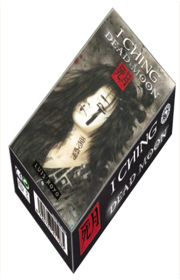
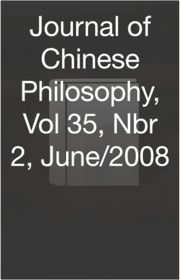
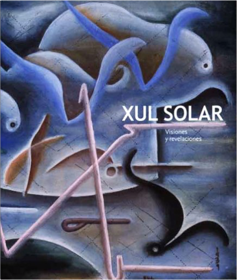

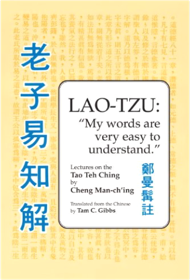
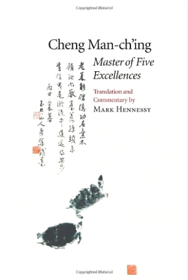

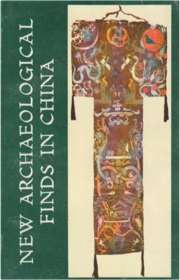
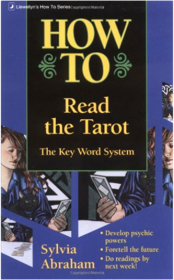
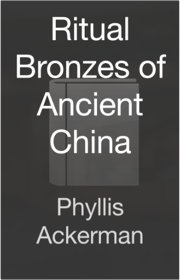
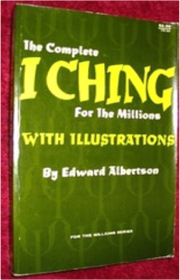

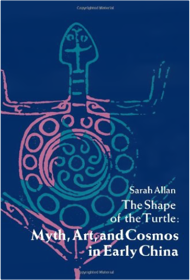
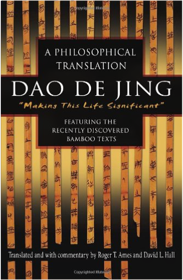
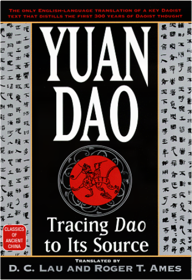
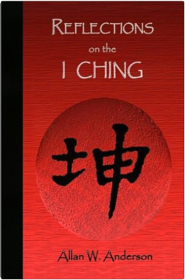
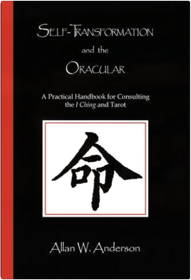
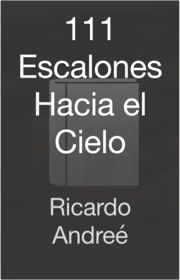
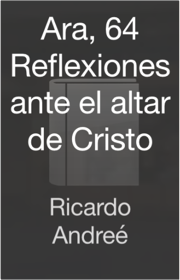
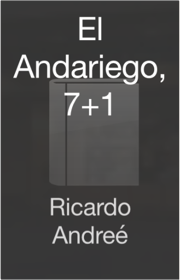
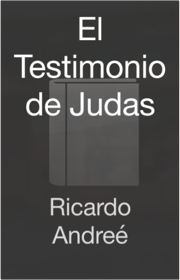
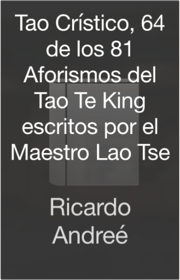
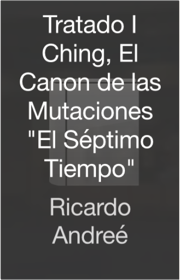
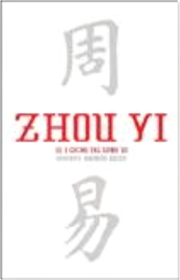
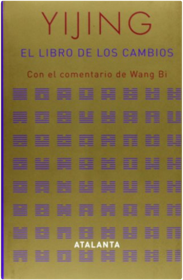
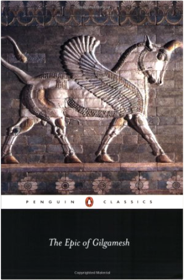
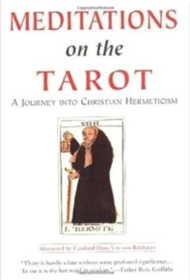
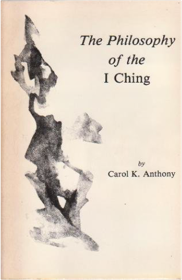
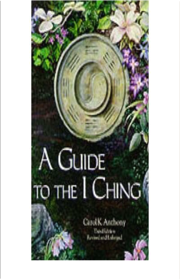
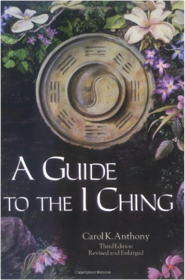
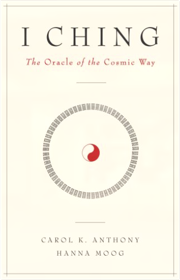
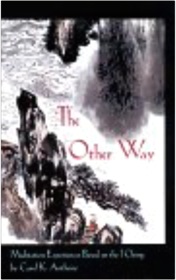
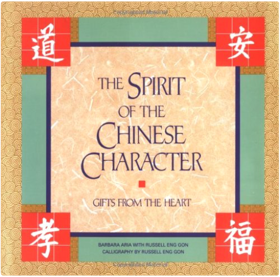
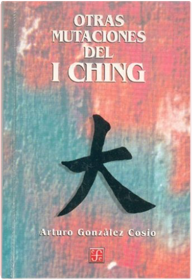
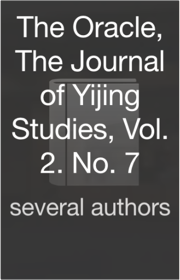
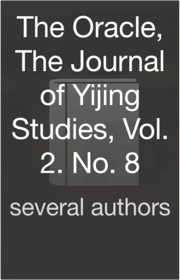
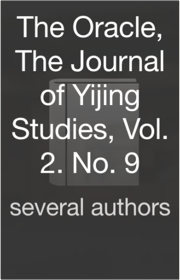
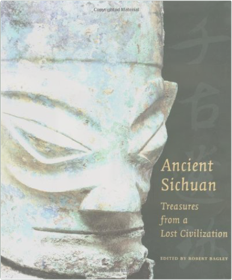
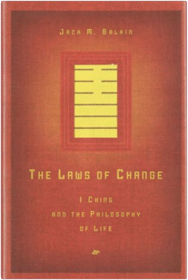
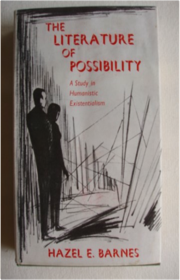
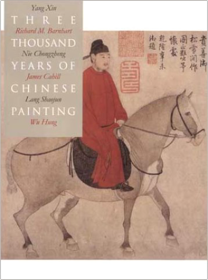
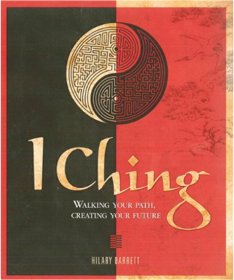
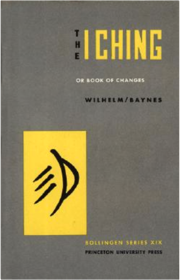
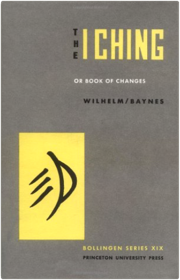
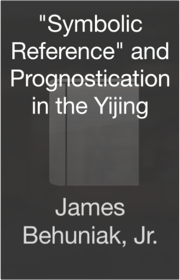
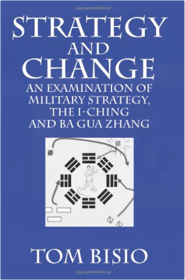
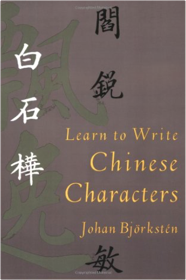
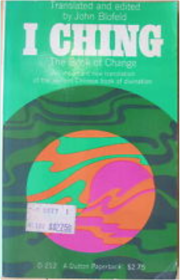
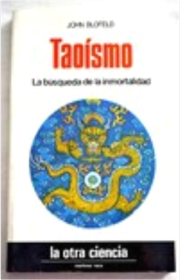
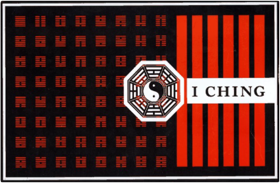
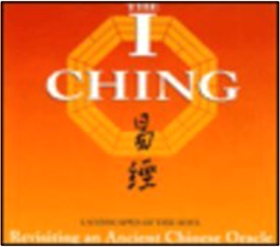
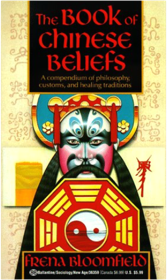
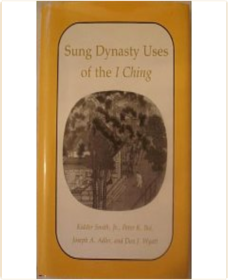
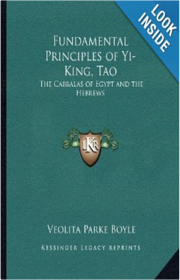
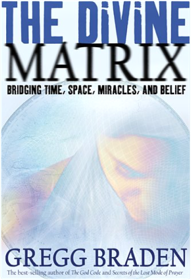
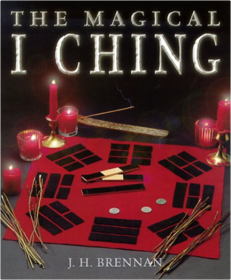
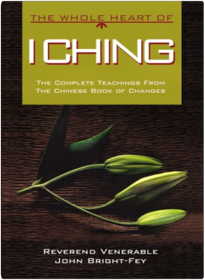
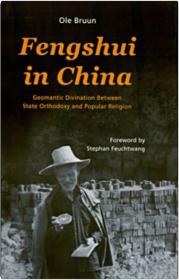
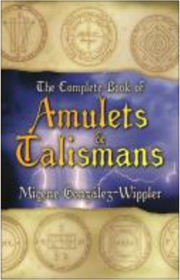
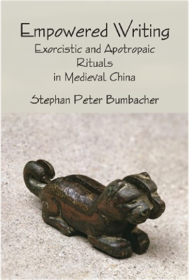

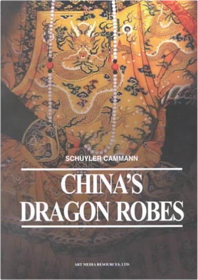

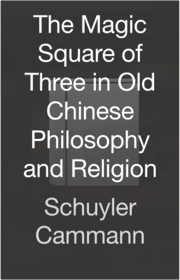
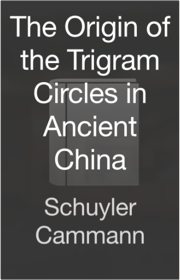
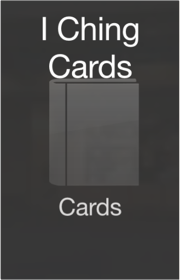
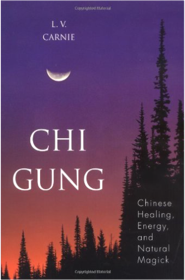
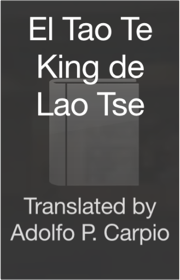
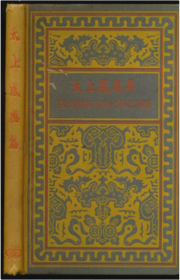
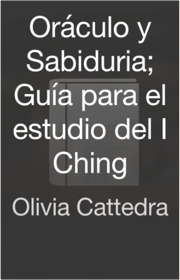
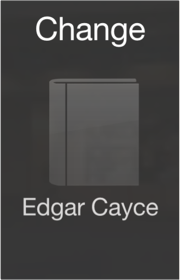
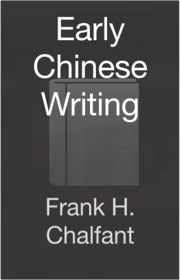
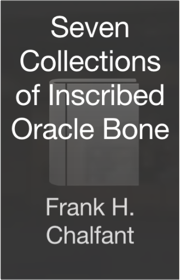
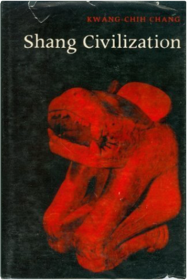
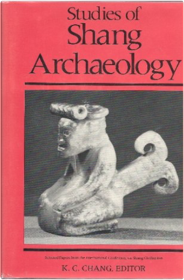
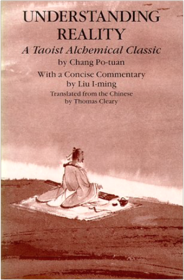
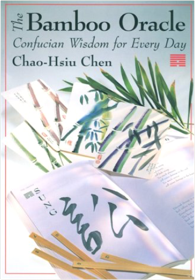
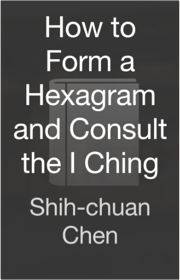
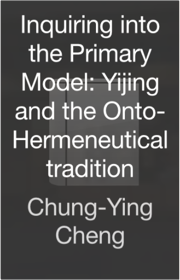
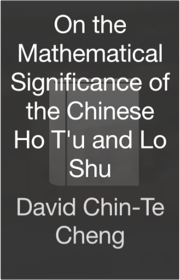
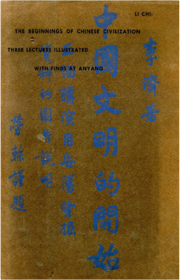
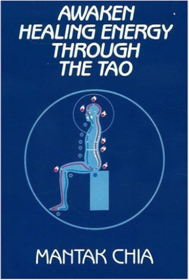
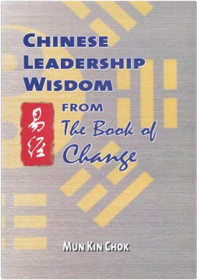
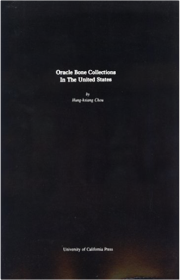
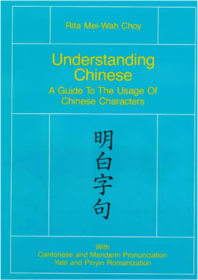
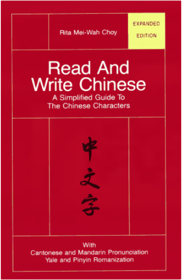
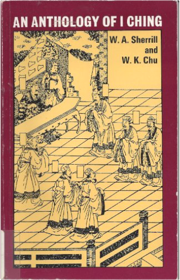
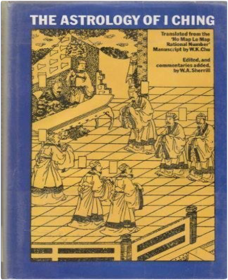
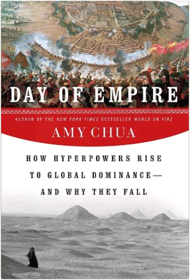
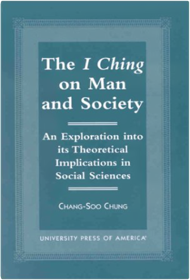
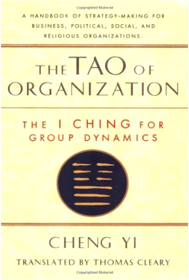
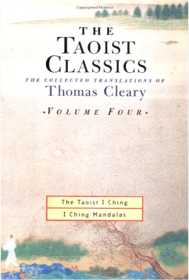
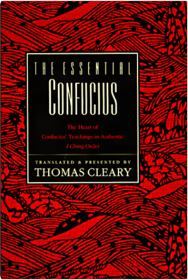
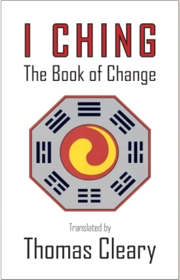
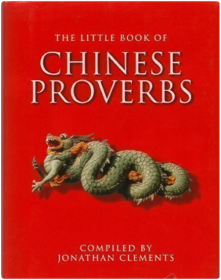
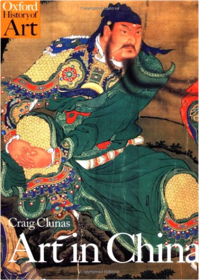
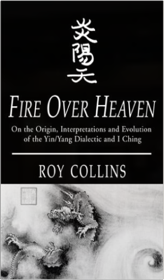
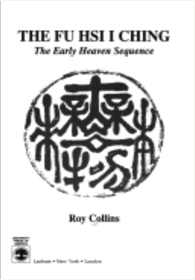
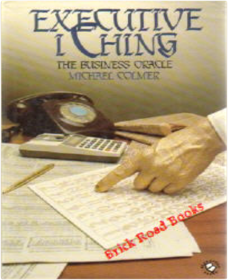
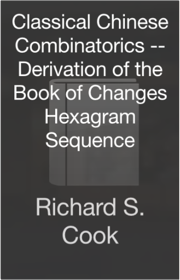
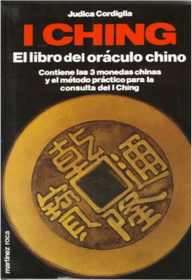

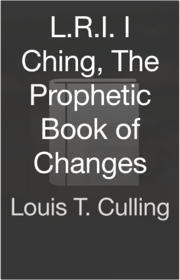
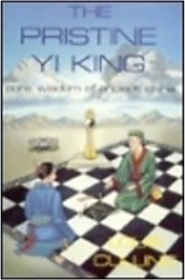
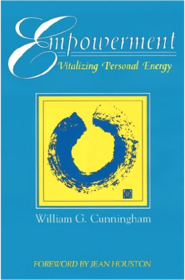
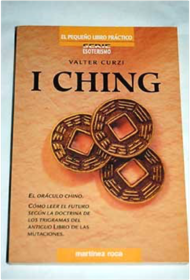
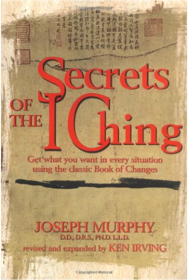
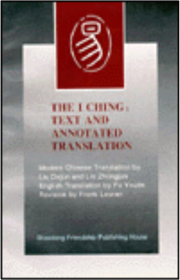
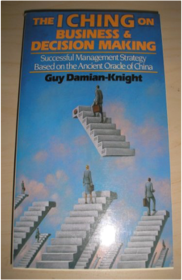
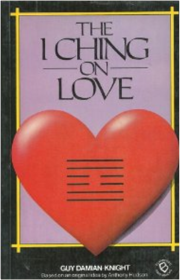
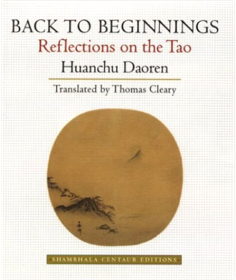
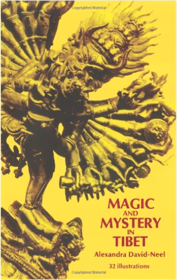
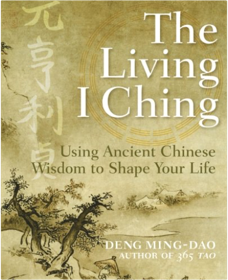
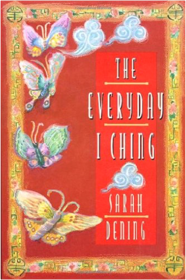
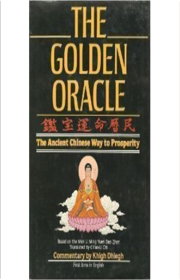
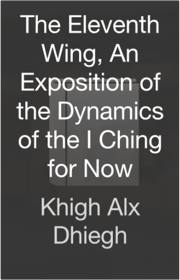
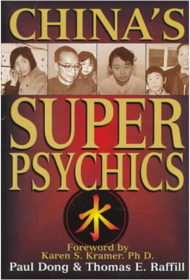
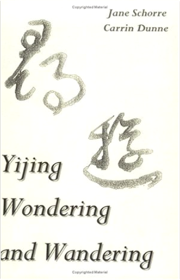
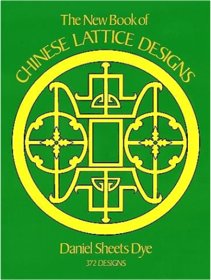
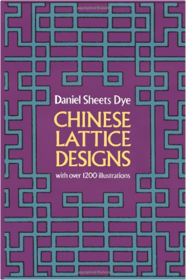
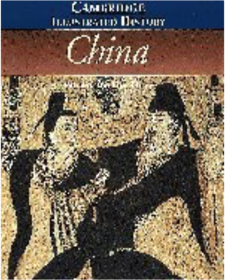
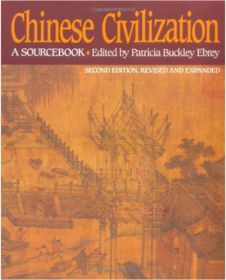
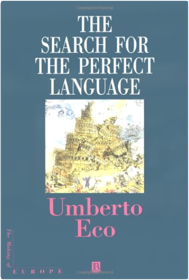
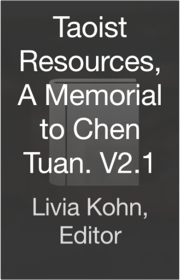
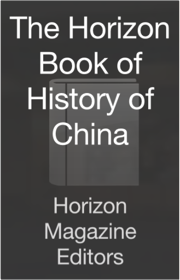
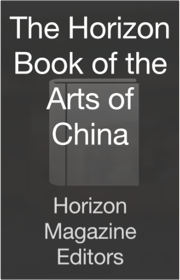
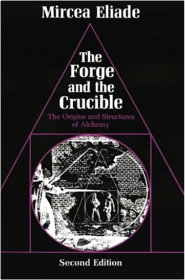

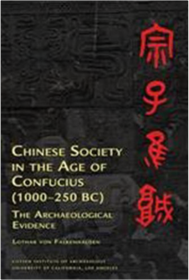
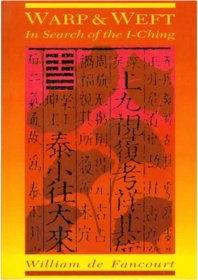
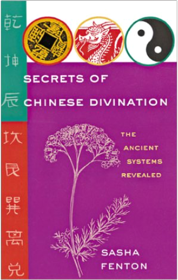
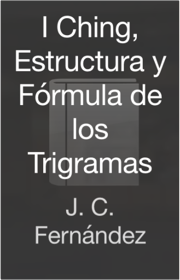
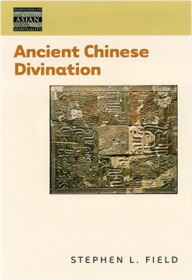
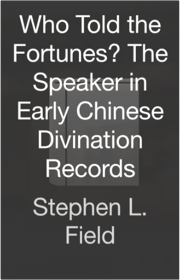
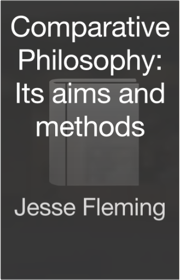
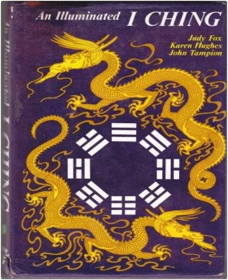
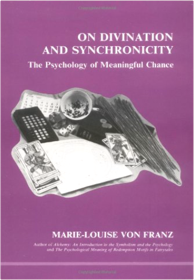
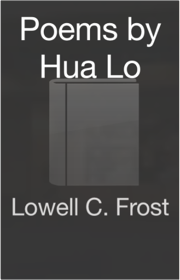
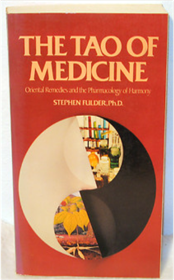
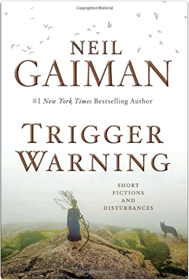
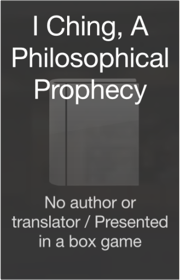
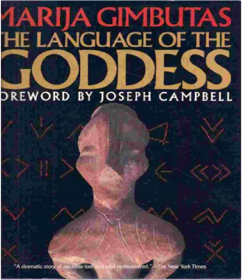
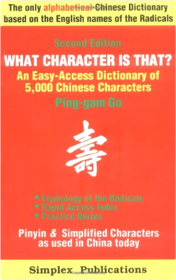
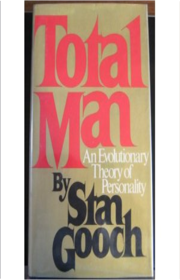
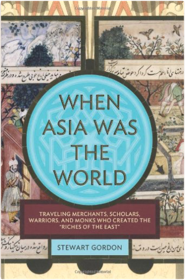
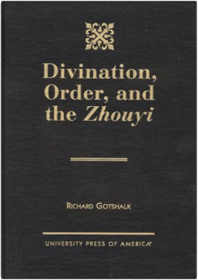
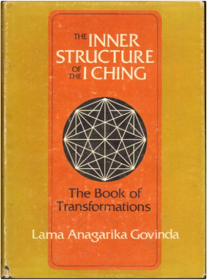
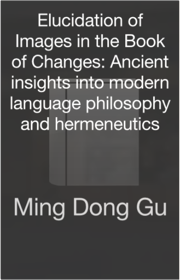
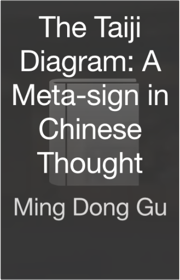

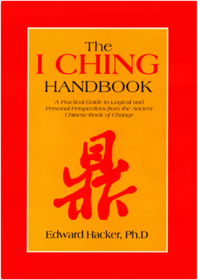
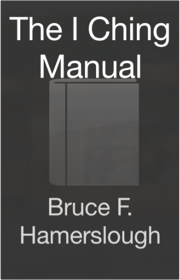

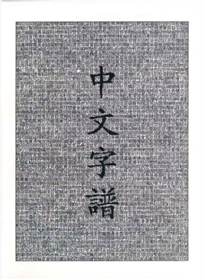
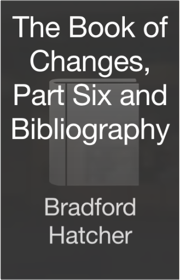
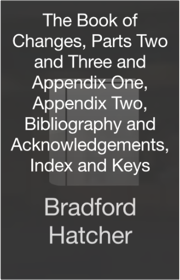
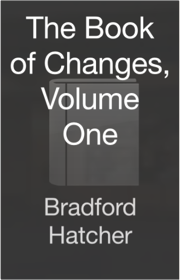
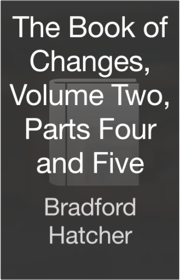
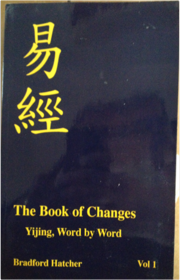
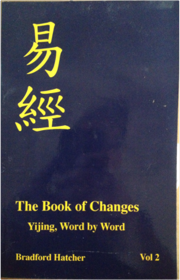
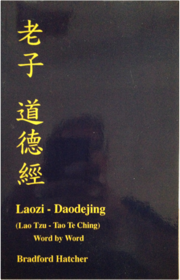
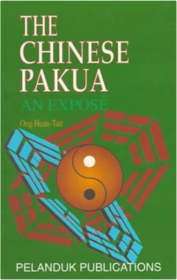
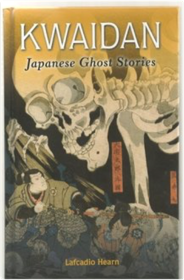
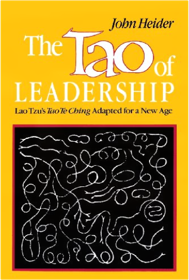
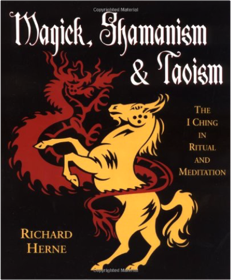
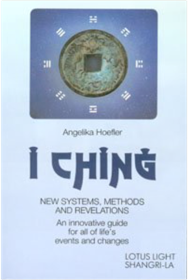
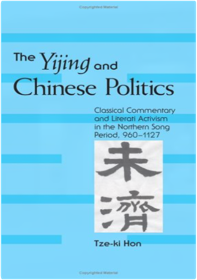
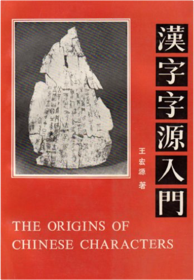
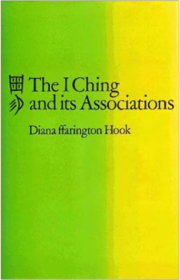
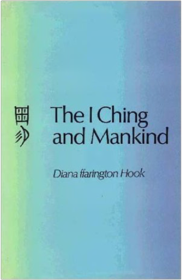
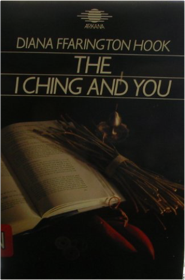
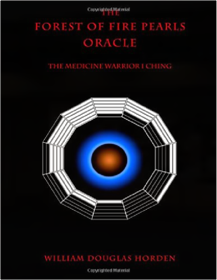
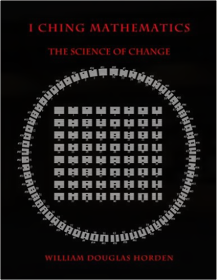
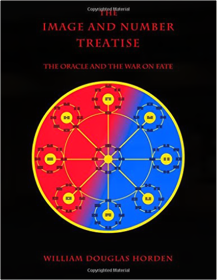
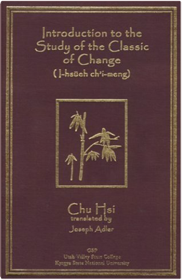
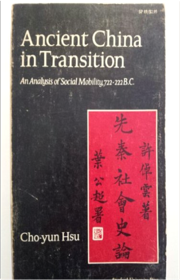
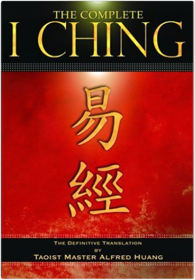
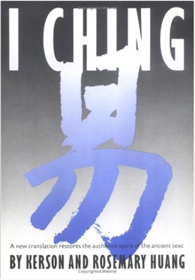
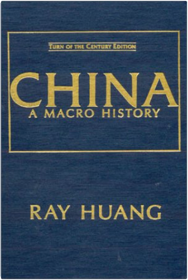
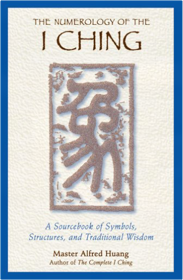
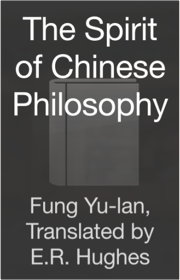
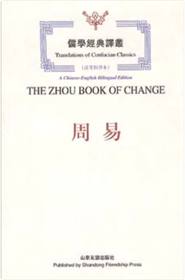

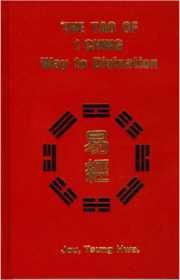
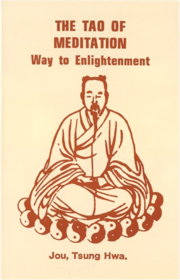
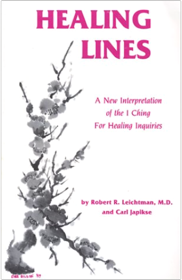
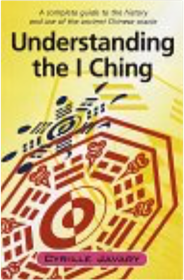
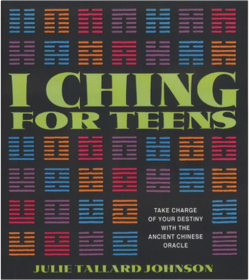
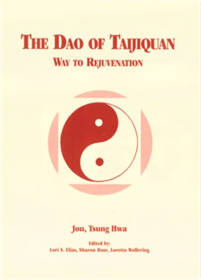

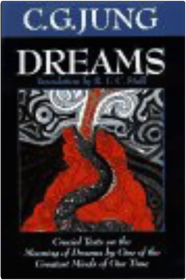
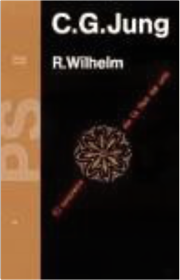
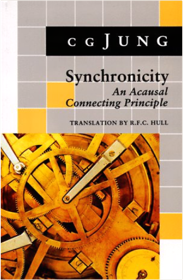
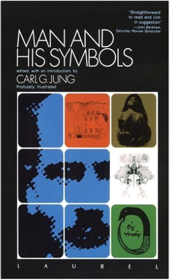
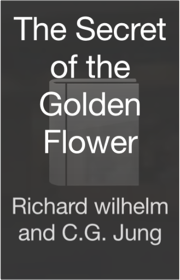
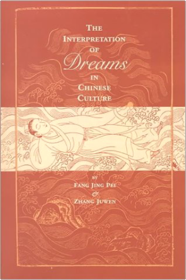
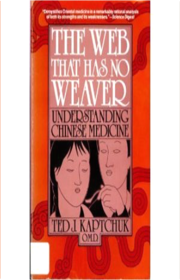
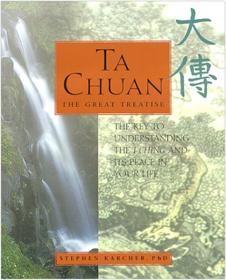
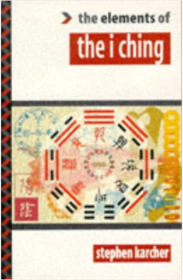
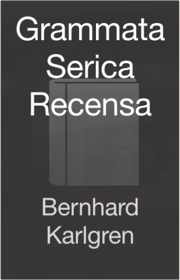
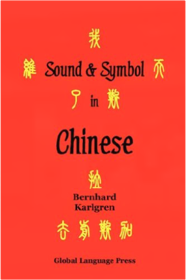
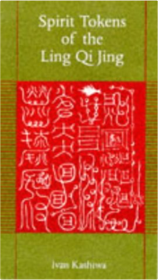

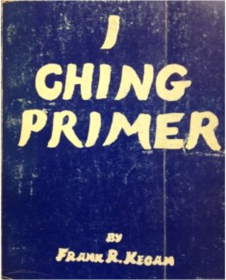
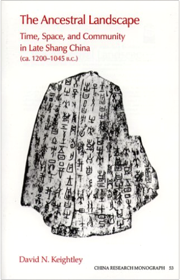

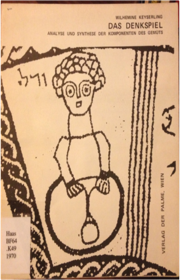
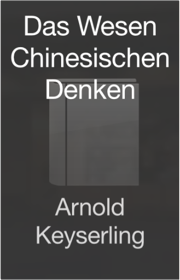
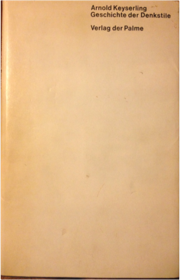
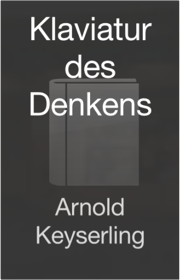
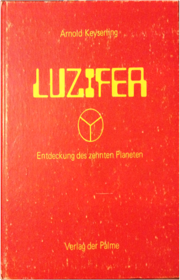

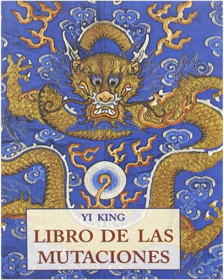
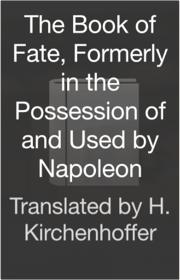
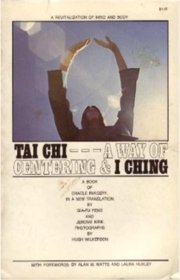
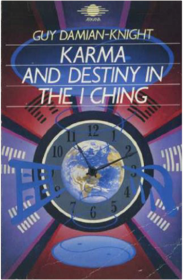
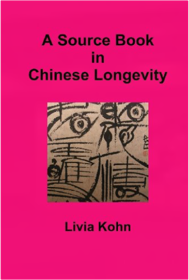
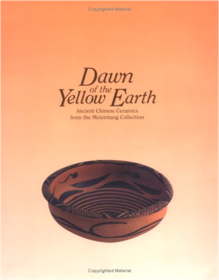
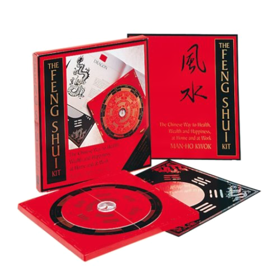
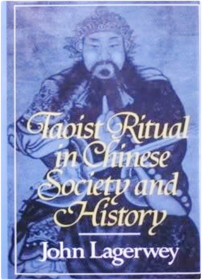
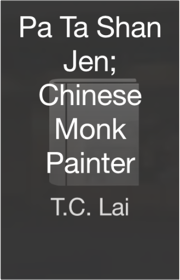
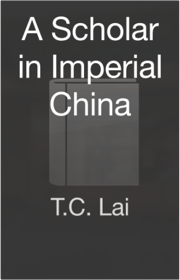
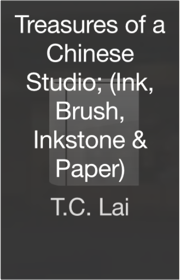
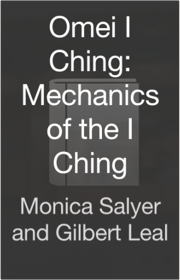
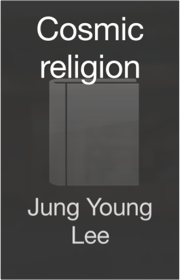
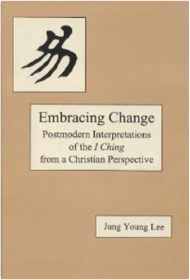
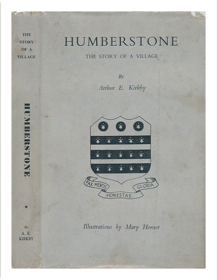

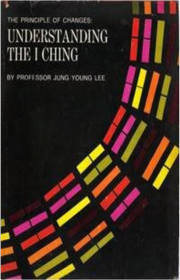
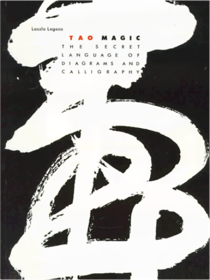
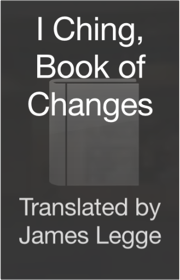
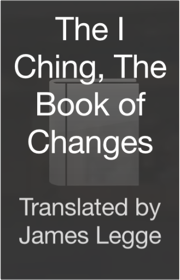
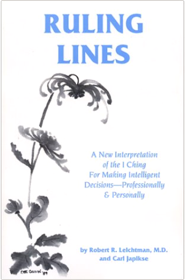
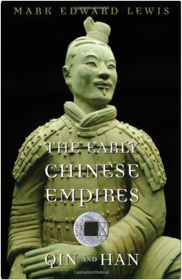
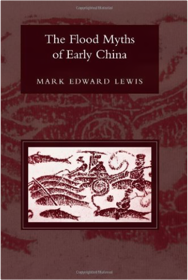
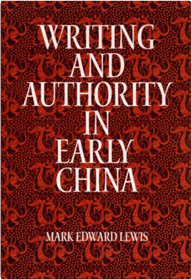
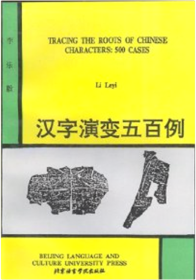
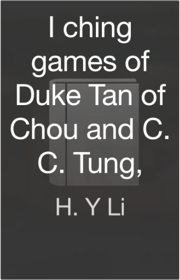
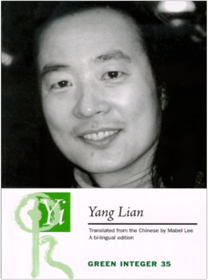
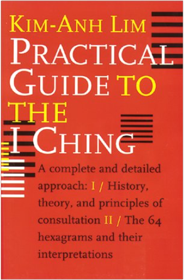
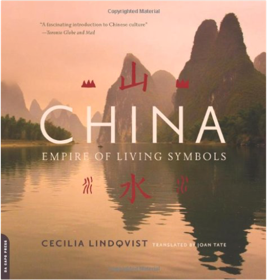
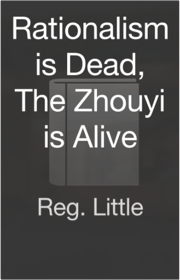
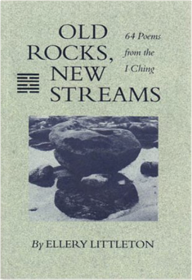
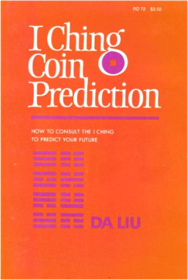
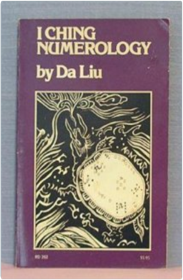

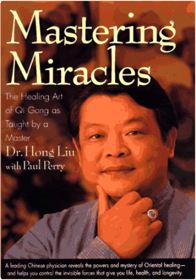
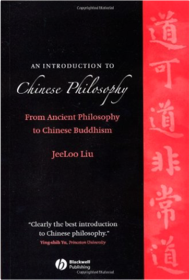
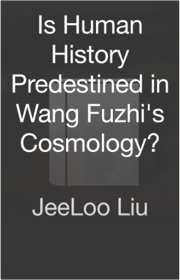
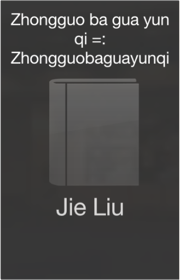
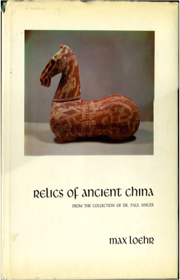
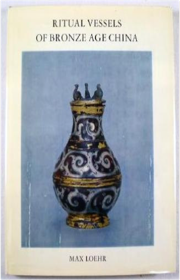
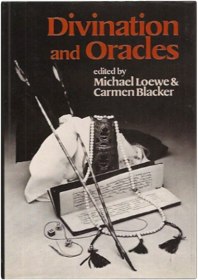
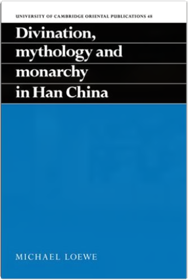
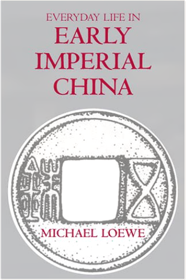
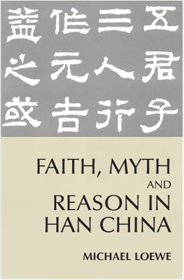
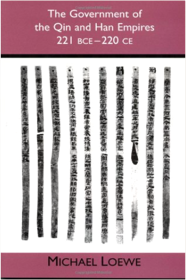
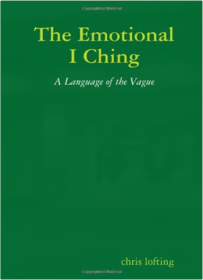

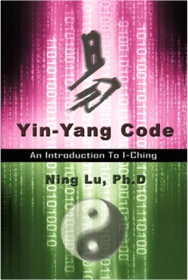
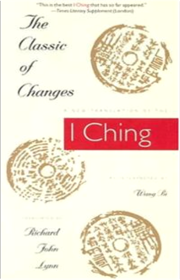
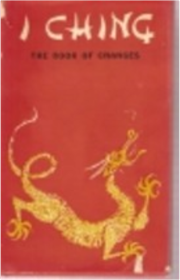
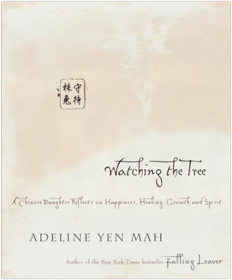
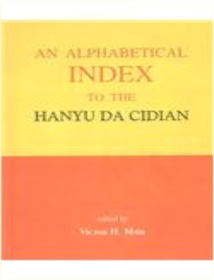
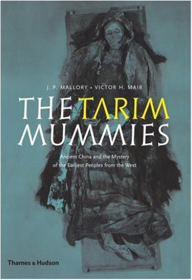
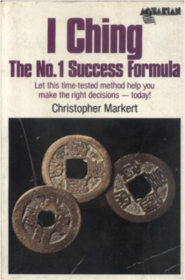
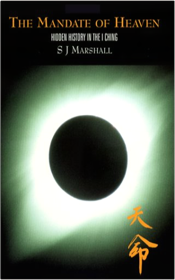

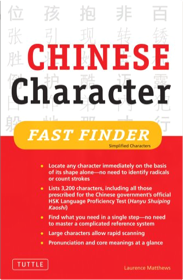
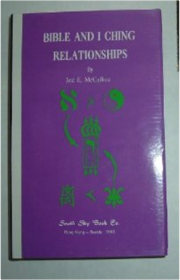
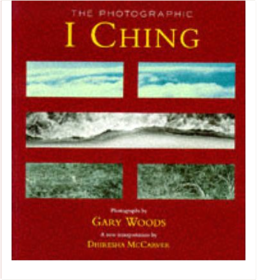
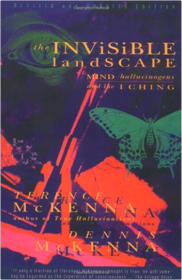
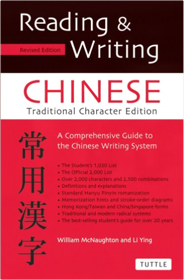
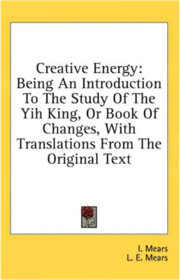
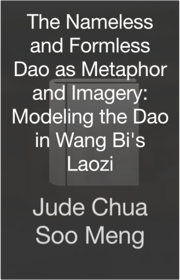
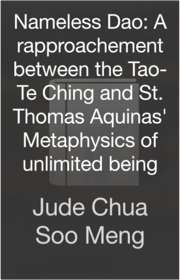
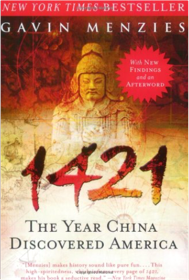
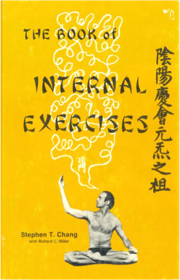
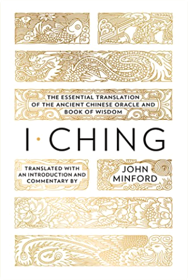
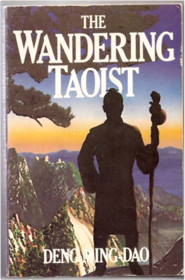
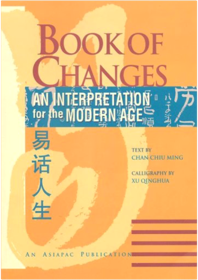
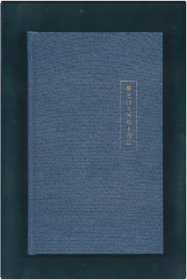
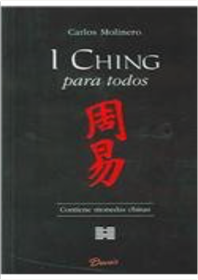
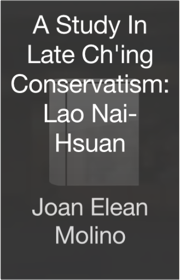
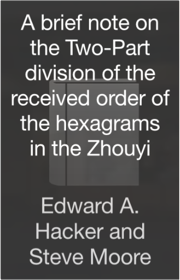
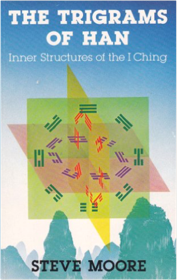
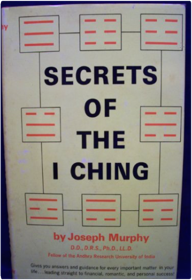
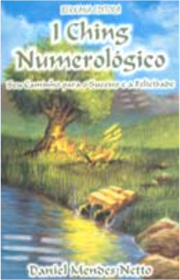
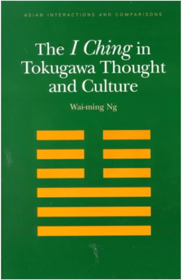
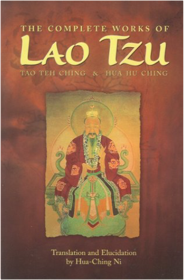
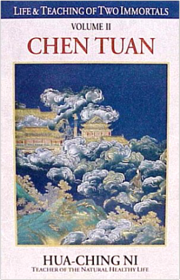
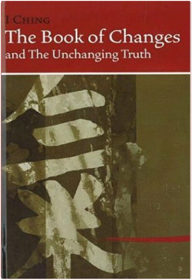
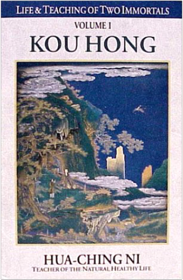
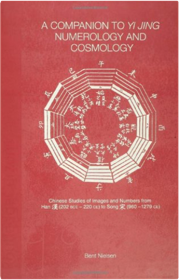
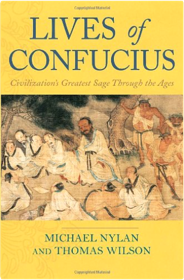

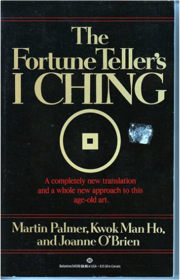
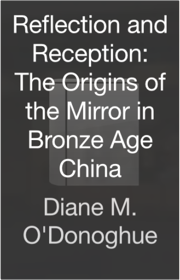
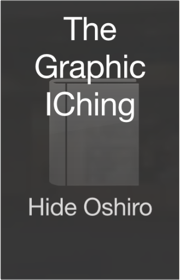
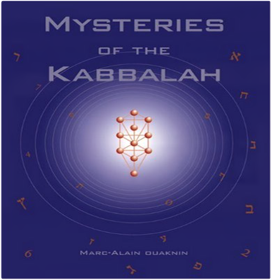
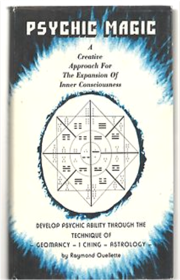
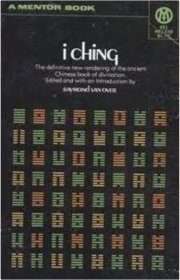
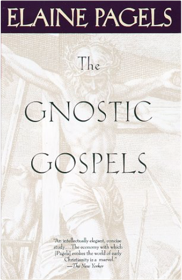
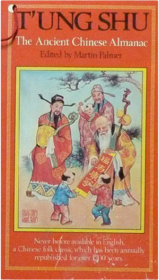
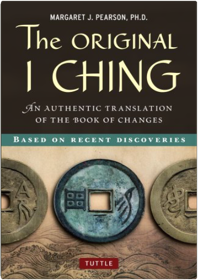
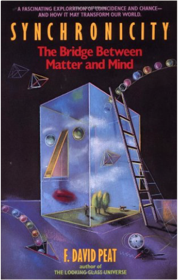

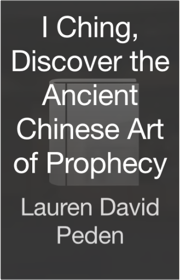
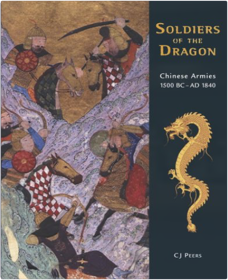
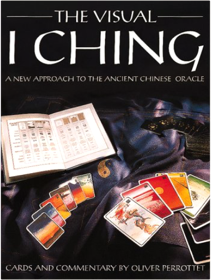
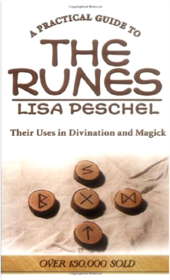
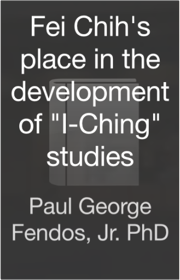
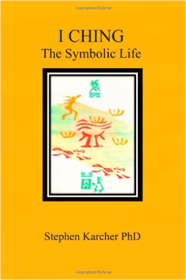
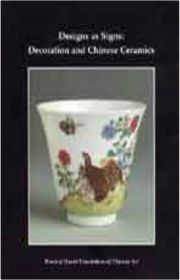
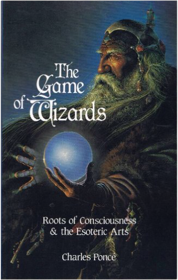
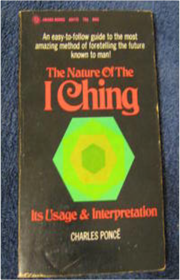
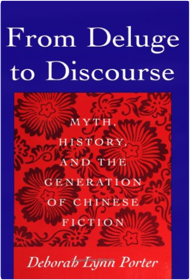
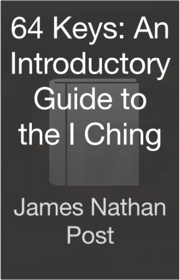
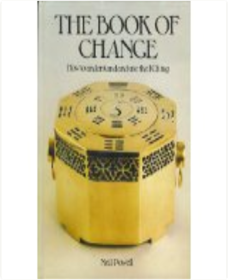
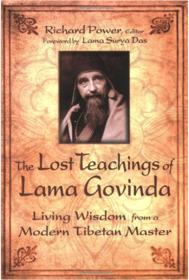
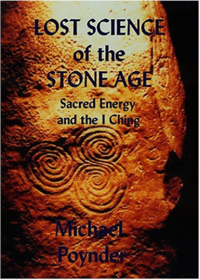
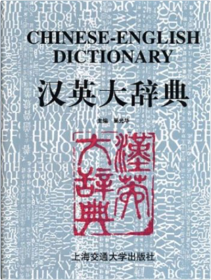
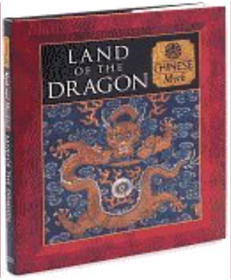
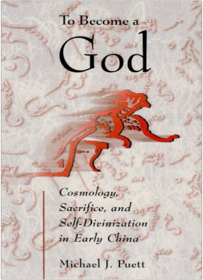
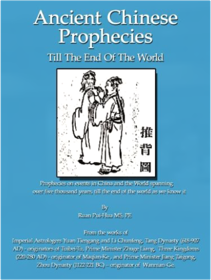
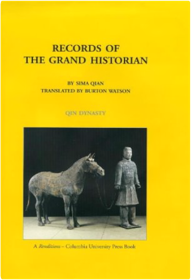

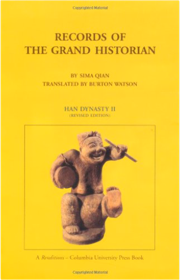

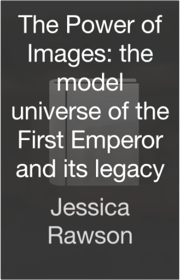
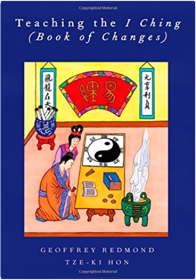
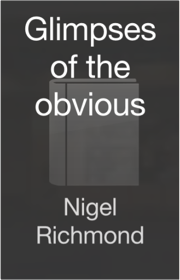
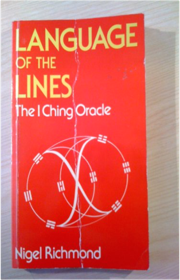
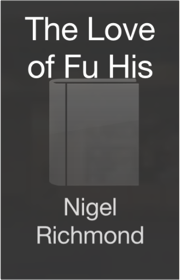
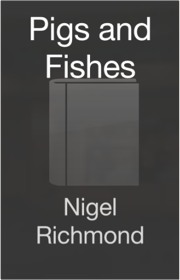
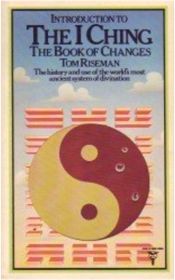
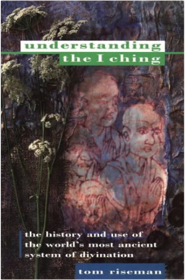
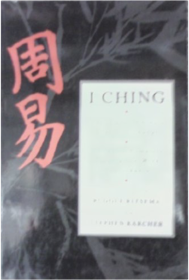
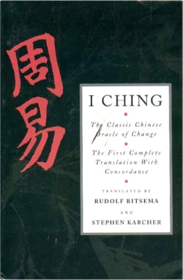
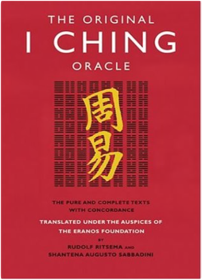
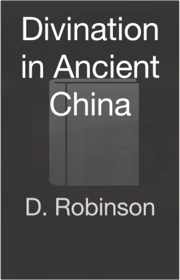
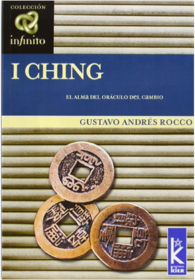
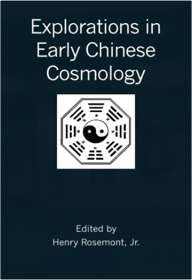
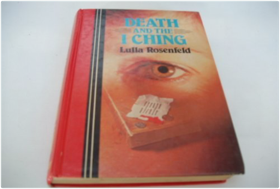

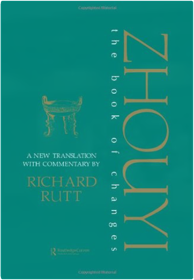
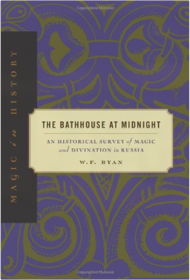
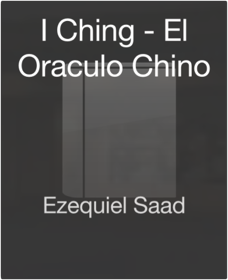
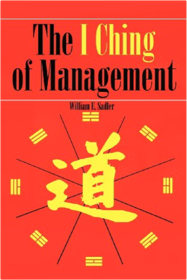
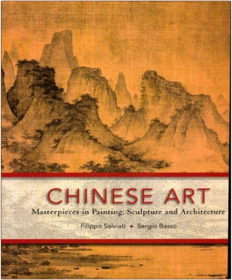
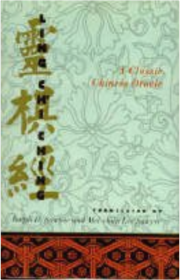
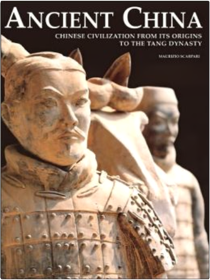
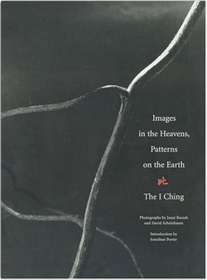
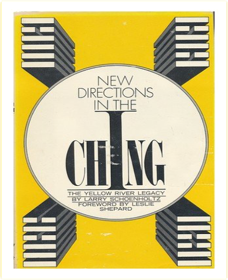
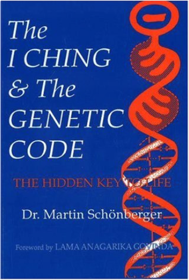
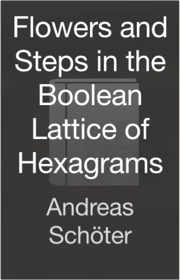
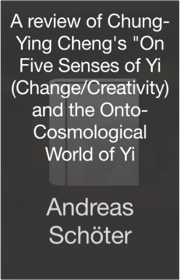
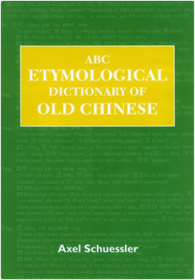
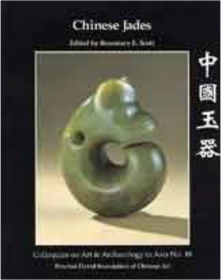
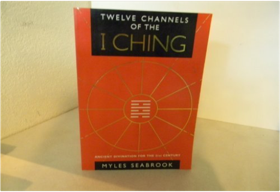
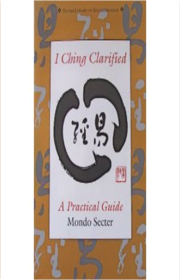
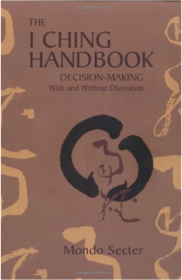

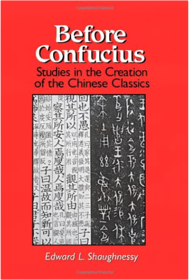
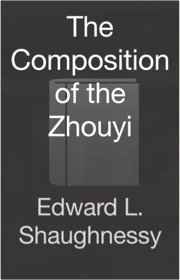
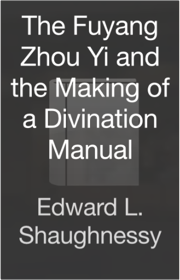
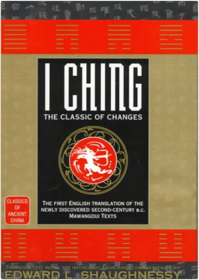
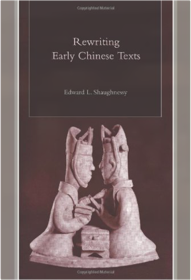
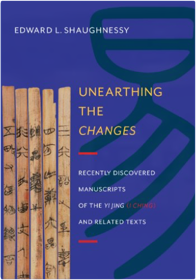
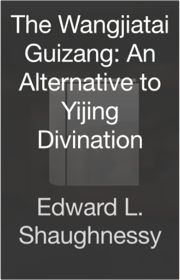
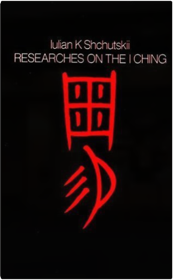

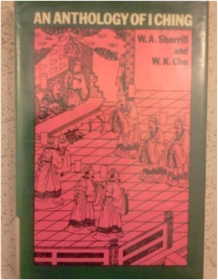
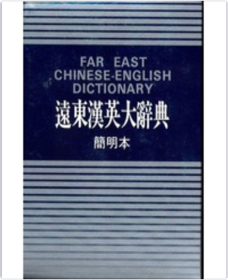
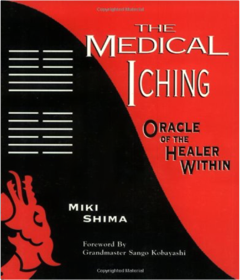
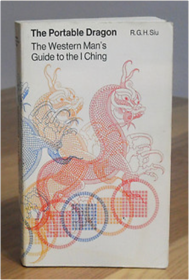
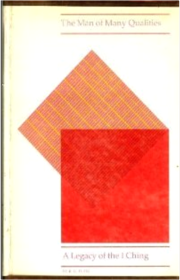
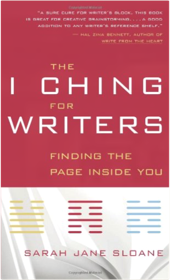
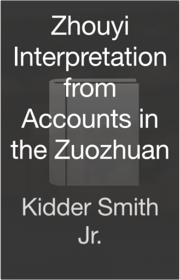
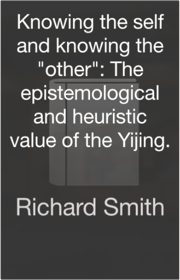
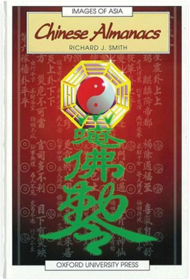
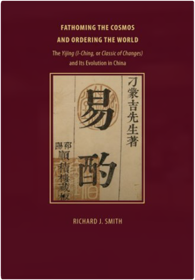
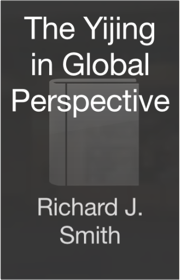
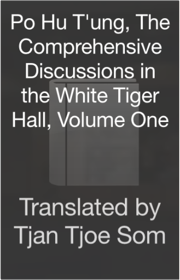
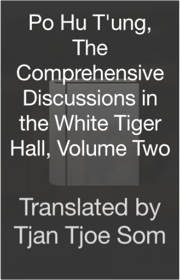
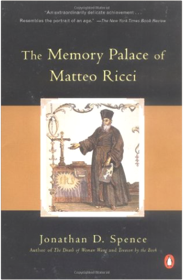
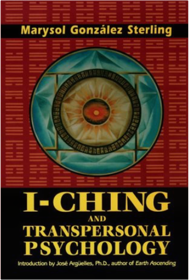
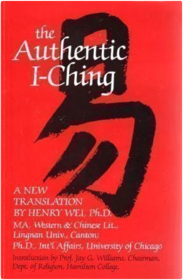
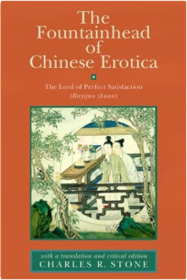
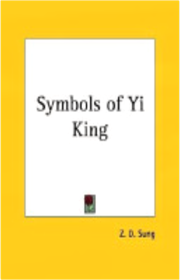
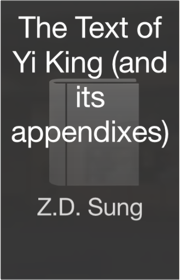
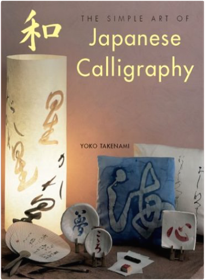
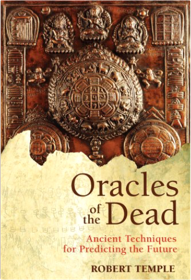
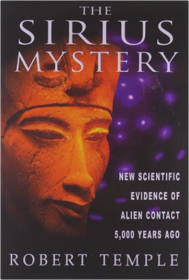
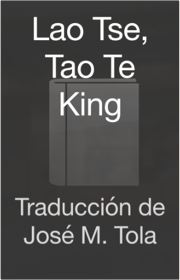
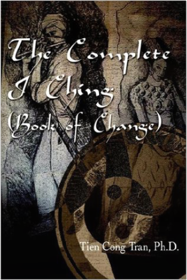
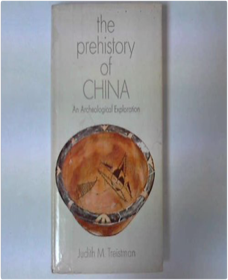
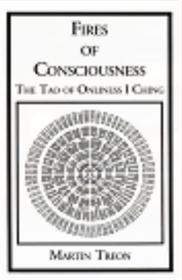
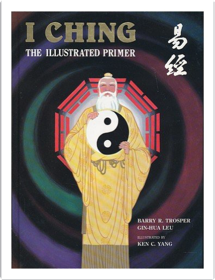
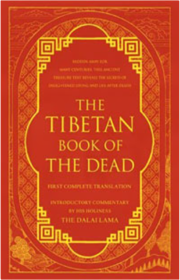
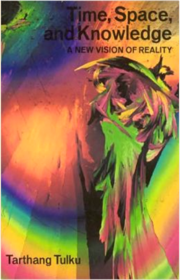
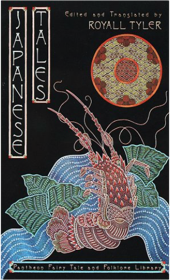
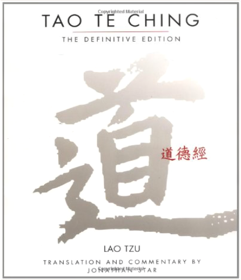
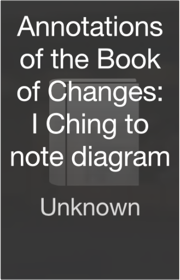
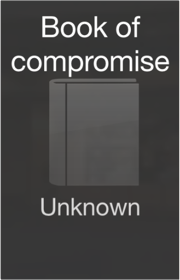
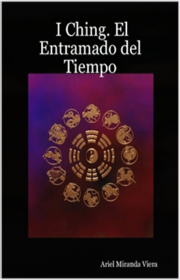
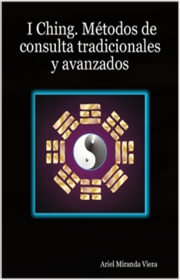
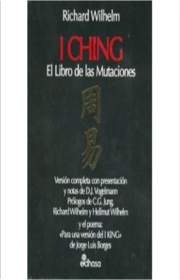
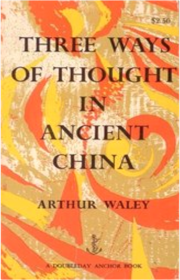
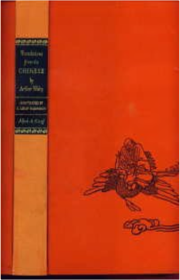
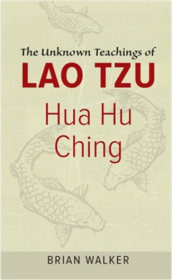
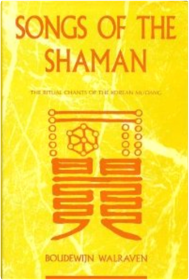
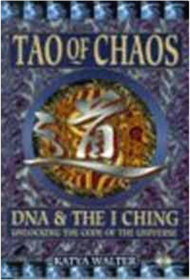

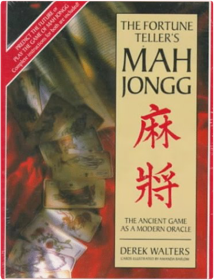
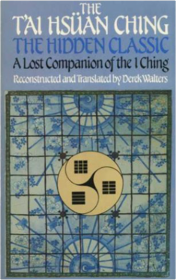
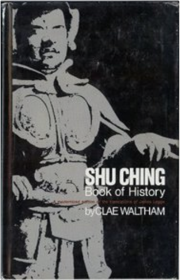
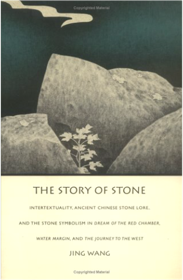
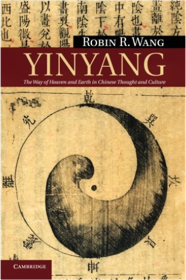

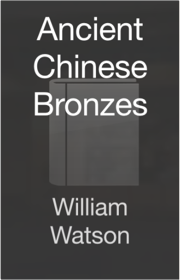
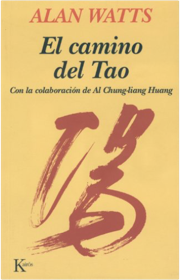
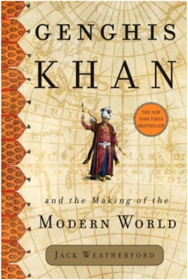
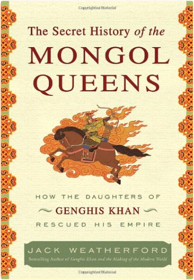
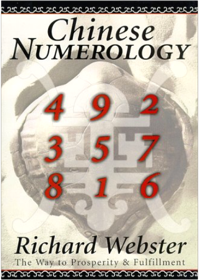
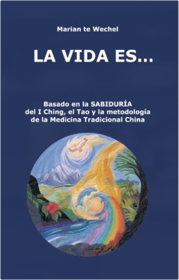
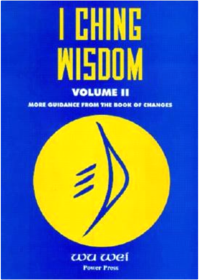
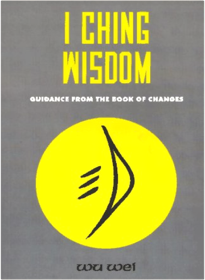
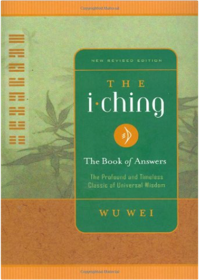
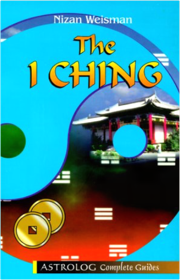

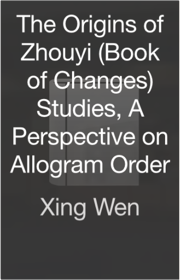
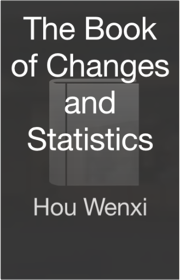
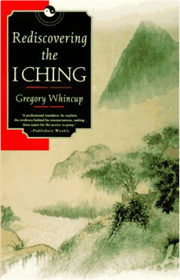
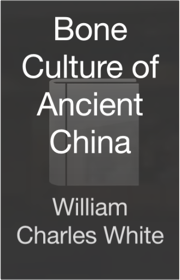
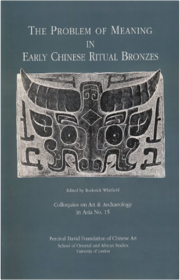
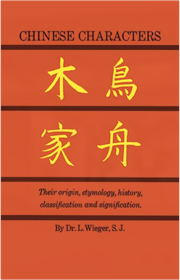
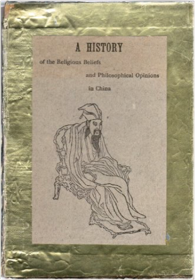
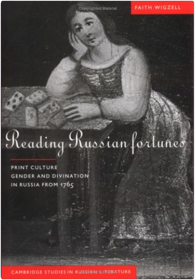
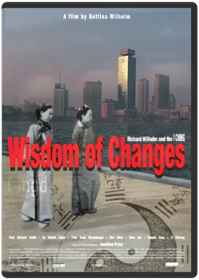
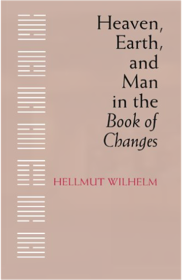
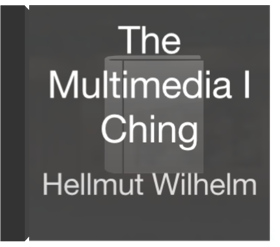
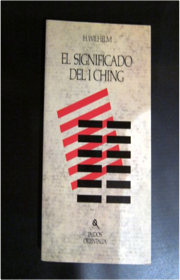
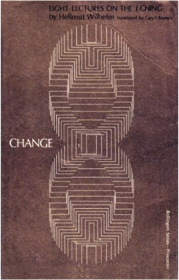
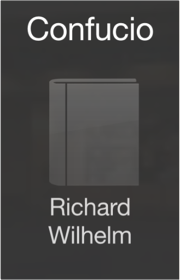

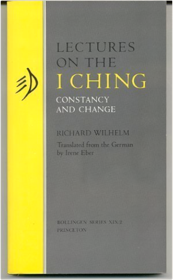
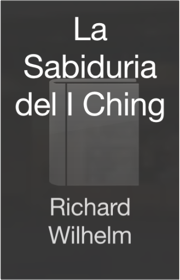
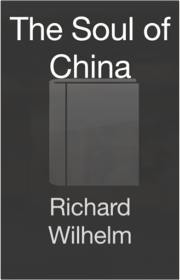
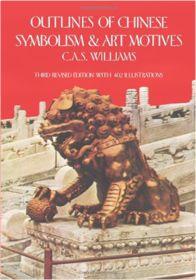
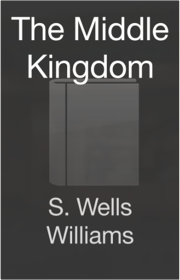
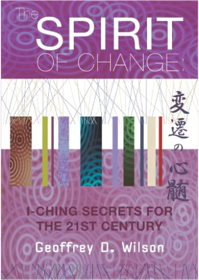
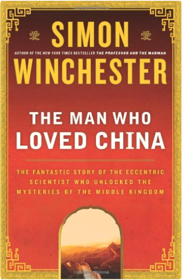
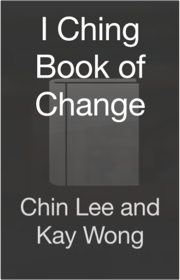
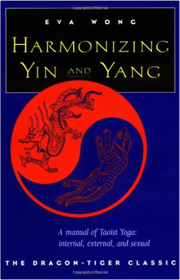


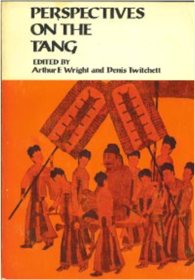
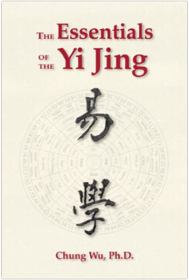
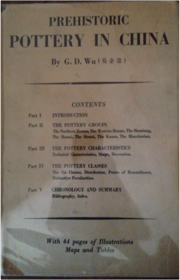
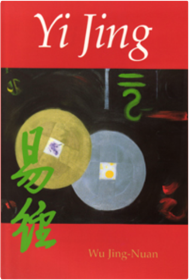
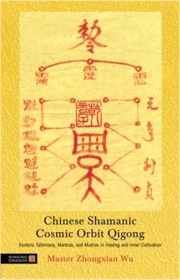
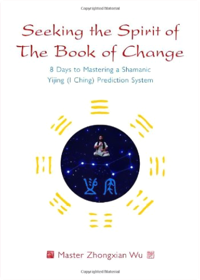
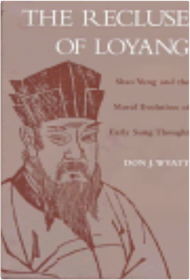
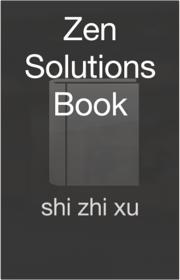
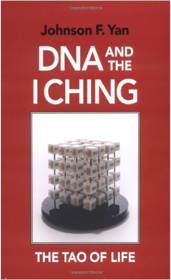
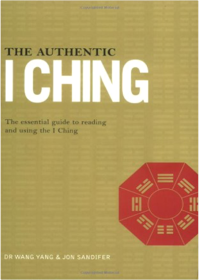
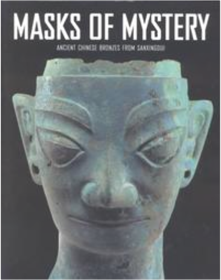
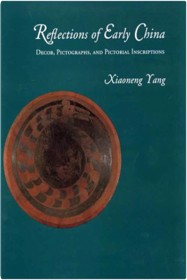
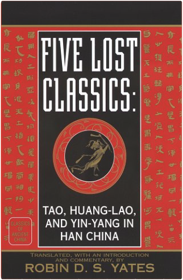
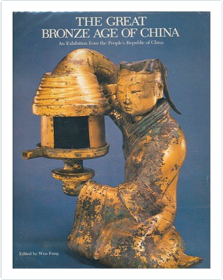

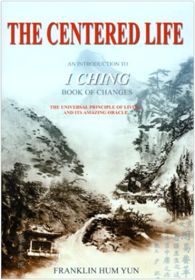
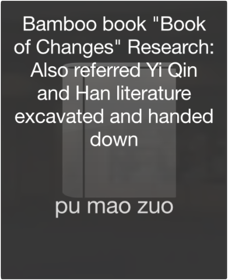

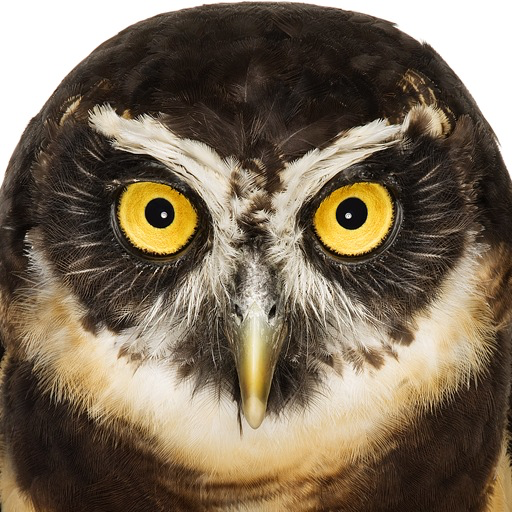


 Made with Delicious Library
Made with Delicious Library